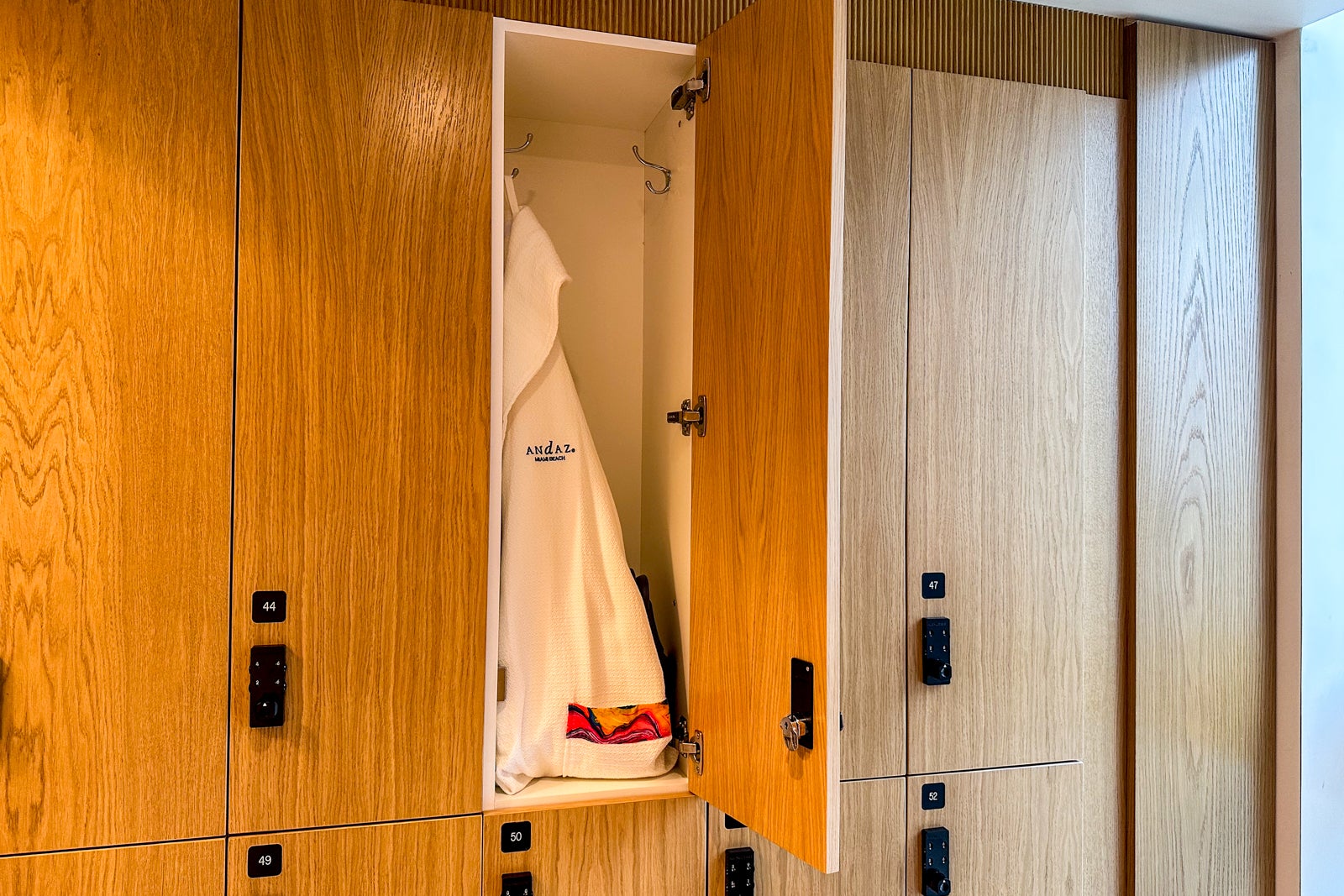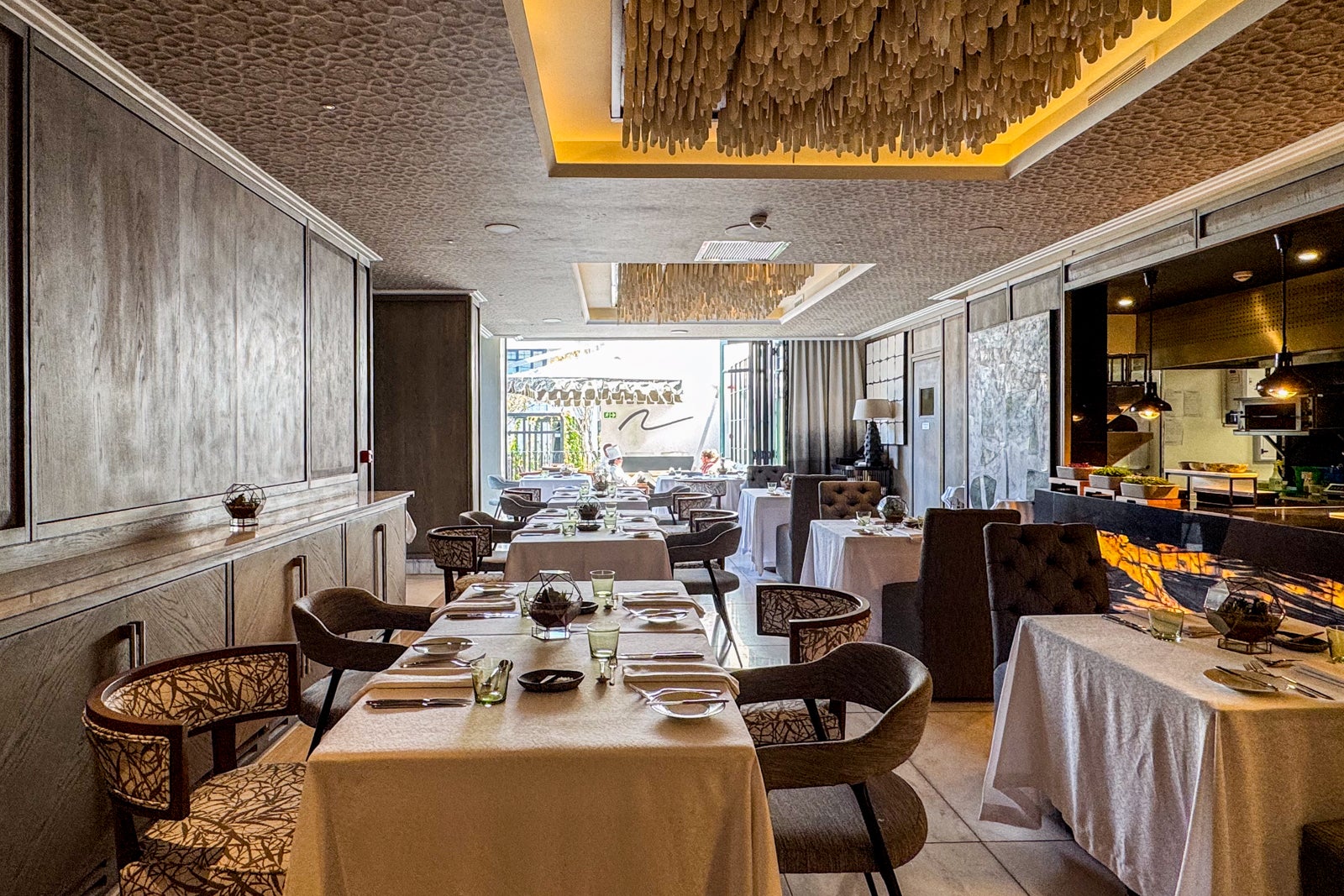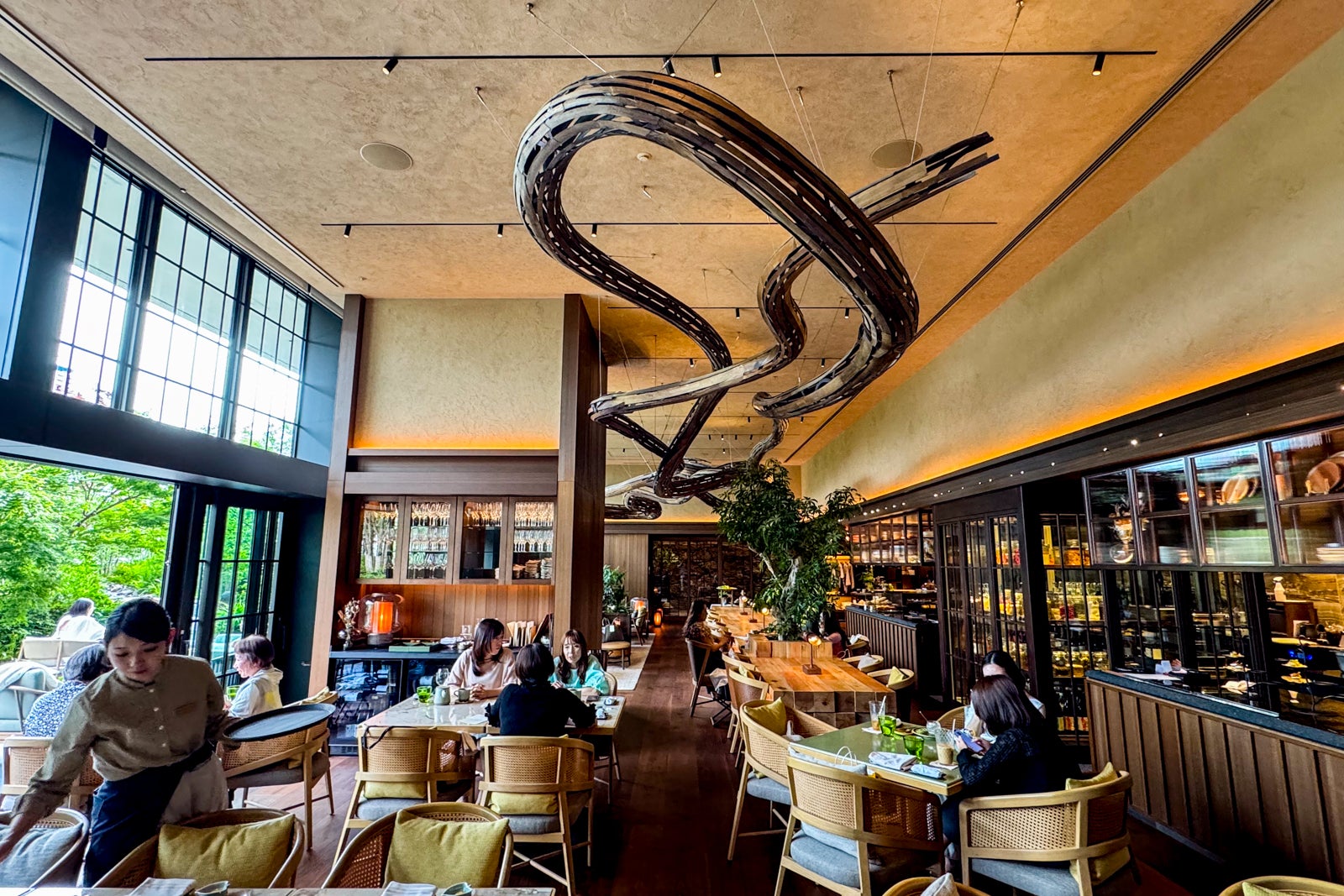Forget Tokyo. Osaka is stealing the spotlight! This vibrant metropolis, and the captivating Kansai region it anchors, isn’t just on the rise – it’s rocketed onto our 2025 must-see destinations list. Prepare to be captivated.
Osaka is buzzing! Forget just World Expo 2025; the city’s exploding with hospitality magic. Fresh off the heels of last year’s dazzling Four Seasons Hotel Osaka debut, two more sensational hotels have just swung open their doors in the last two months. Osaka’s not just hosting the future, it’s building it, one luxurious stay at a time.
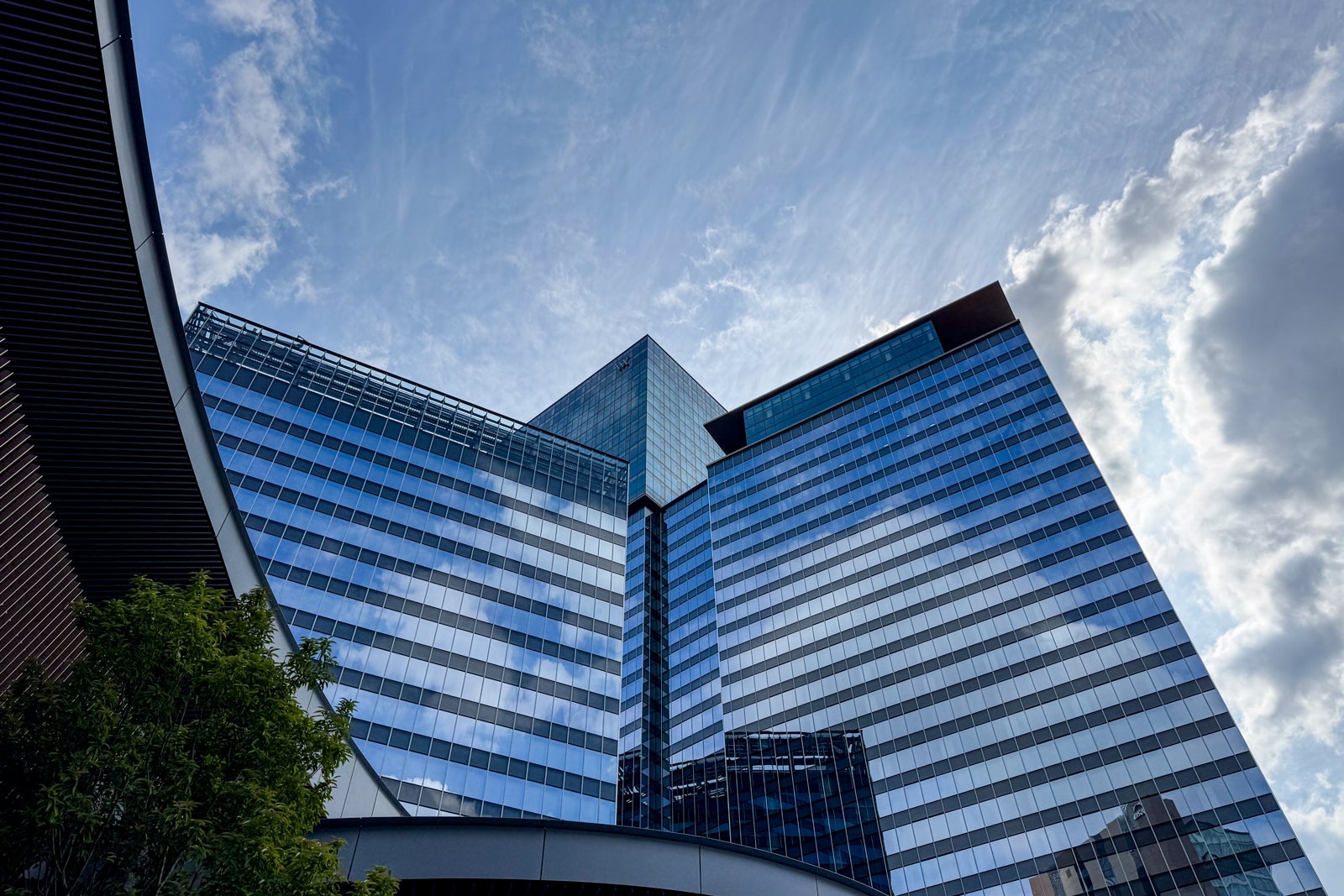
ERIC ROSEN/THE POINTS GUY
Imagine this: April 2025. Umekita, Osaka, pulsates with anticipation. Rising above the vibrant district, a beacon of unparalleled luxury emerges – the Waldorf Astoria Osaka. Forget simply “debuting;” this is a grand entrance, a statement of refined elegance just north of Osaka’s historical heart.
Be among the first to experience the Waldorf Astoria’s newest gem! Unlock insider tips and tricks for your unforgettable stay including how to snag a room using Hilton points. Your exclusive guide awaits.
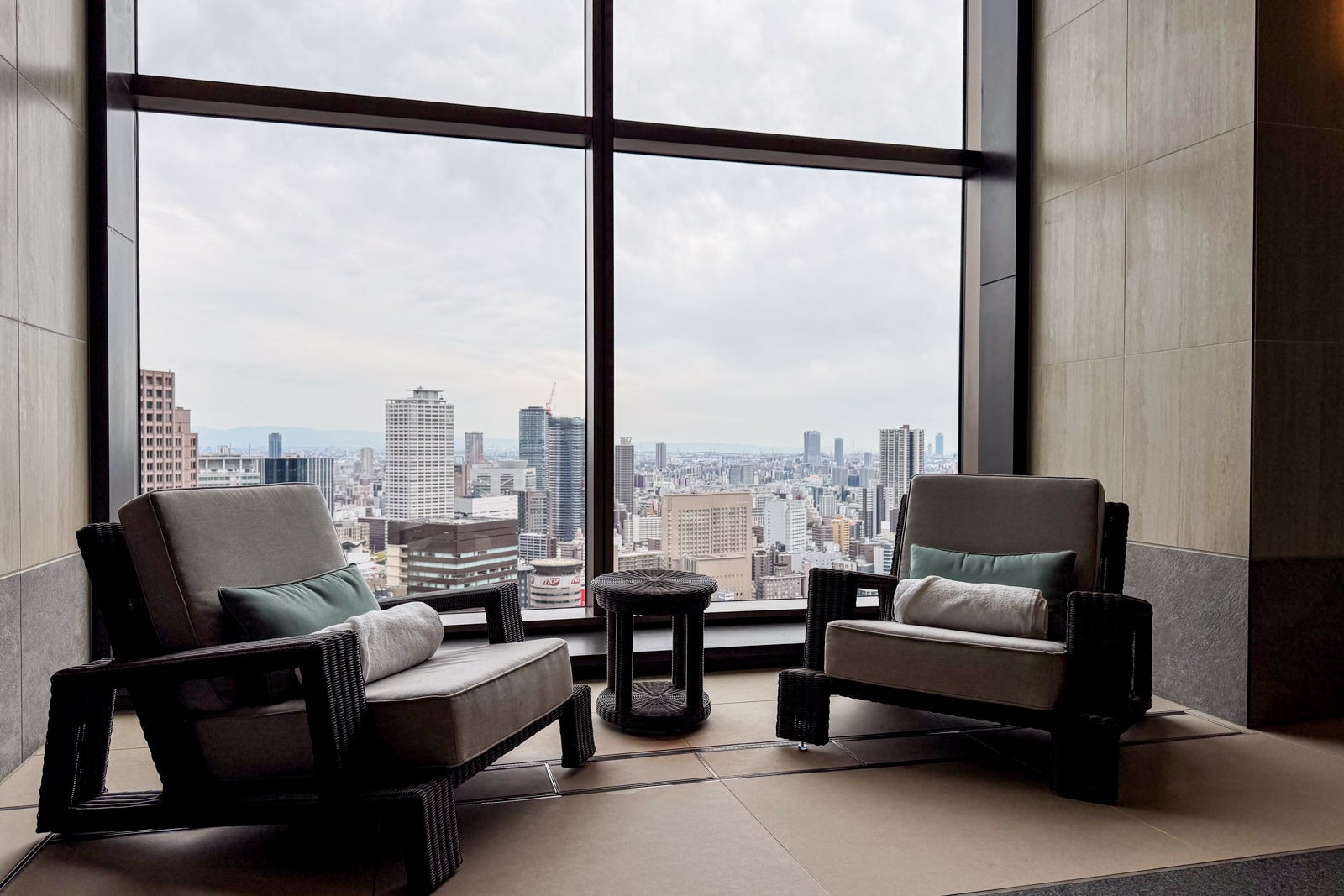
ERIC ROSEN/THE POINTS GUY
First impressions
While the ground-floor murals and bold ceramics command attention, prepare for a breathtaking ascent. On the 29th floor, a private viewing platform awaits, offering a bird’s-eye perspective of Peacock Alley. This isn’t just a lobby; it’s a resurrected legend, echoing the gilded age of the original Waldorf Astoria, where dashing gentlemen once paraded, hoping to catch the eye of discerning ladies.
Previous slide
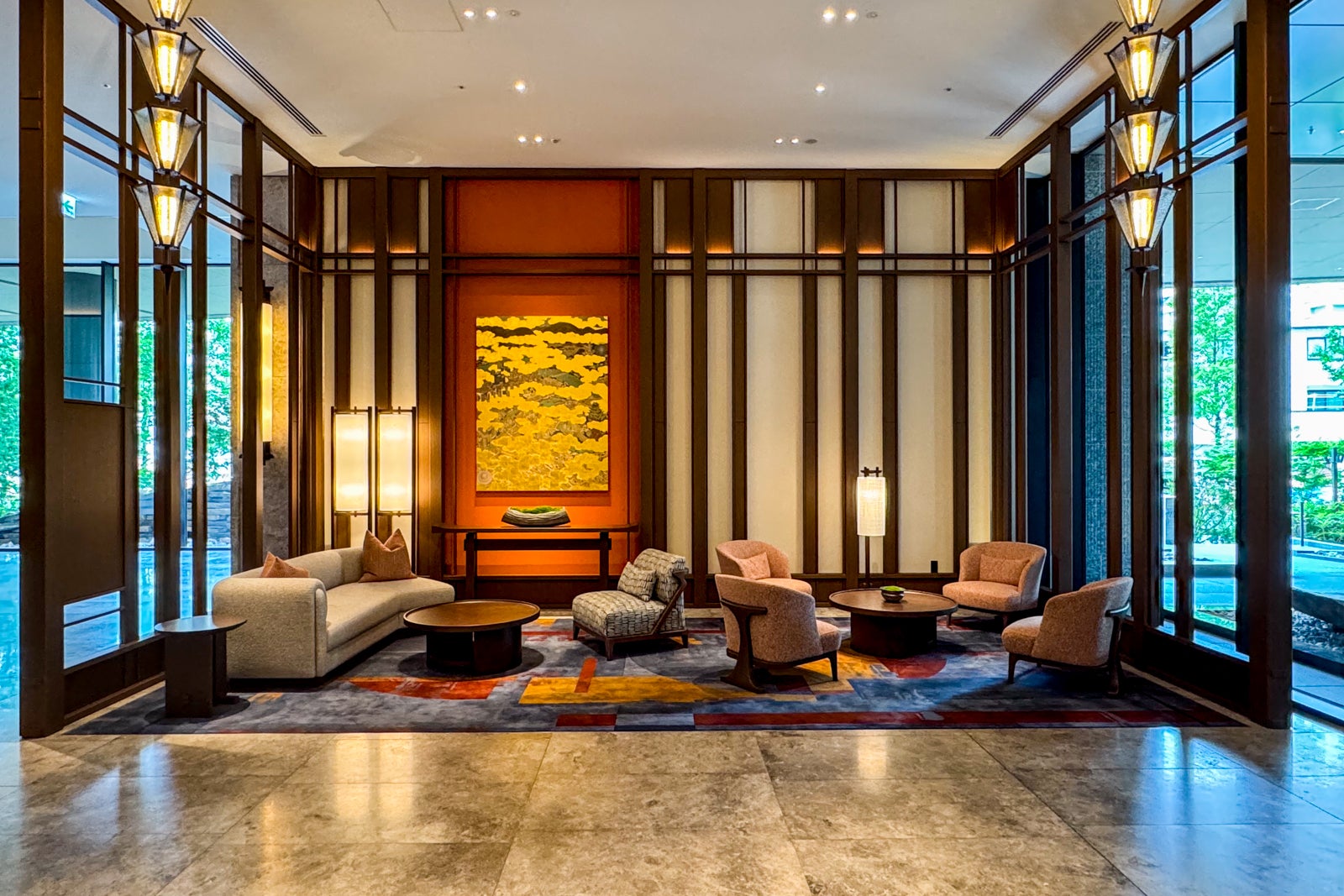
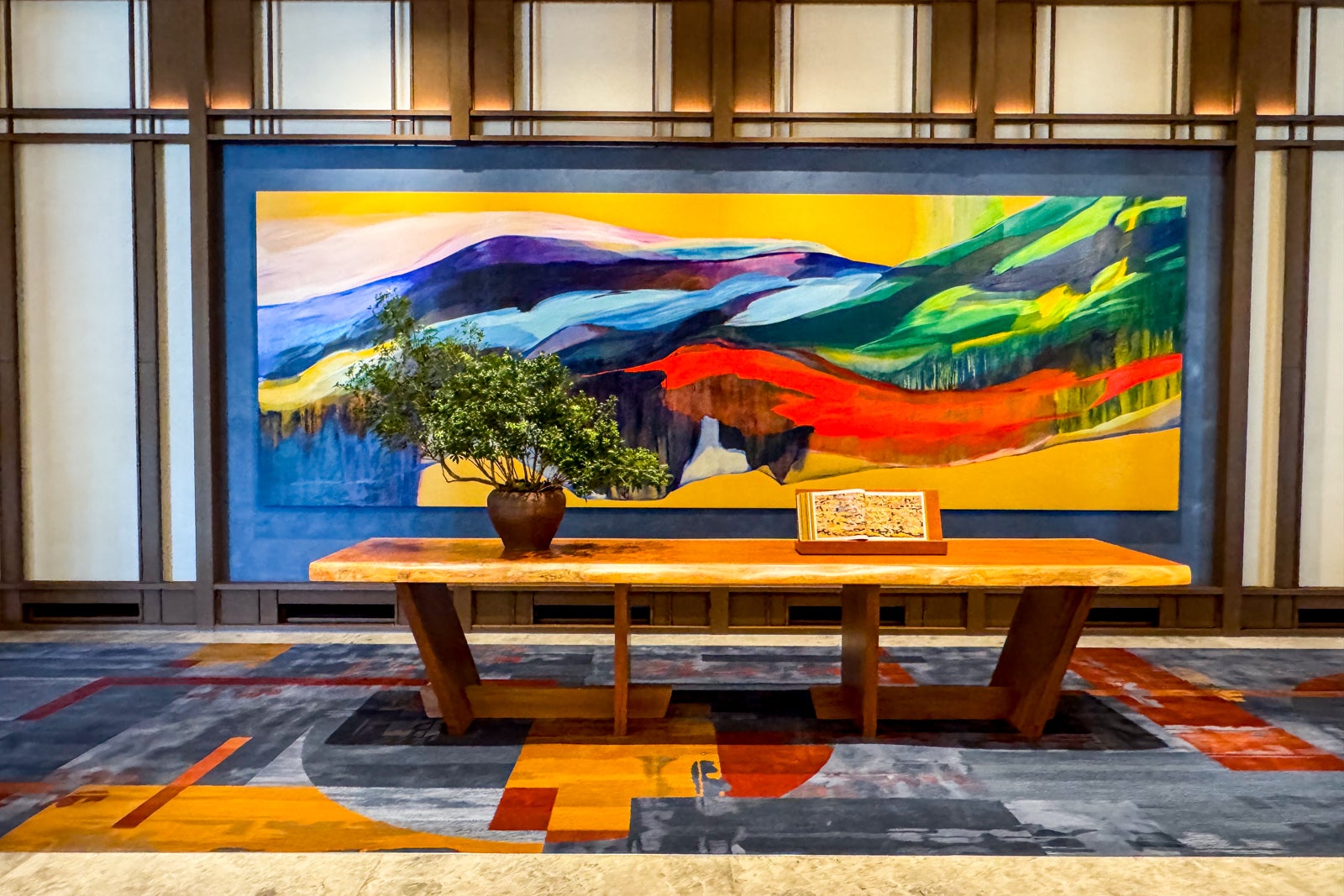
Next slide
1 of 2
ERIC ROSEN/THE POINTS GUY
0
1
Envision this: a triple-height sanctuary bathed in northern light, framed by the visionary hand of André Fu (think Hong Kong’s Upper House, the serene spaces of Capella Singapore). Through colossal windows, the iconic Umeda Sky Building pierces the horizon, while the Yodo River snakes towards the distant, majestic Kongo mountains.
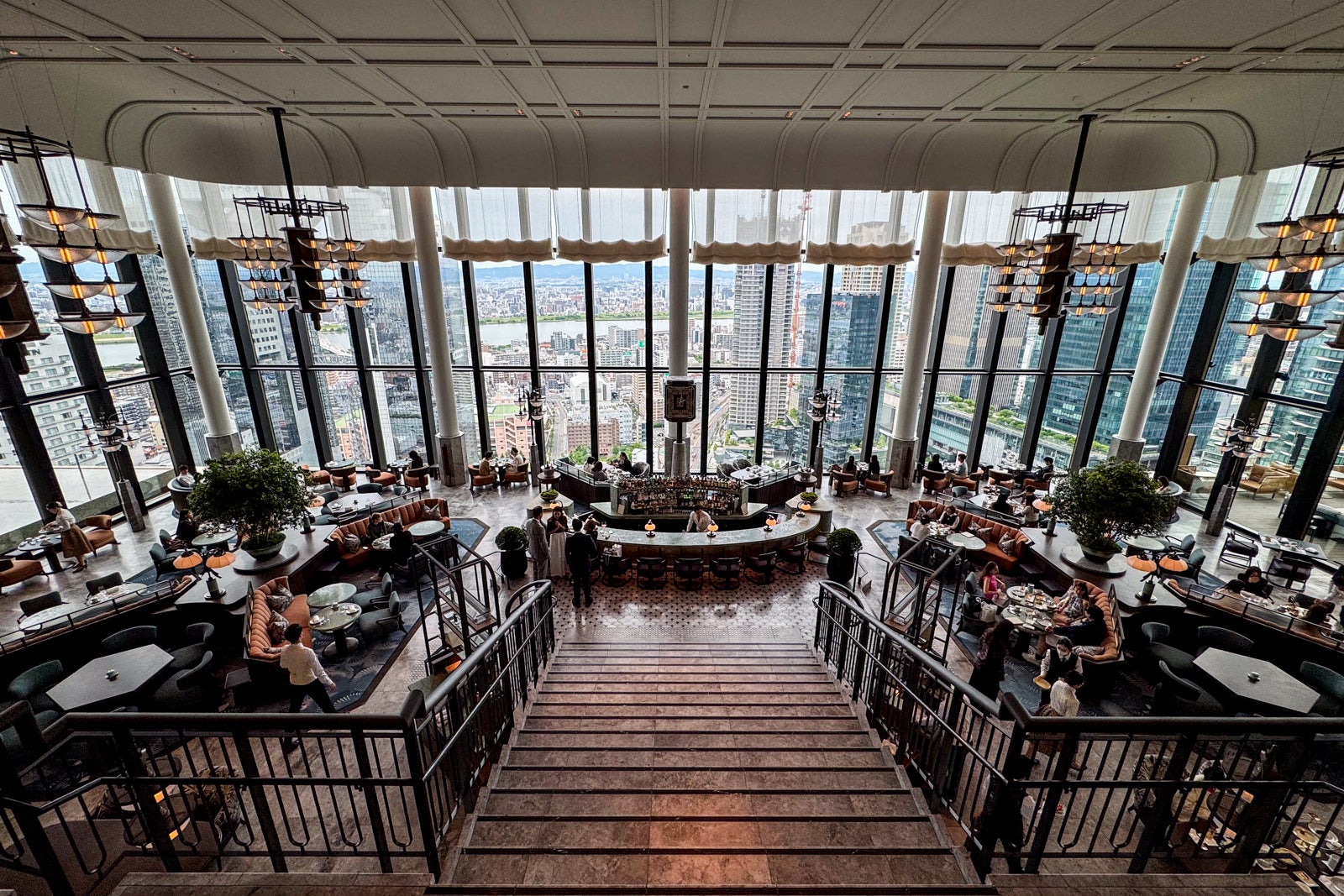
ERIC ROSEN/THE POINTS GUY
But the art deco details truly steal the show. Imagine: chandeliers like frozen waterfalls, a sweeping, emerald-green bar begging for a perfectly mixed cocktail, and delicate metalwork whispering tales of bygone elegance. Yet, the true heart-stopper is the Seiko clock, an antique echo of New York’s Waldorf Astoria grandeur. It’s a timepiece with a royal pedigree, originally crafted for Queen Victoria’s dazzling display at the 1893 Chicago World’s Fair.
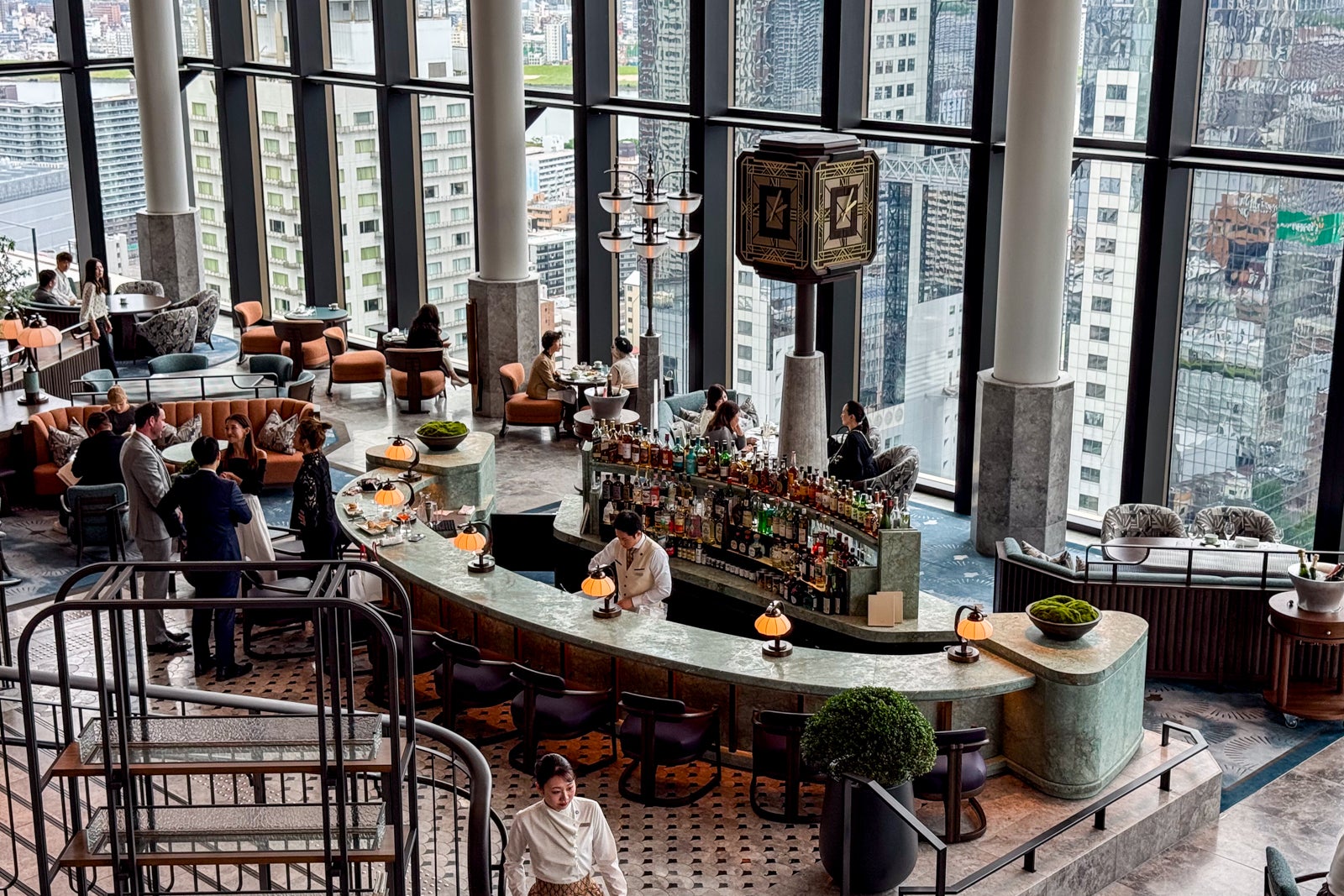
ERIC ROSEN/THE POINTS GUY
Forget the delicate clink of teacups and pastel porcelain for a moment. Slip past the serene tea party and venture down either of the hidden corridors towards the back tower. Keep an eye out for the miniature worlds held captive in glass – twin rock gardens beckoning you forward. Beyond them awaits a reception area, a stark contrast to the refined elegance you just left behind, promising a completely different kind of enchantment.
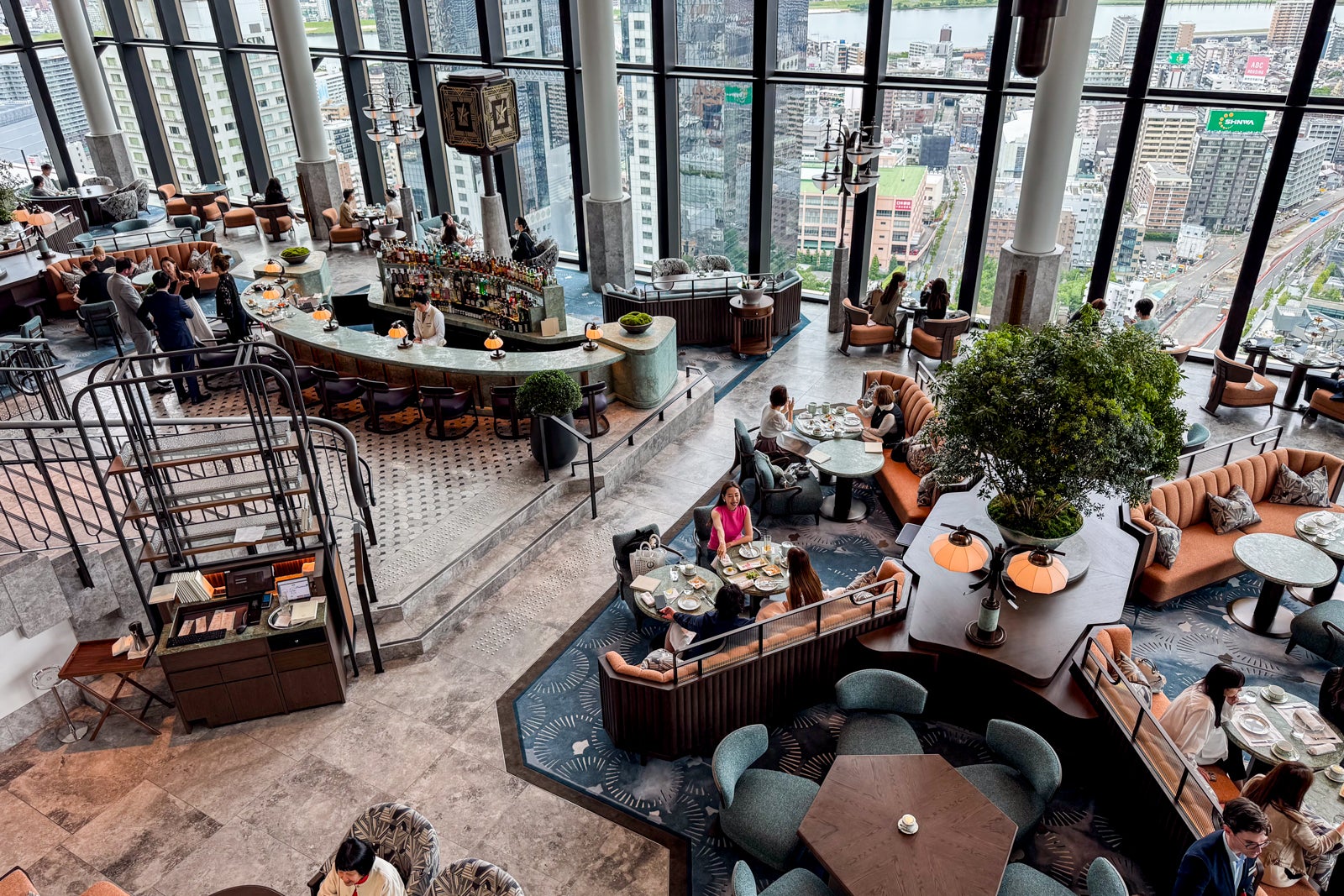
ERIC ROSEN/THE POINTS GUY
Imagine a colossal lantern, its inspiration drawn from the serene glow of traditional Japanese homes. This circular sanctuary soars, its walls lined with pale wood ribs that cradle a dark, still pool. Jagged Setouchi granite boulders erupt from the water’s edge, a raw, natural contrast to the refined wood. It’s a fusion – the quiet essence of Japan meeting the vibrant energy of Hong Kong, all orchestrated in perfect feng shui.
Previous slide
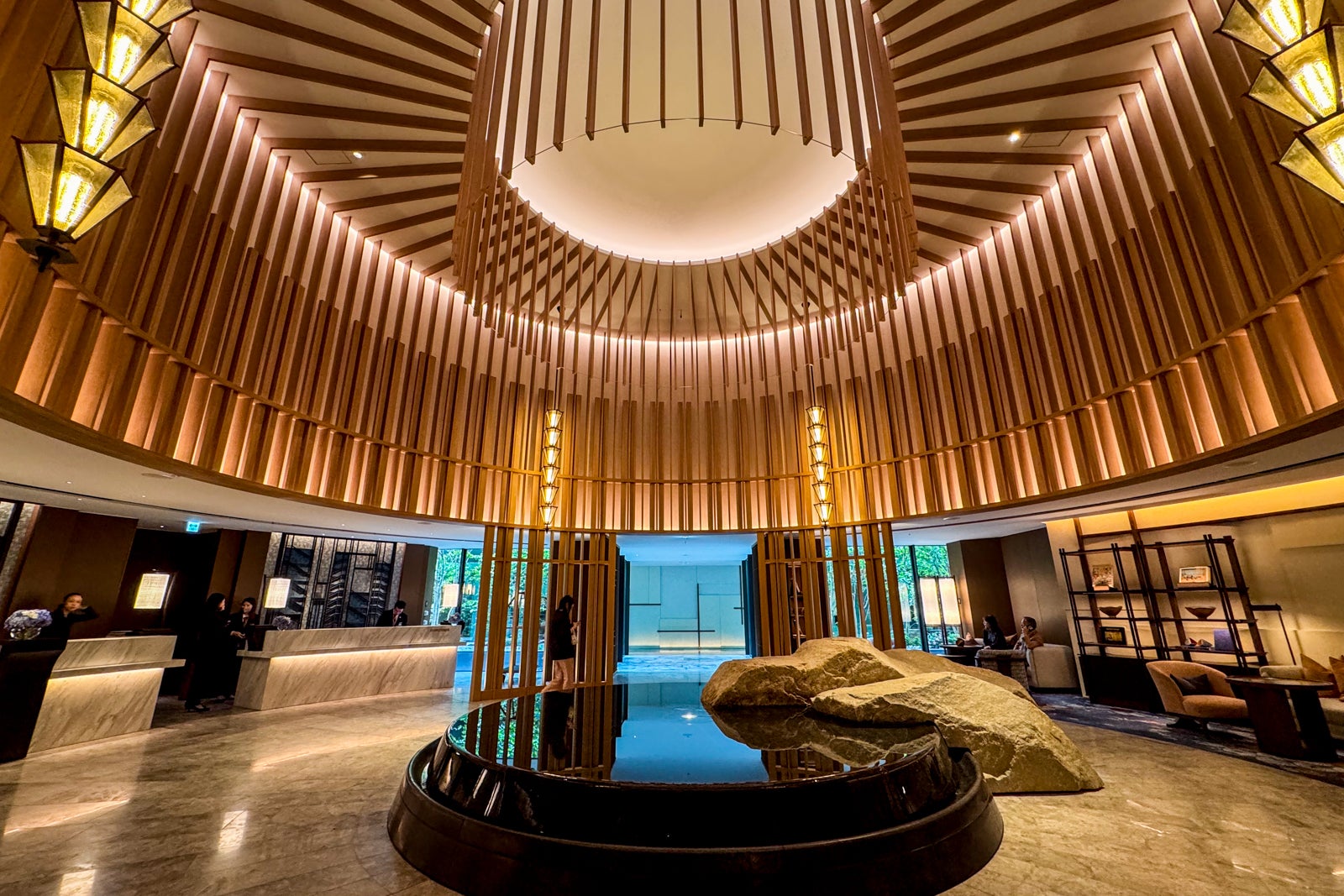
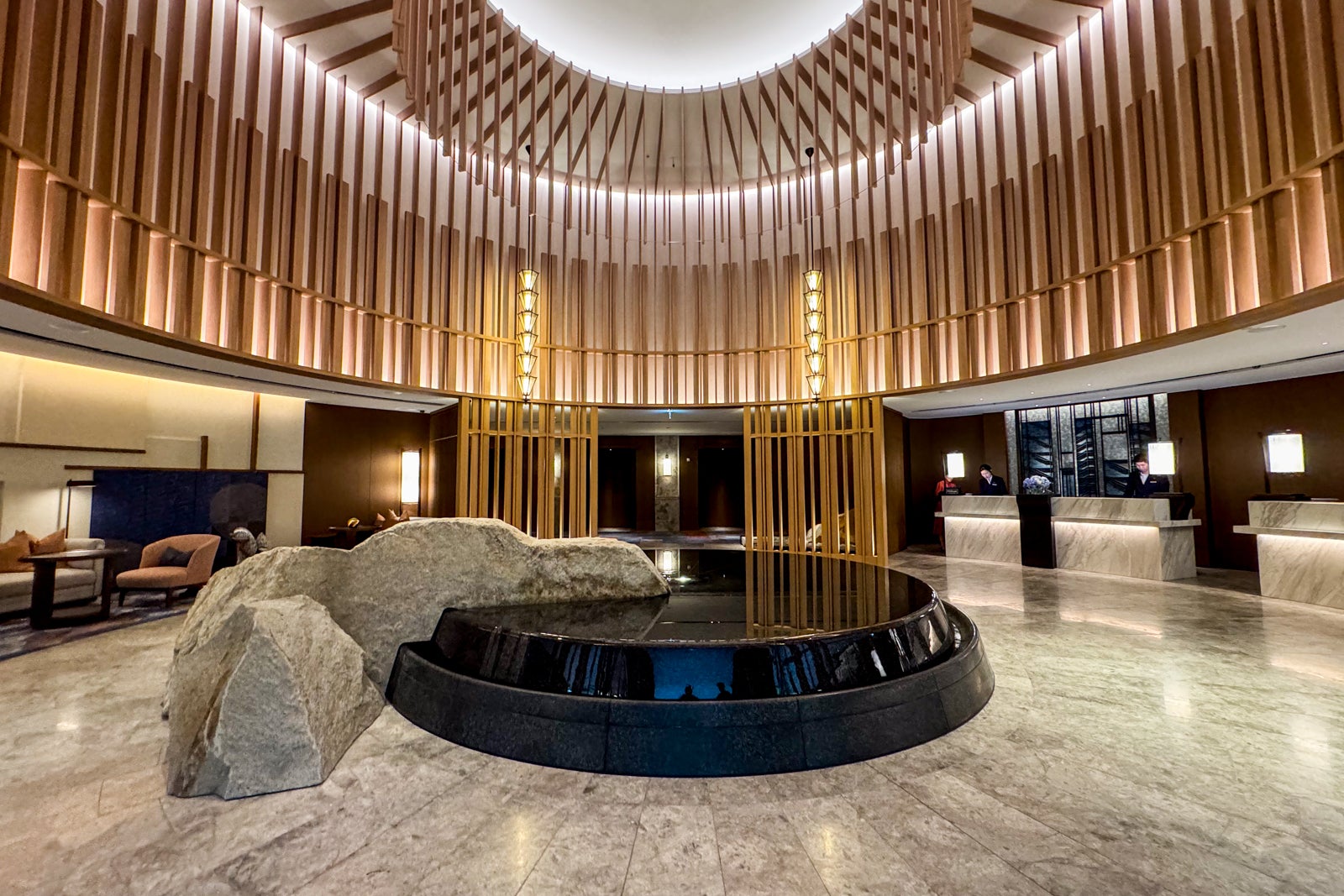
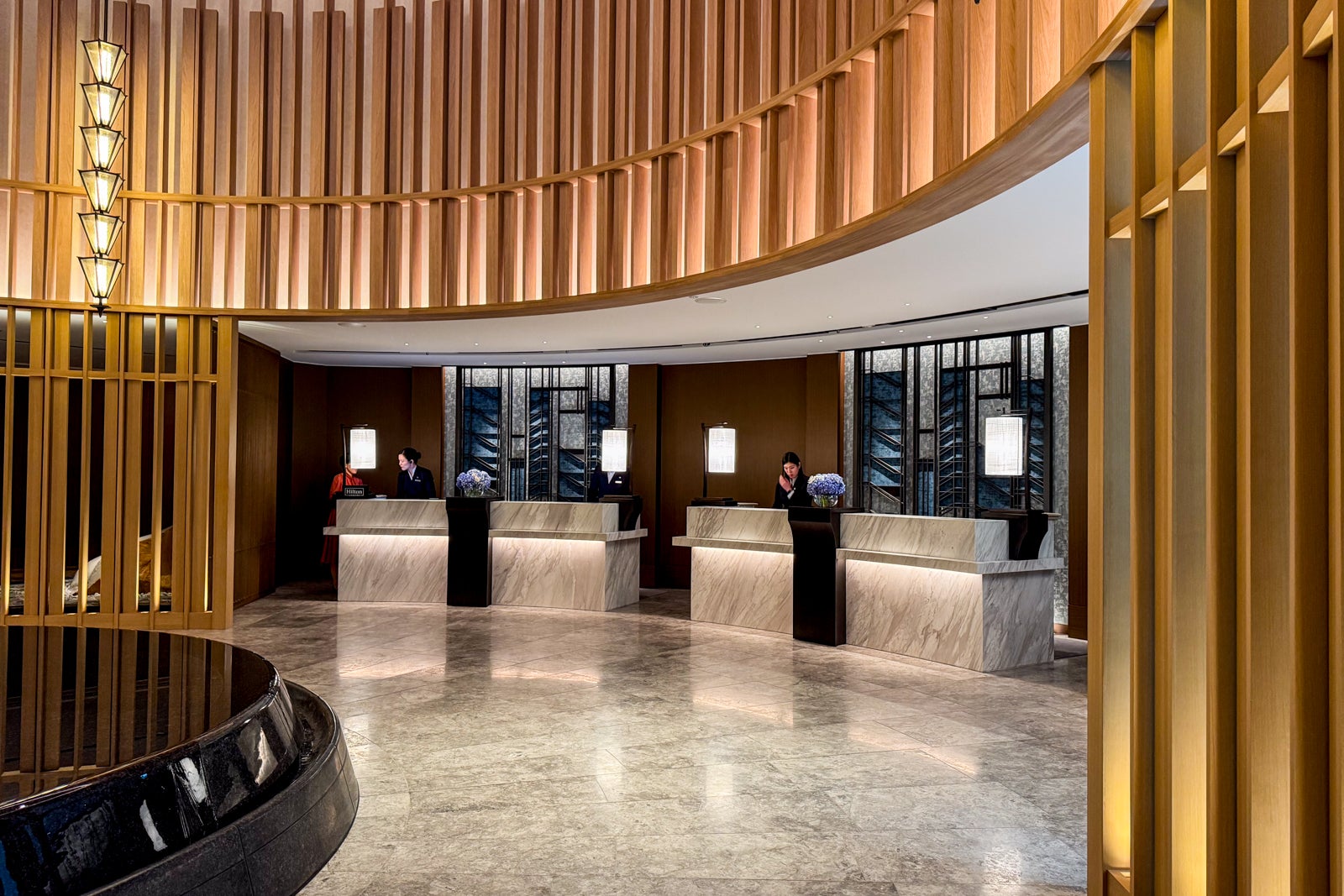
Next slide
1 of 3
ERIC ROSEN/THE POINTS GUY
0
1
2
The journey to the guest elevators wasn’t a simple passage. Instead, it was a deliberate dance around a shimmering pool, a slow browse past shelves overflowing with art books, punctuated by the warm greeting of attentive staff ready to whisk you upward.
Previous slide

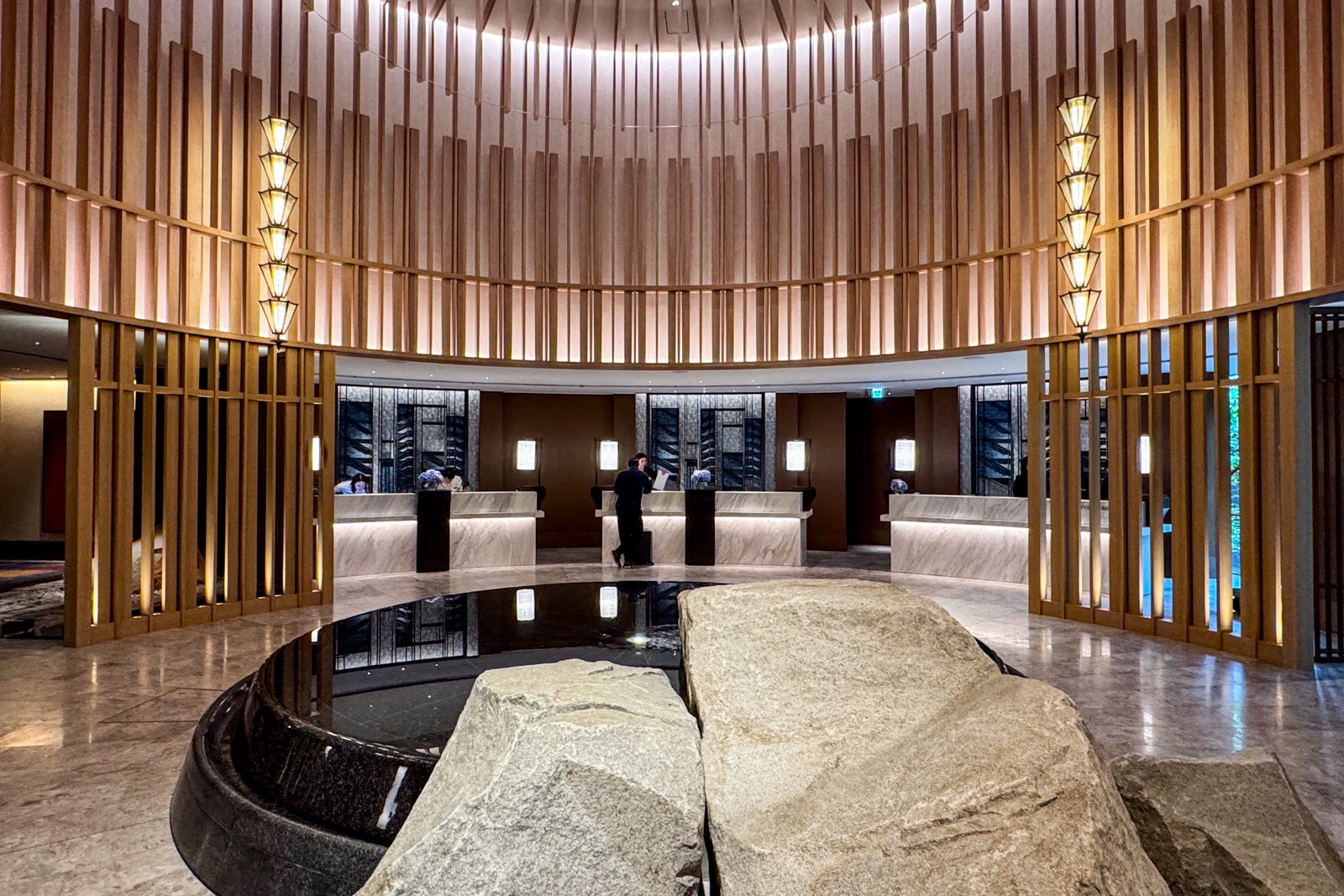
Next slide
1 of 2
ERIC ROSEN/THE POINTS GUY
0
1
“Beyond the obvious luxury, lingering allows the subtle details to emerge: chandeliers, for instance, that whispered memories of grandmother’s wind chimes to one hotelier – a delicate echo of home amidst the grandeur.”

ERIC ROSEN/THE POINTS GUY
The rooms
Ascend to the Waldorf Astoria Osaka, where luxury resides on levels 31 through 38. Here, amidst the clouds, discover not just 252 guest rooms, but 248 exquisite escapes. From the spacious 517-square-foot Deluxe rooms to the breathtaking 2,077-square-foot Presidential Suite, prepare to be captivated. Some rooms even offer the option to connect, creating an even grander sanctuary in the sky.
Previous slide
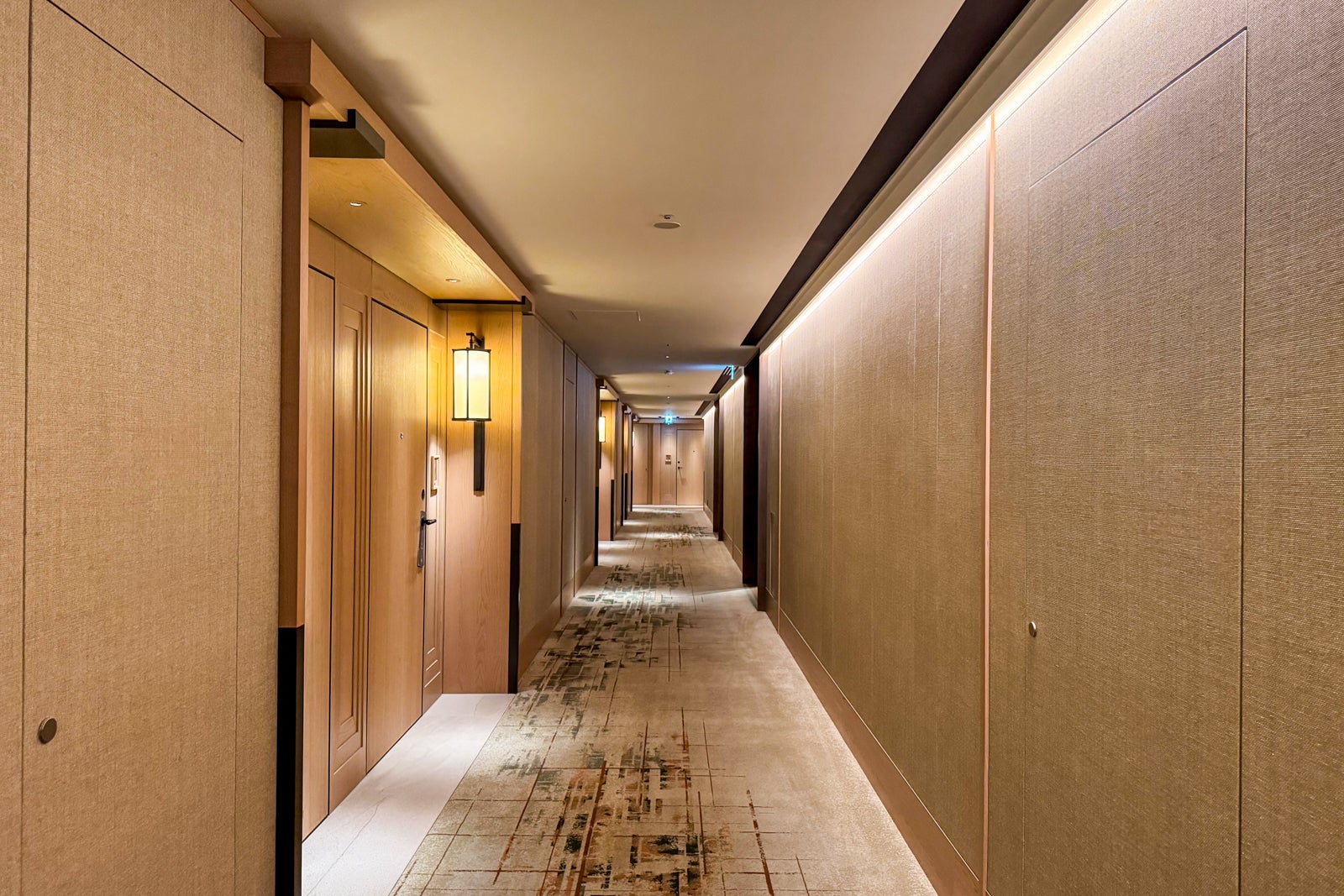
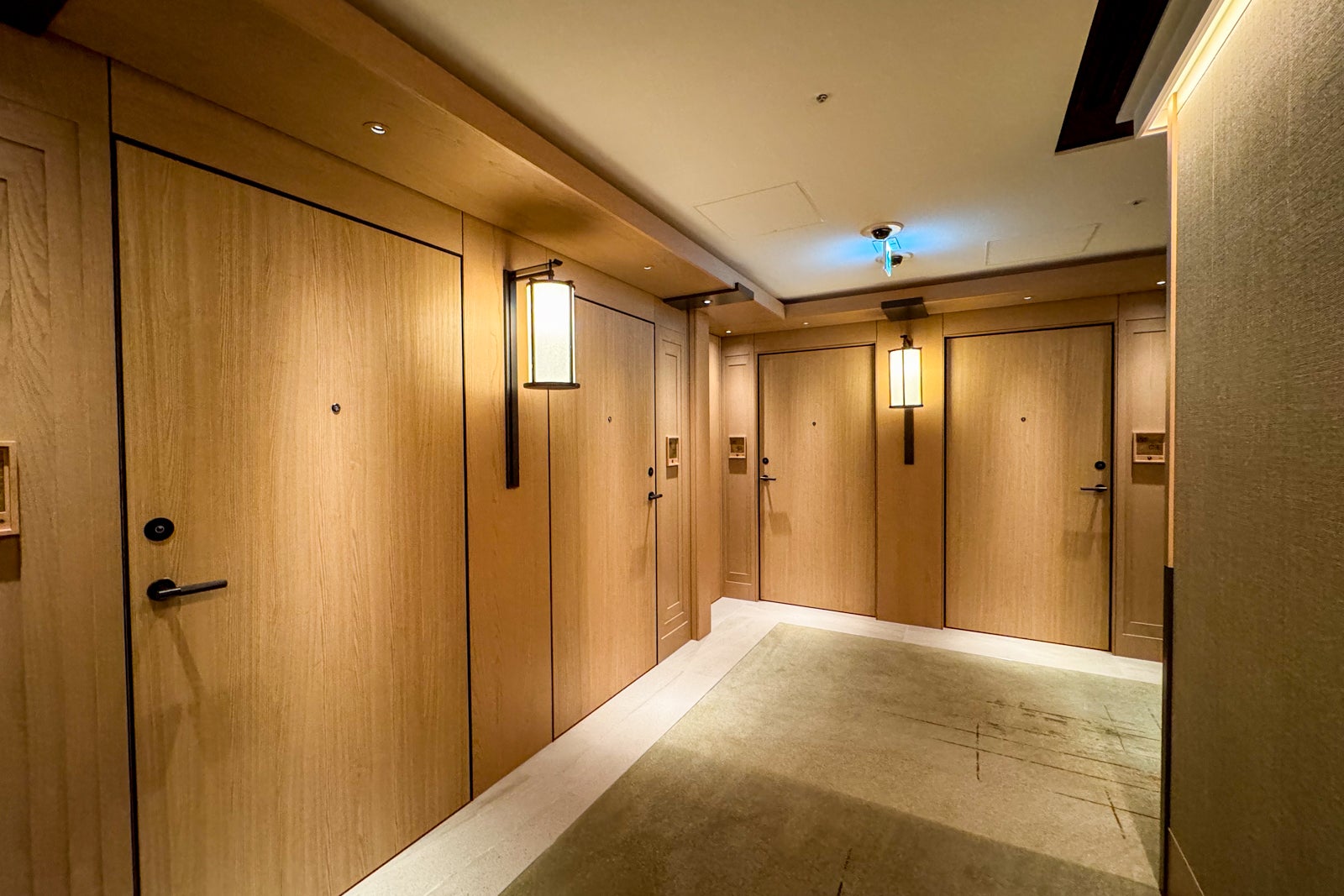
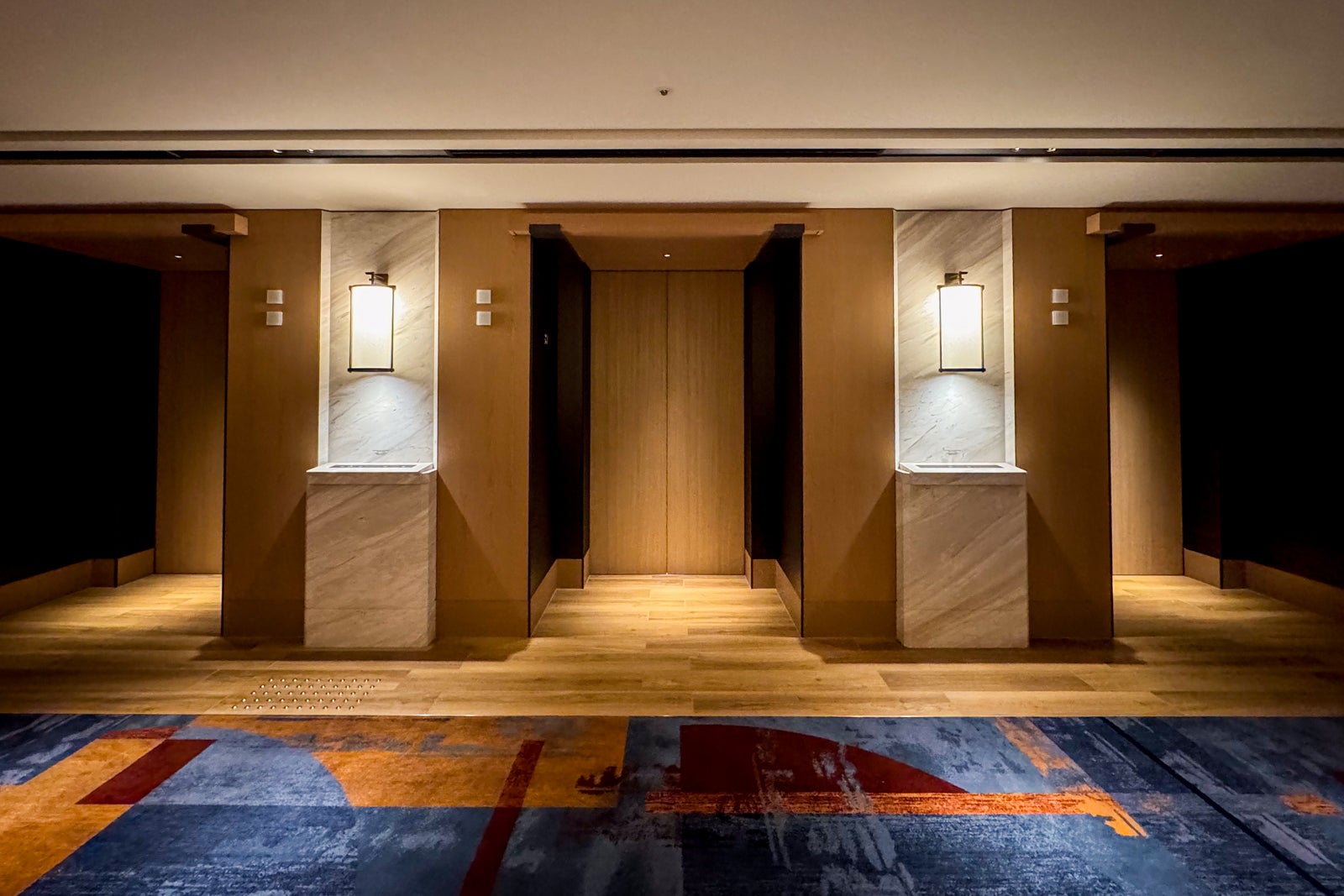
Next slide
1 of 3
ERIC ROSEN/THE POINTS GUY
0
1
2
The 37th floor whispered promises as I glided down the entry hallway. A quick detour past the powder room and then BAM: my corner junior suite exploded into view. The living room unfolded, anchored by a clever breakfast table-for-two moonlighting as a workspace. The minibar winked, showcasing local treasures: the crisp Ki No Bi gin and smooth Okuhida vodka, alongside Umeda de Cow chips begging to be devoured. Beyond, the sitting room beckoned with a velvety taupe divan staring down a massive wall-mounted TV. But it was the rough-hewn wooden table that stole the show, laden with a welcome bounty of house-made macarons and juicy slices of fresh melon – a sweet symphony of arrival.
Previous slide
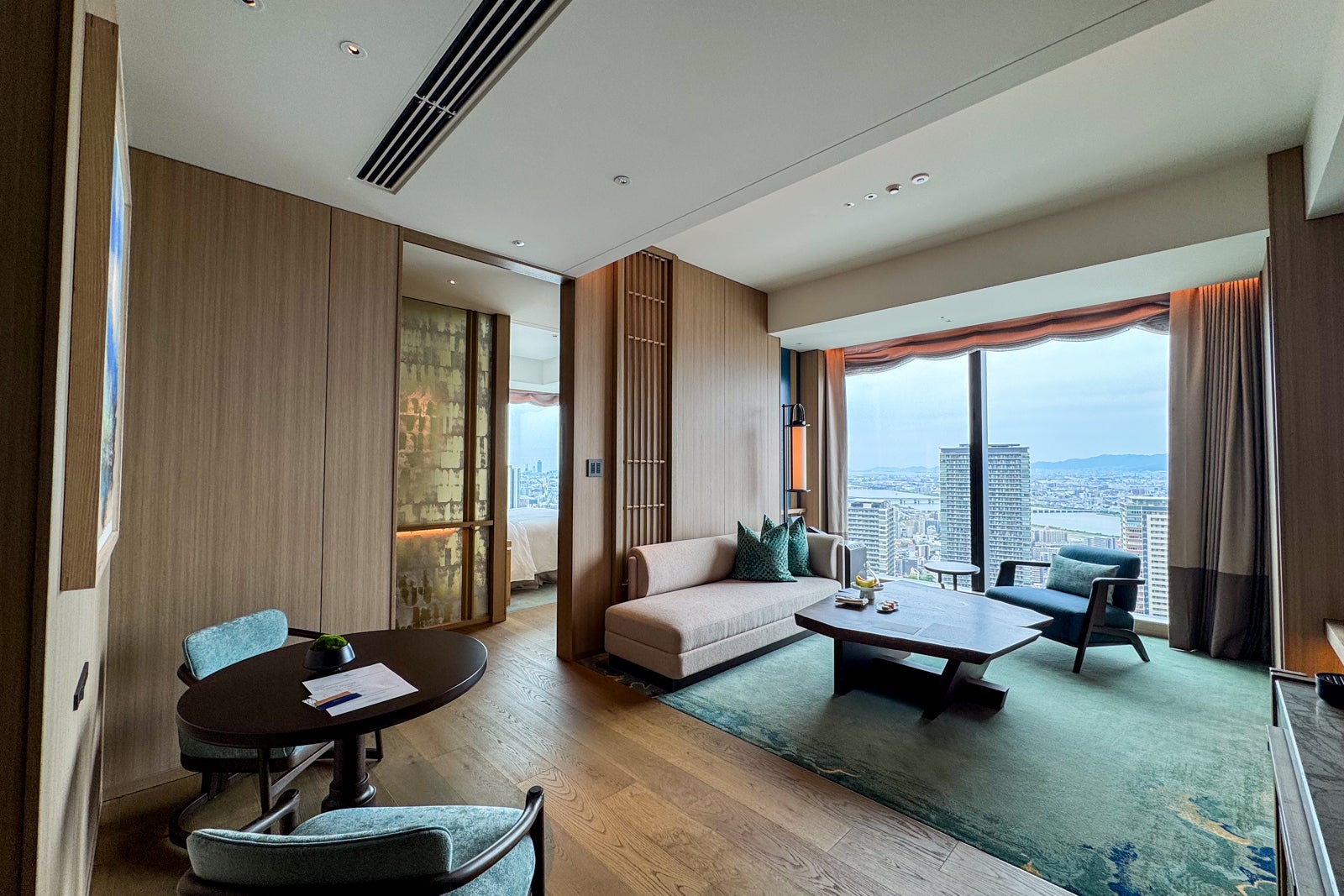
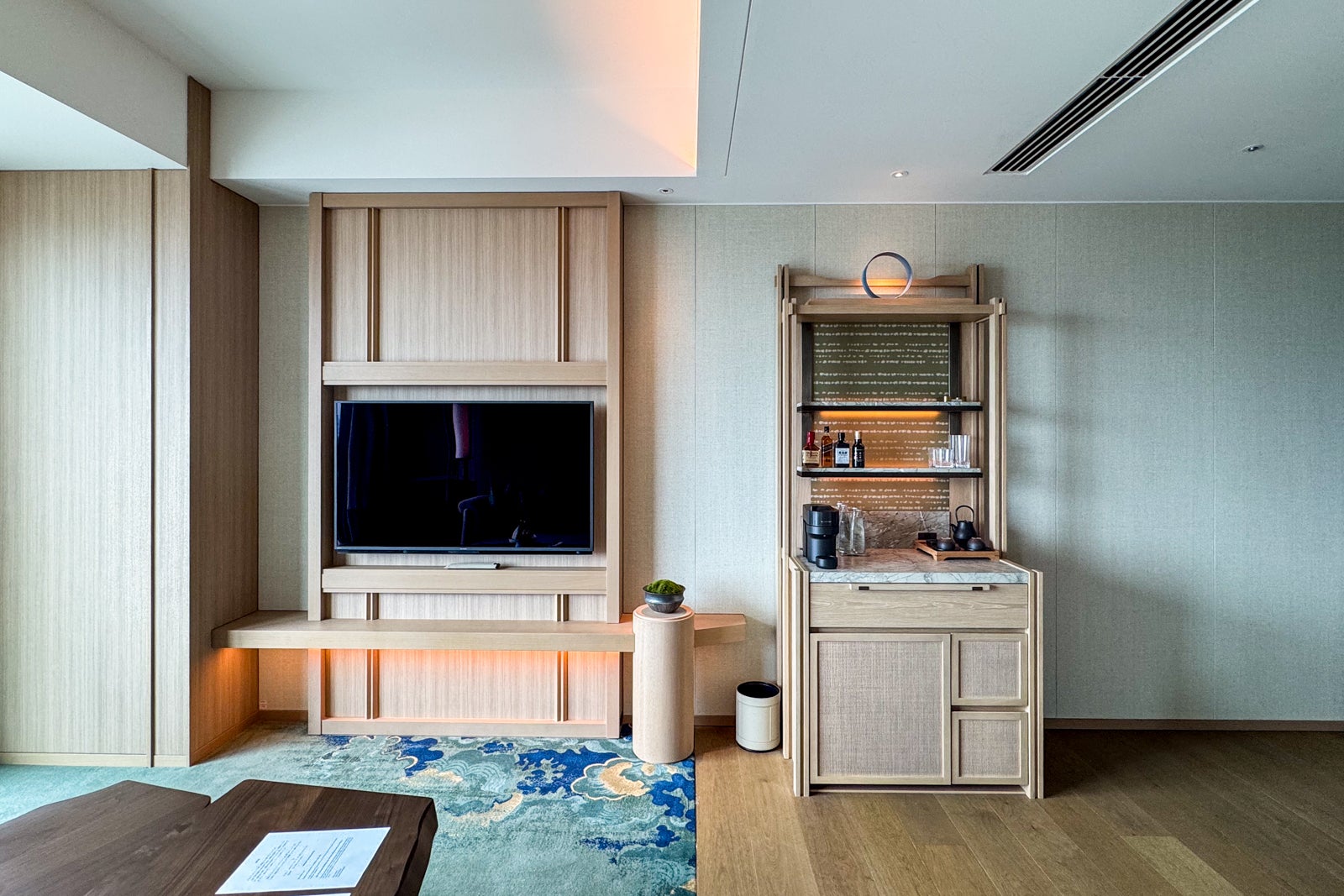
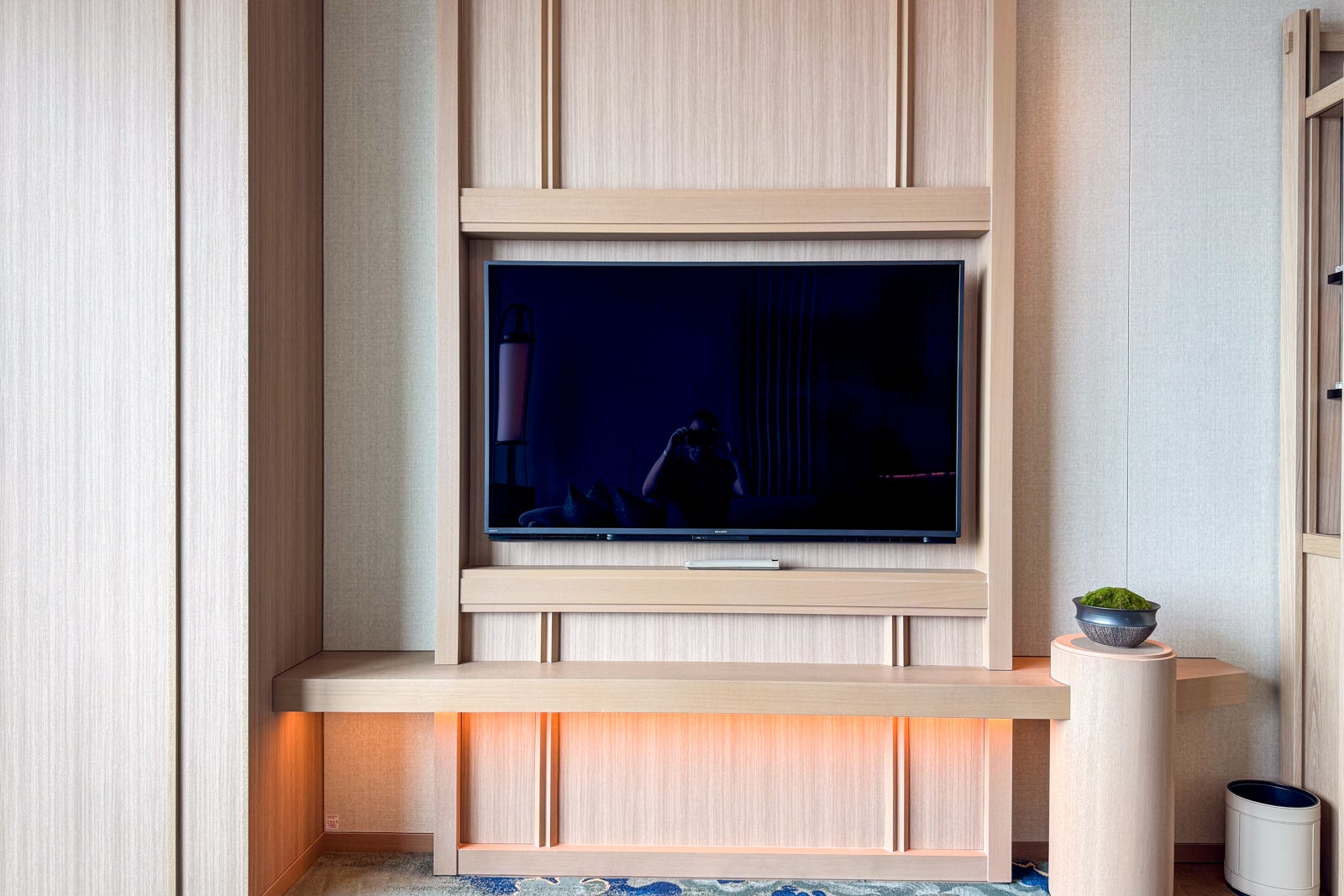

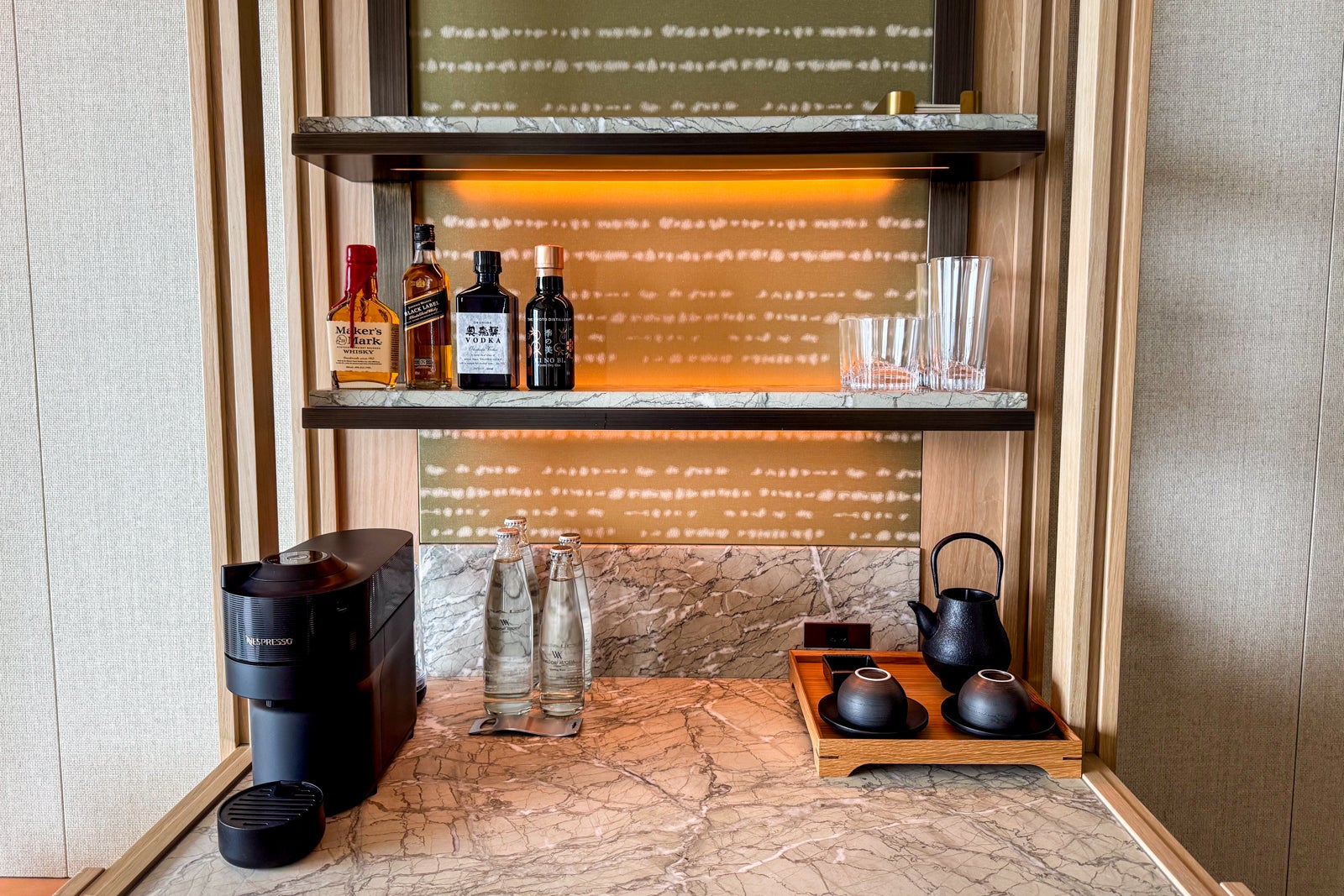
Next slide
1 of 5
ERIC ROSEN/THE POINTS GUY
0
1
2
3
4
Sun-drenched wood whispered against a vibrant symphony of green, gold, and blue. The room felt less like a space, more like a captured breath of the Japanese countryside. Imagine: emerald forests cloaking ancient secrets, volcanic peaks piercing sapphire skies, and the rhythmic crash of turquoise waves against a rugged, golden shore, all echoed in the room’s design.
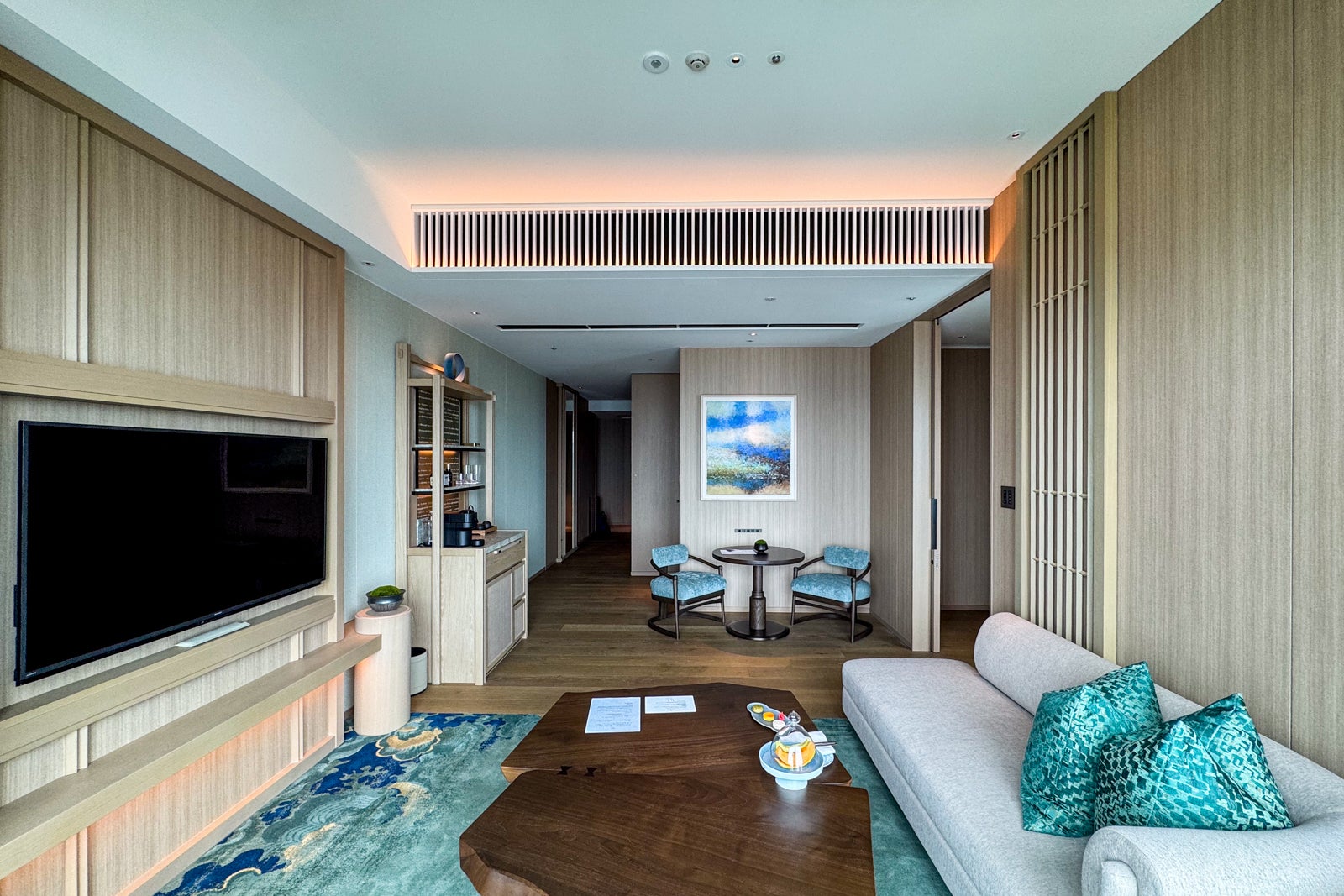
ERIC ROSEN/THE POINTS GUY
Beyond a wide, sliding wooden door lay a bedroom where echoes of the home’s design resonated. Two walls of floor-to-ceiling glass framed a king-size bed, dressed in the impeccable Waldorf Astoria linens, their crisp stitching a subtle luxury. From this vantage point, the sunset blazed across the city, painting the room in fiery hues – arguably the best view in town.
Previous slide
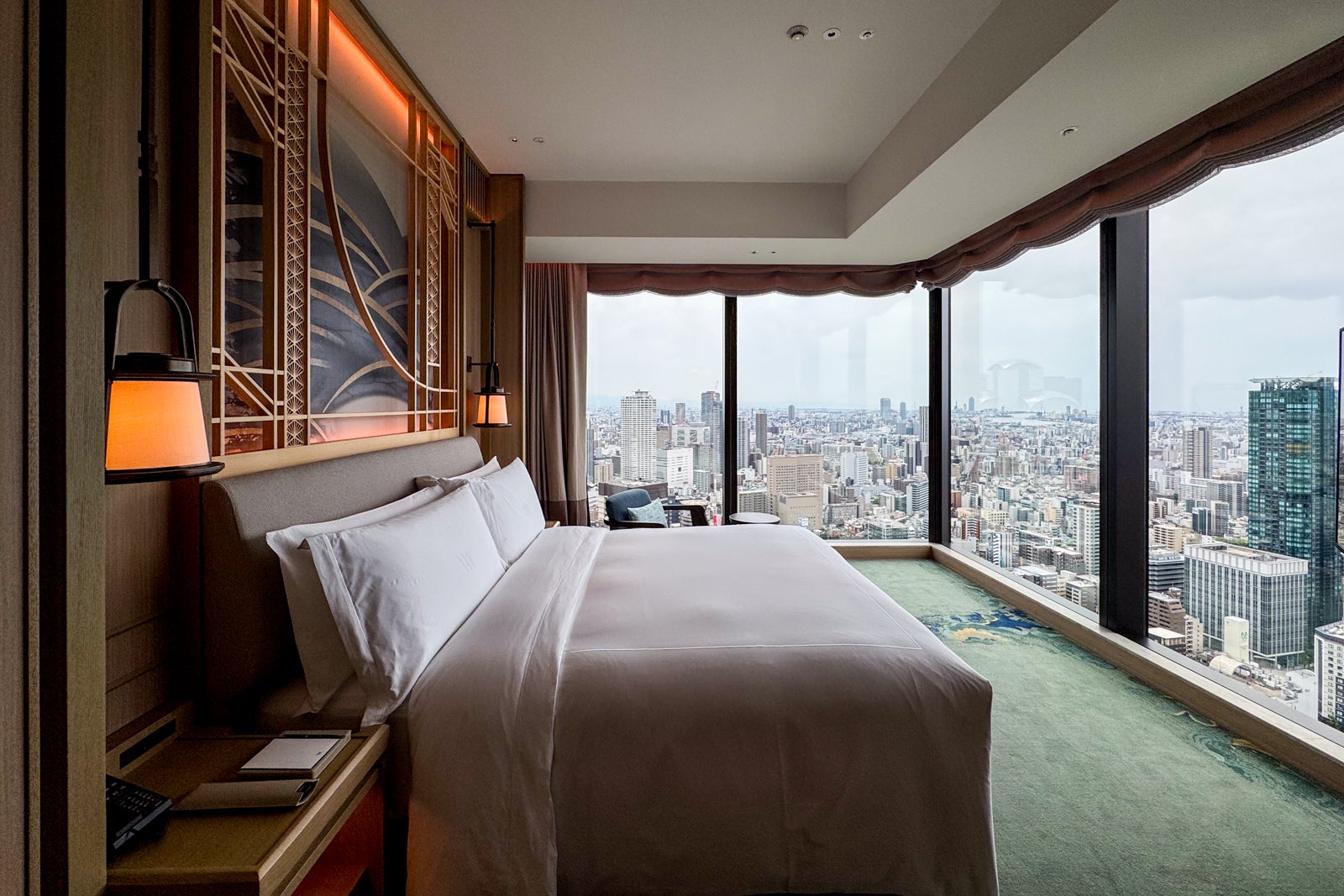
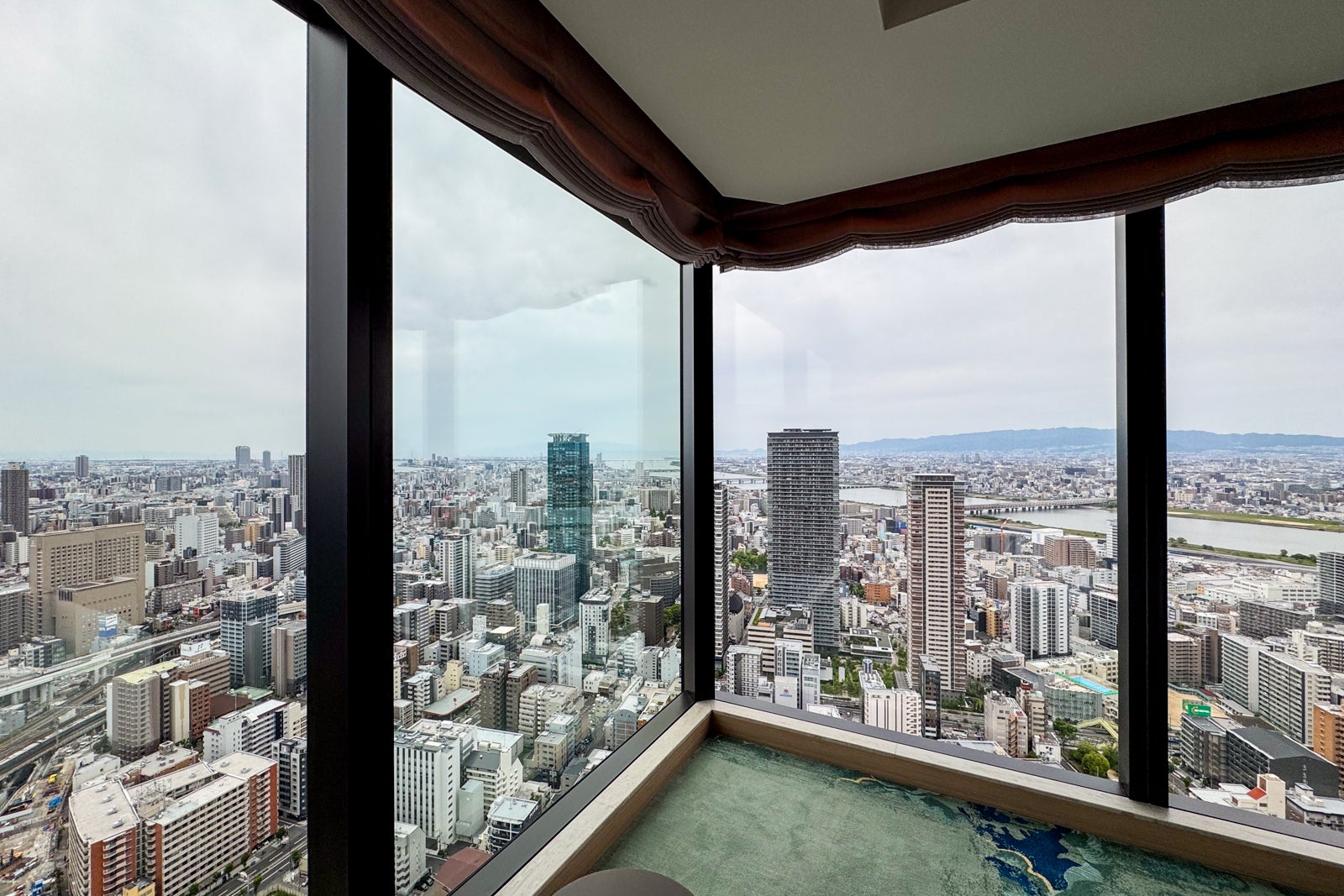
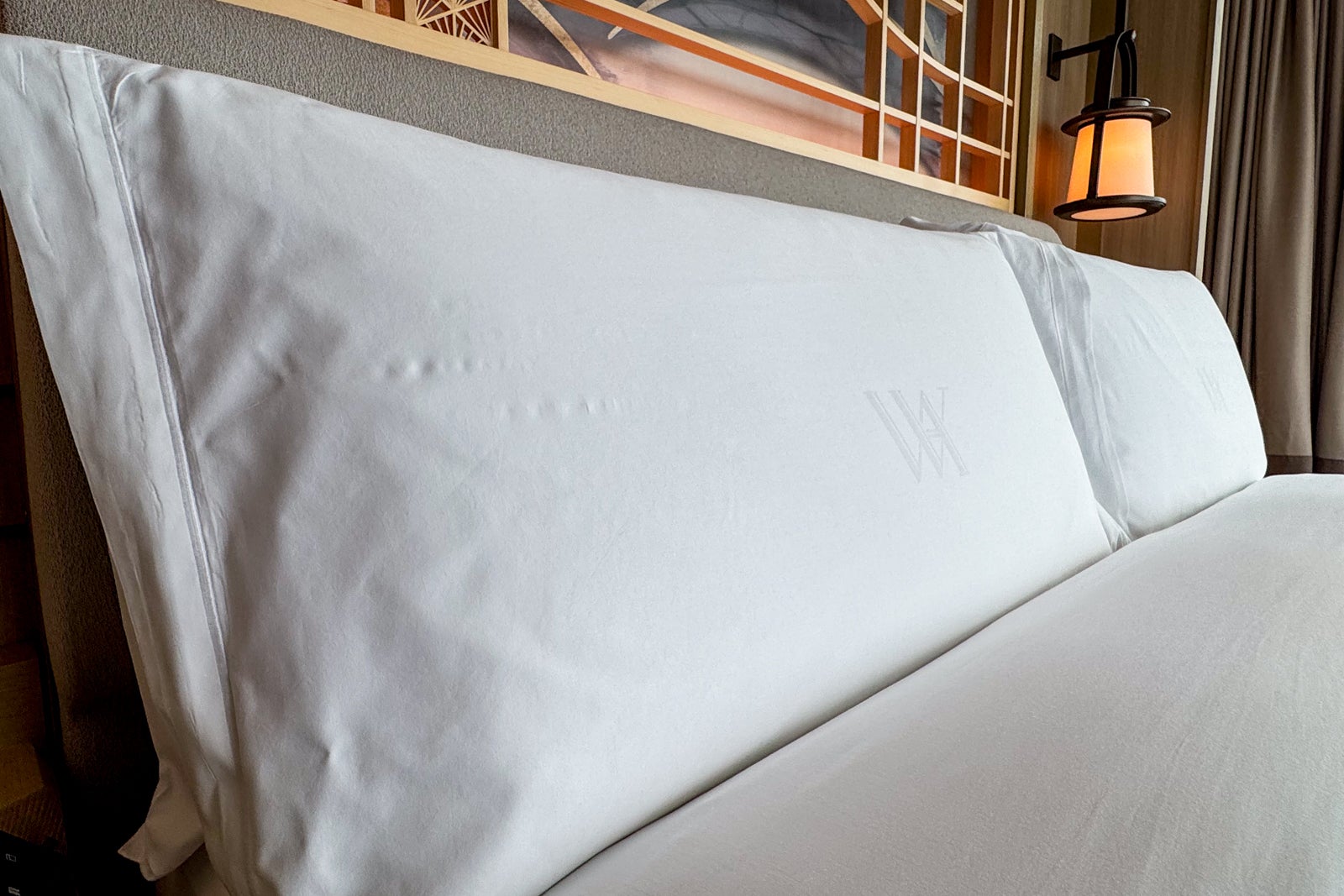
Next slide
1 of 3
ERIC ROSEN/THE POINTS GUY
0
1
2
A whisper of Japan brushed the Waldorf Astoria’s legacy: a kumiko screen, crafted by hand, mirrored a washi-paper wall ablaze with peacock plumes and the delicate curve of Asian hand fans a playful echo of the iconic brand’s landing on Japanese soil.
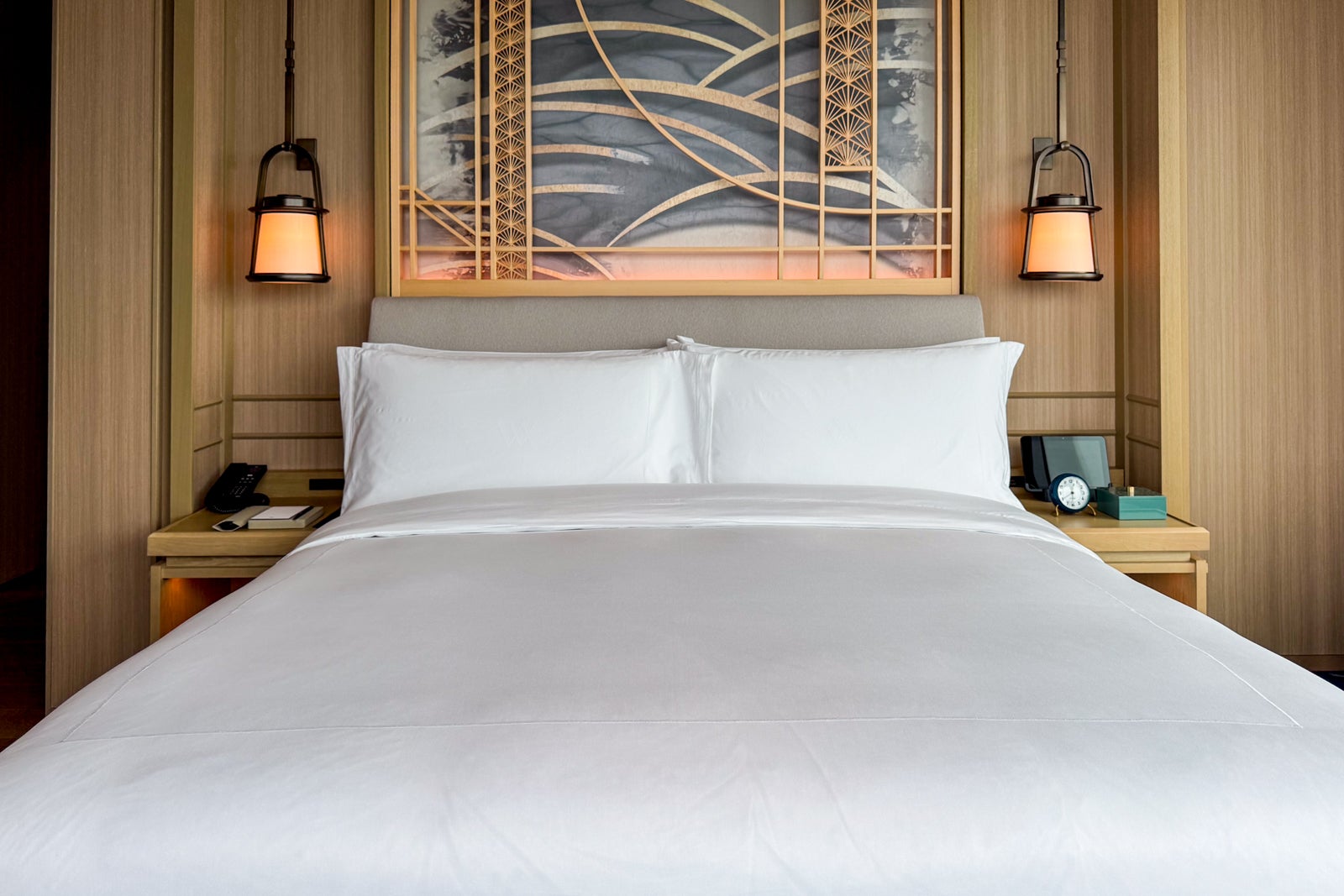
ERIC ROSEN/THE POINTS GUY
Beyond the headboard lay a sanctuary: a generously sized closet and a bathroom bathed in natural light. Walls lined with elegant white-gray limestone offered a cool, calming aesthetic. Twin sinks, adorned with the fragrant allure of Aesop products, promised pampering. Forget your toothbrush? No problem. A trove of spare toiletries stood ready, alongside a coveted Dyson hair dryer. And the spacious walk-in shower? An invitation to emerge refreshed, ready for twilight cocktails at Peacock Alley.
Previous slide
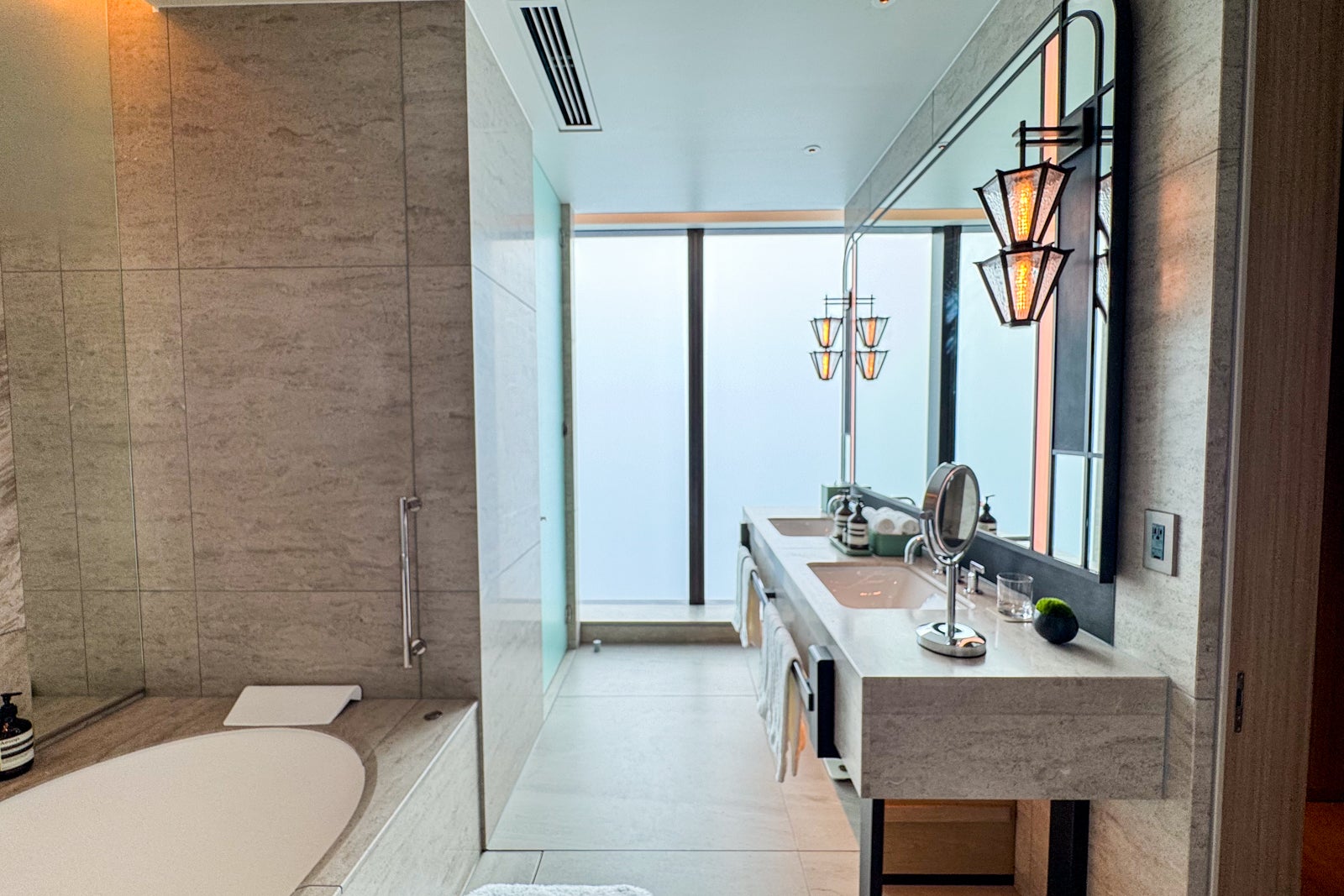
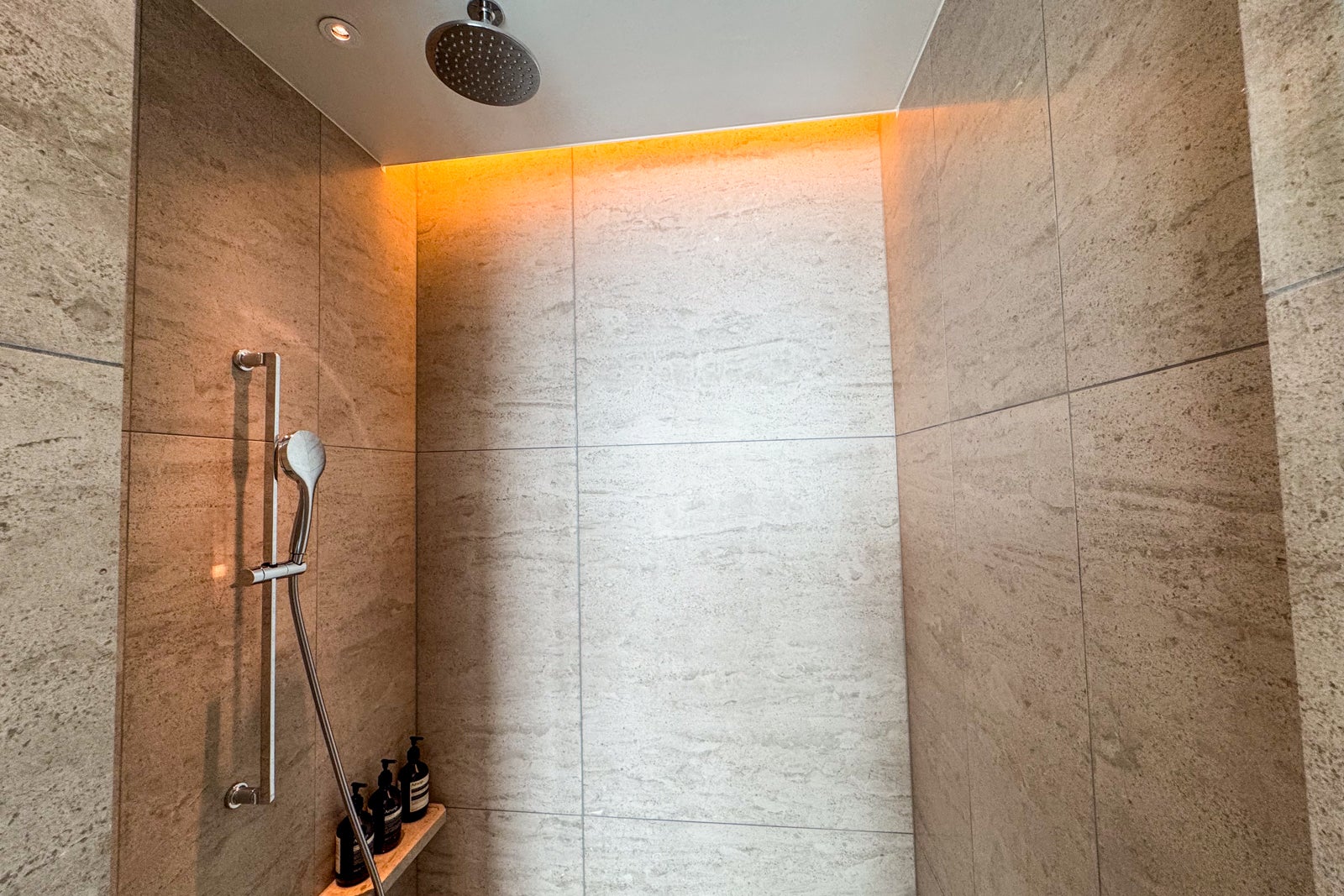

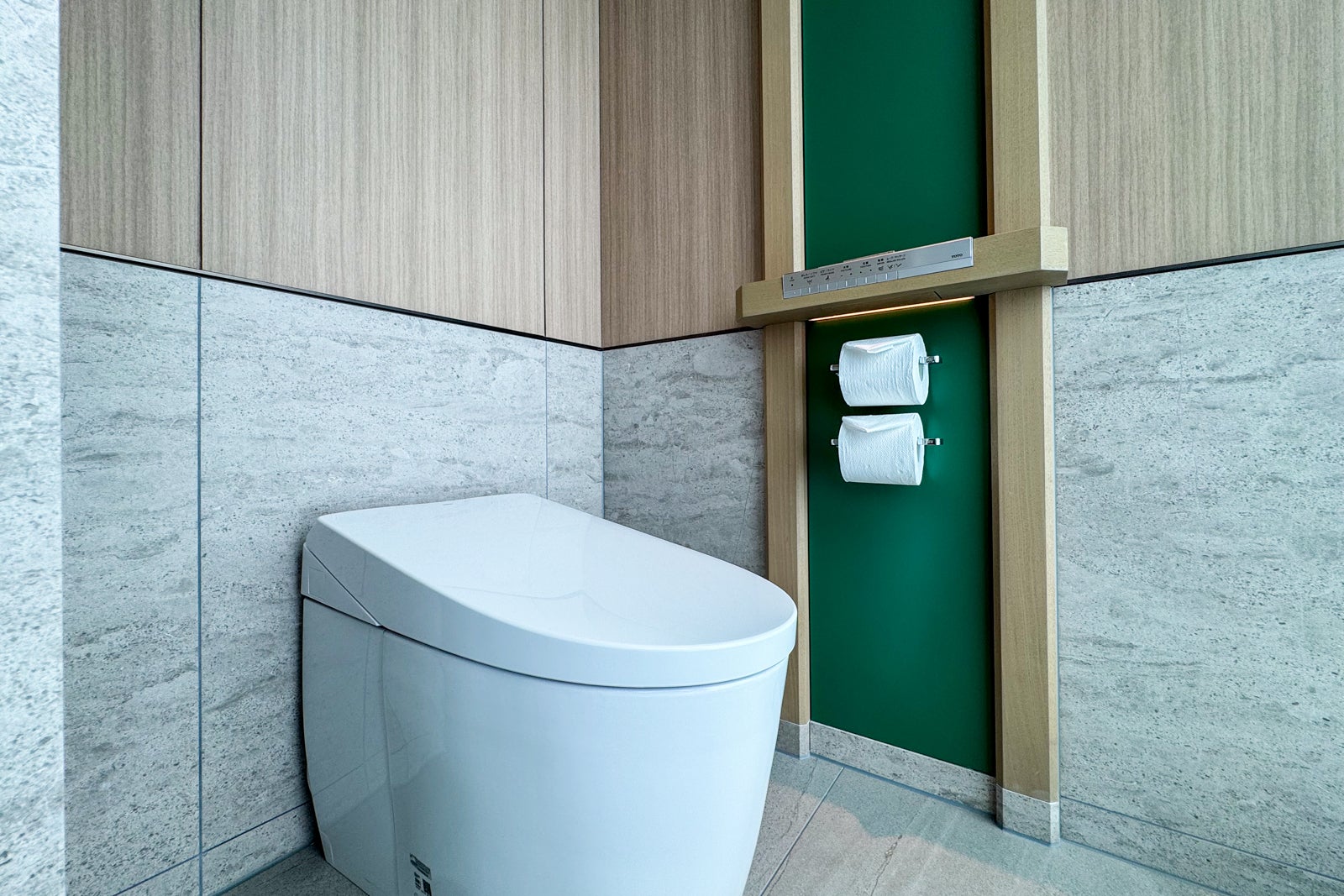
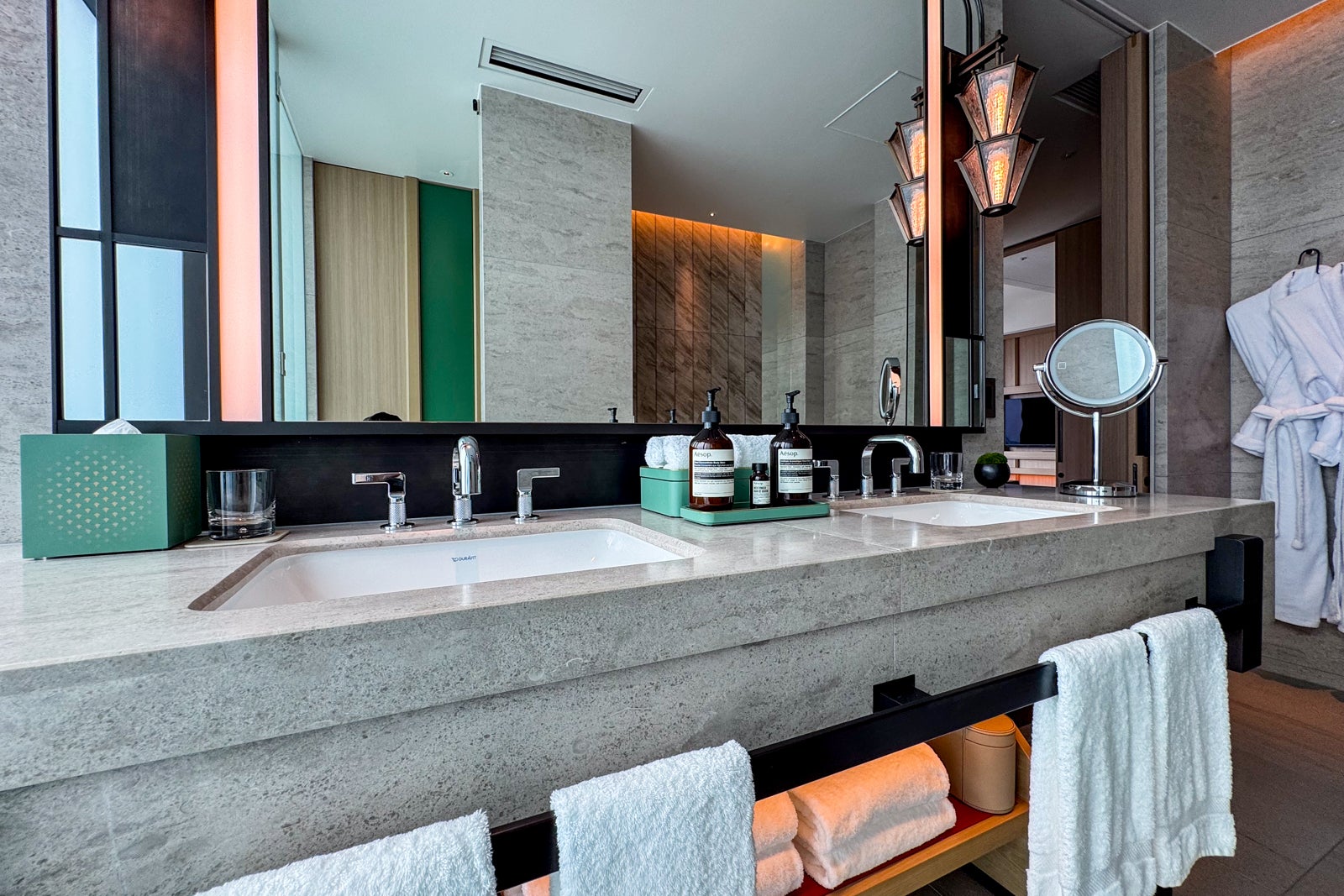
Next slide
1 of 5
ERIC ROSEN/THE POINTS GUY
0
1
2
3
4
The Expo’s dazzling displays had faded in my memory, replaced by the exquisite ache in my feet. Only one thought propelled me forward: the siren song of the claw-footed tub, promising a deep, enveloping embrace of warmth and tranquility. I surrendered to its depths, letting the day’s exhaustion dissolve into fragrant steam.
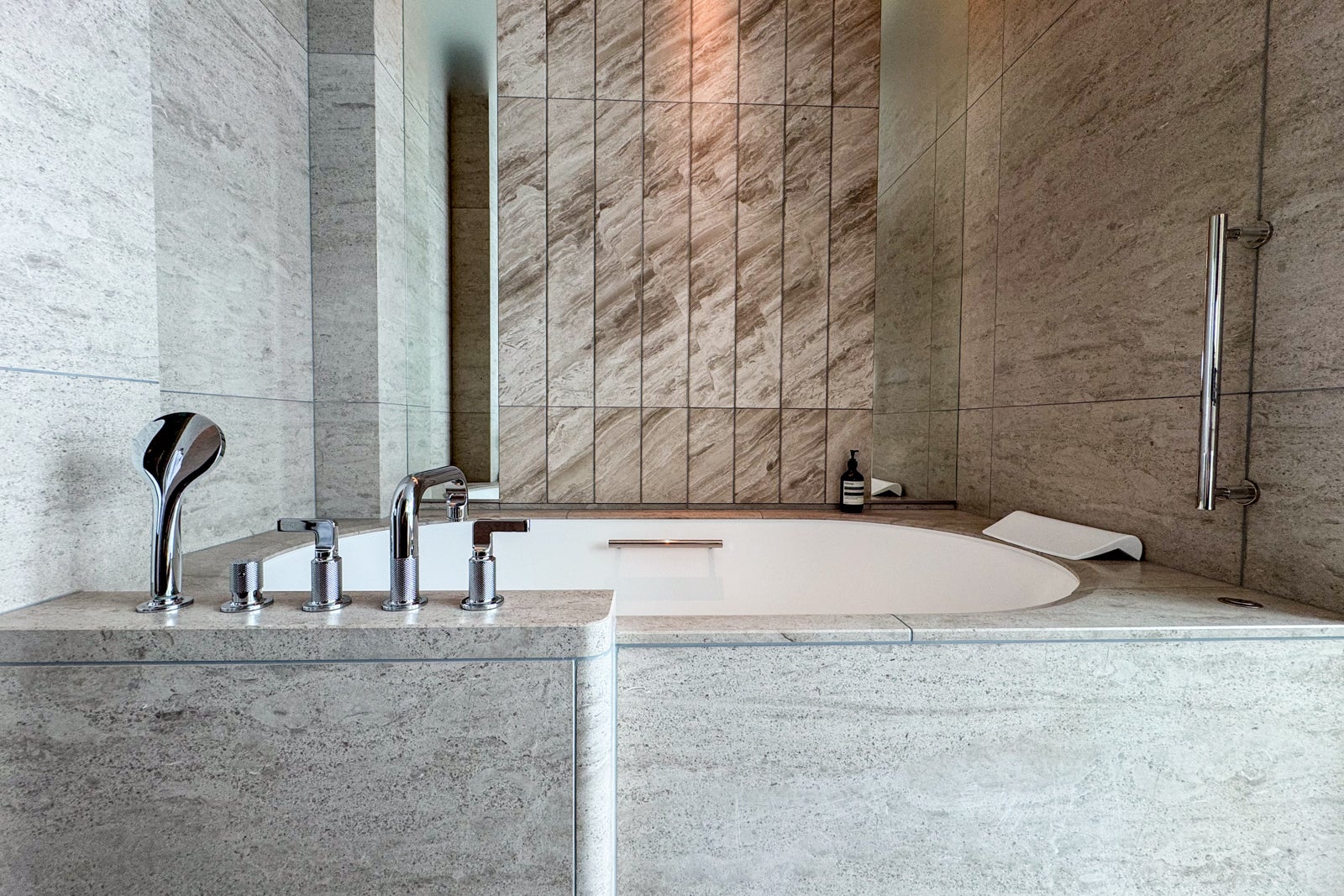
ERIC ROSEN/THE POINTS GUY
Dining
There are several restaurants and bars at the Waldorf Astoria Osaka, ranging from high-end teppanyaki to traditional French brasserie fare.
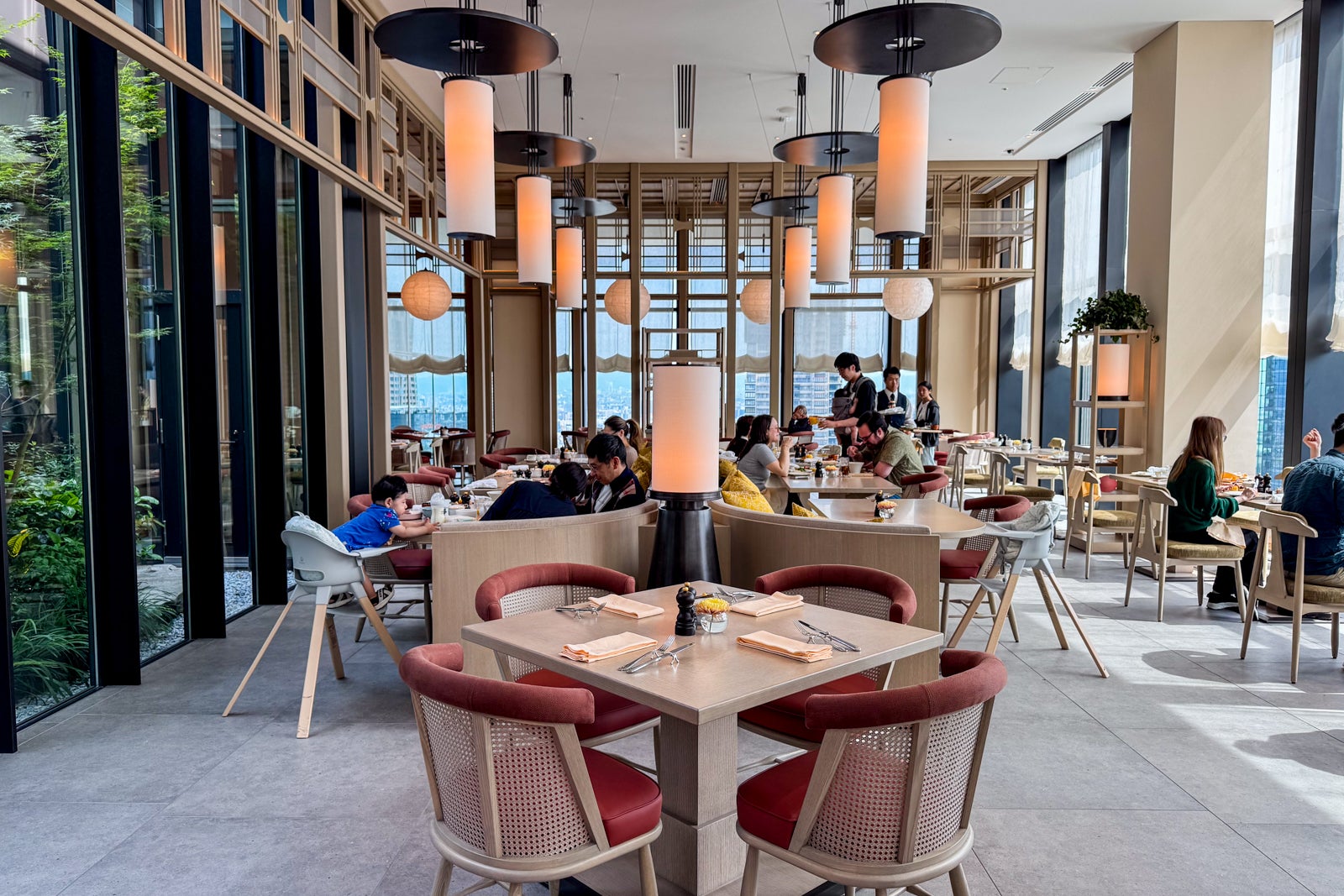
ERIC ROSEN/THE POINTS GUY
Peacock Alley
Peacock Alley: Where Manhattan Shimmers, Day and Night. Open daily, from a civilized 11 a.m. until the late hours of 10 or 11 p.m. (check the schedule!), this legendary spot lives up to its name. By day, indulge in their increasingly coveted afternoon tea, a sugar-spun fantasy. As twilight descends, the Alley truly ignites. The all-day menu offers delights like the miniature marvels of lobster rolls, nestled in buttery brioche ($33), and the iconic Waldorf salad ($19), a taste of New York history. Come, be part of the spectacle.
Previous slide
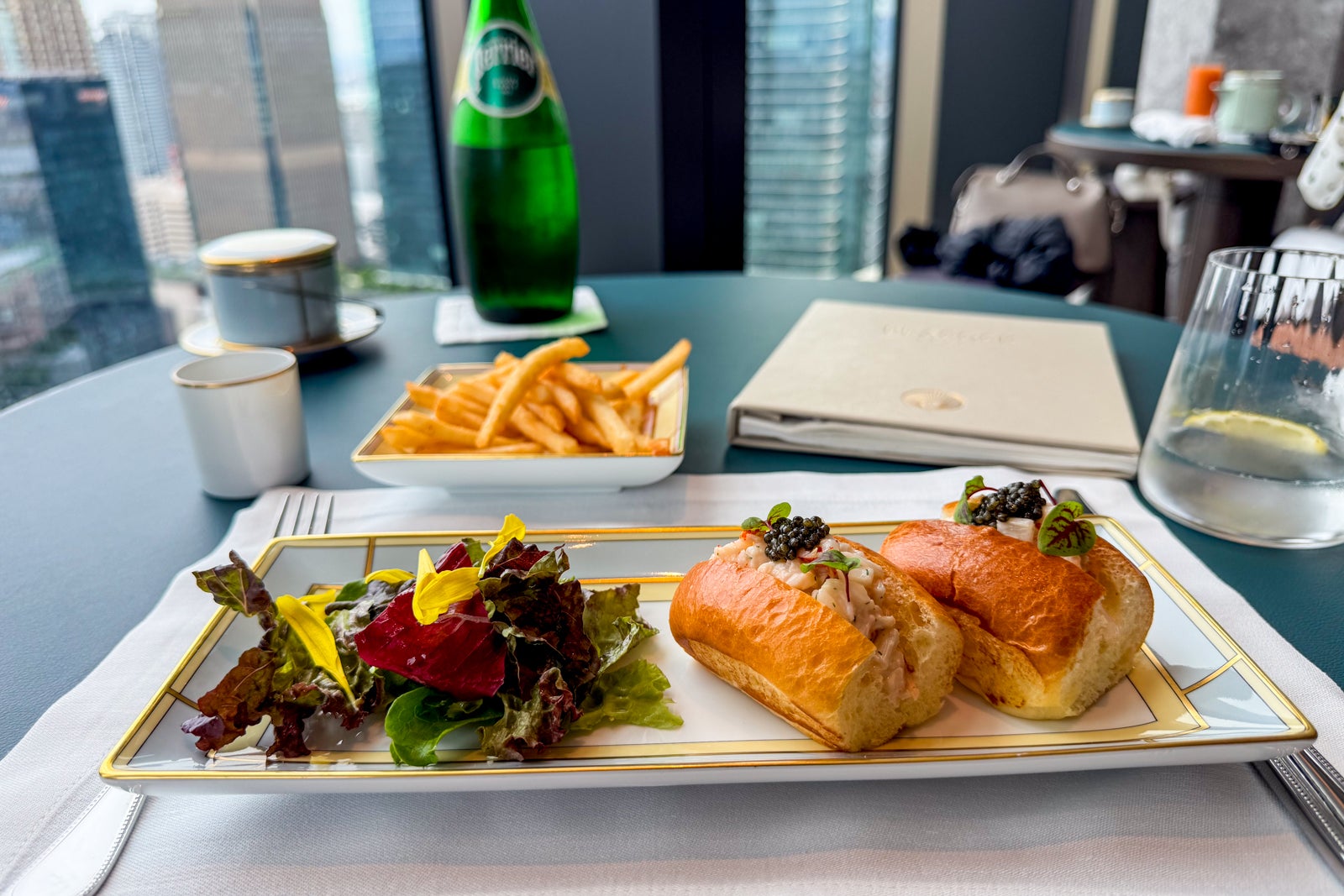
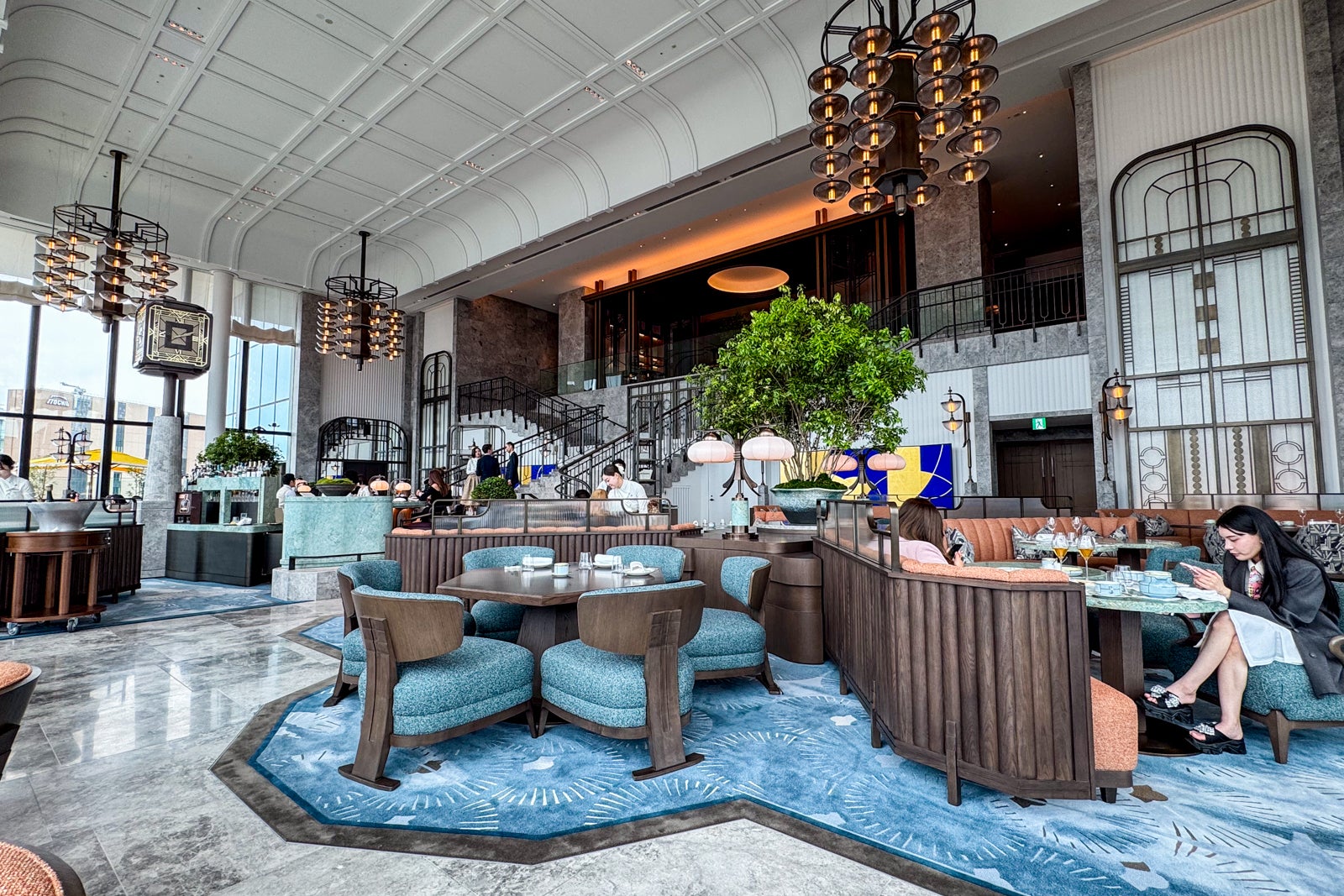
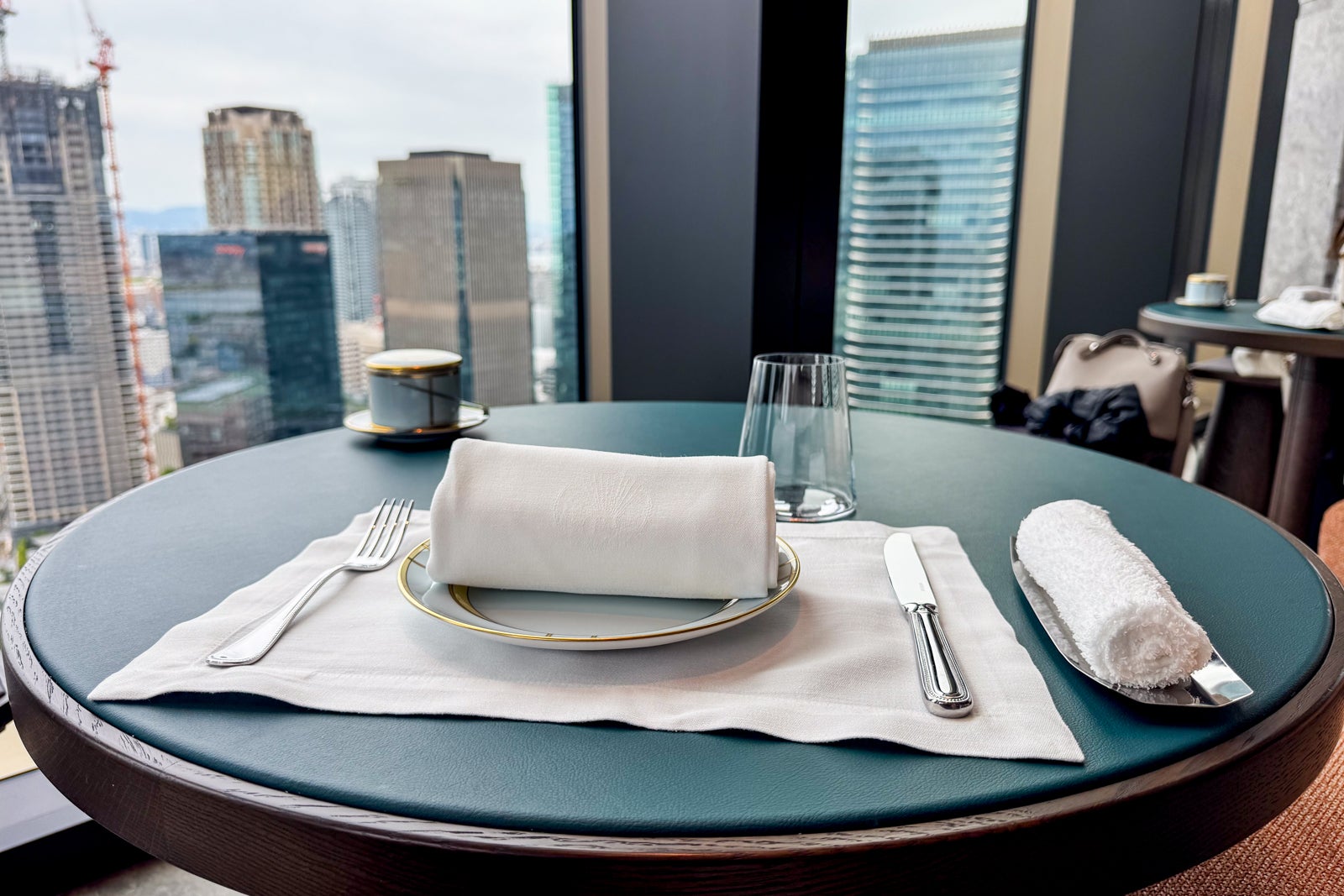
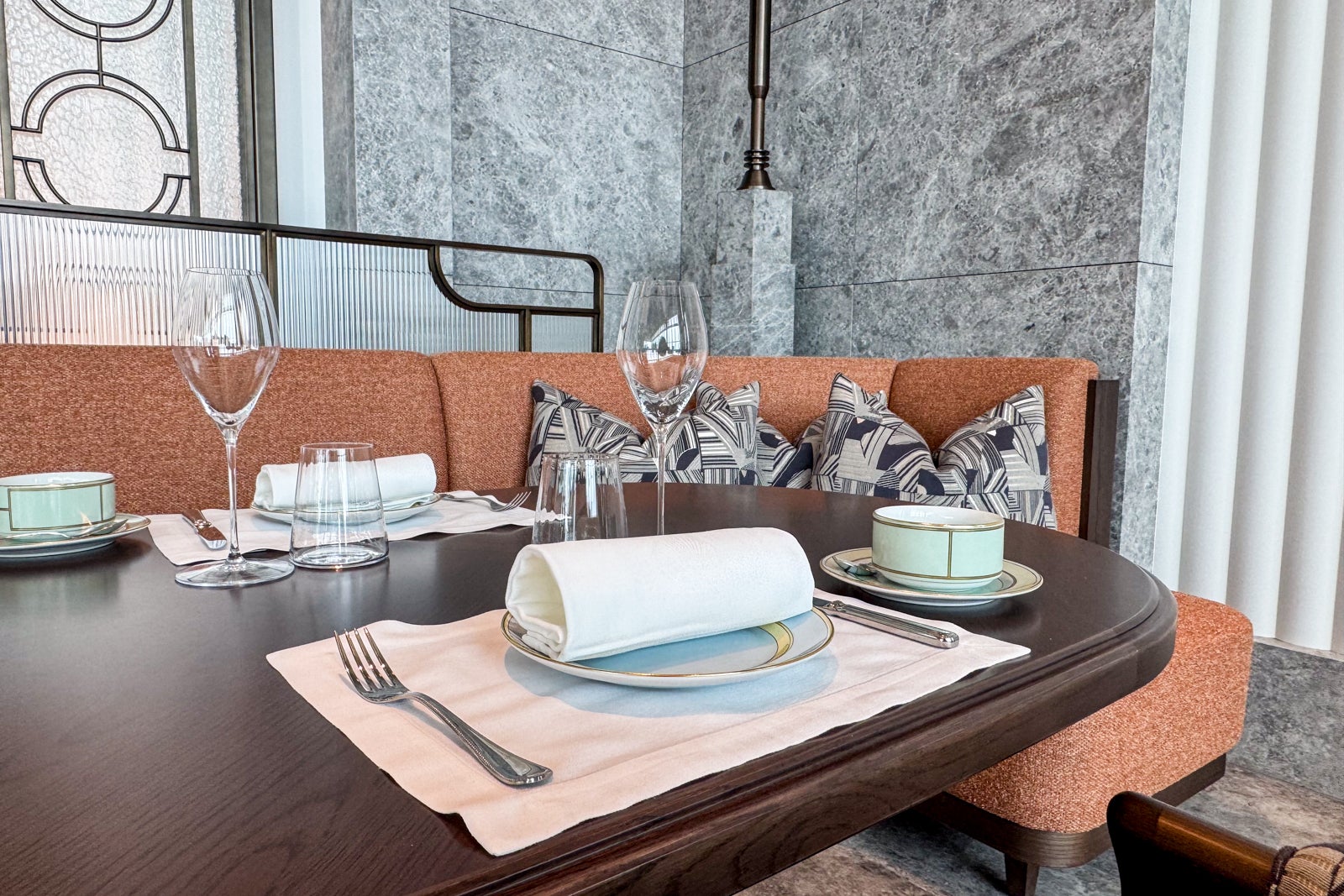
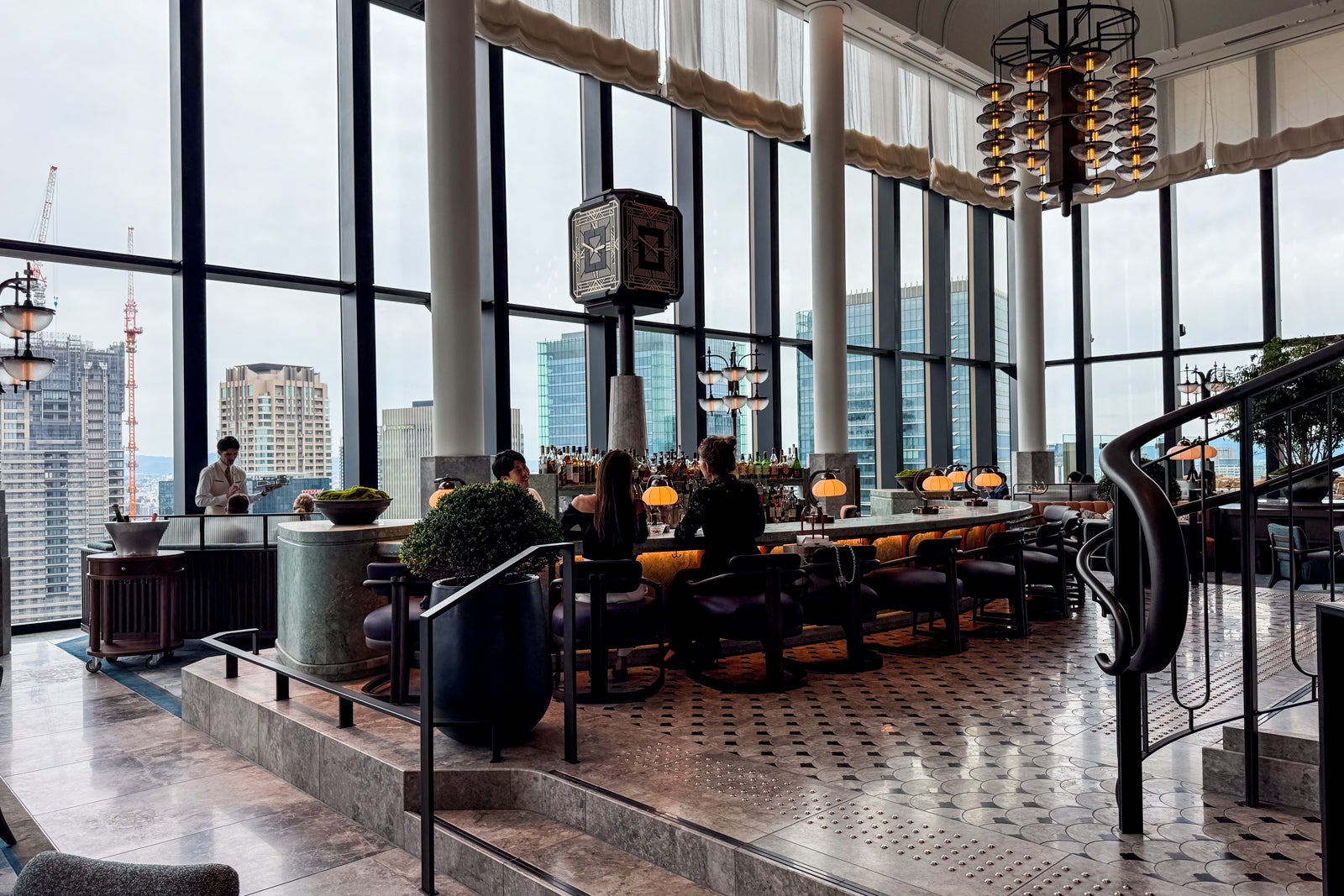
Next slide
1 of 5
ERIC ROSEN/THE POINTS GUY
0
1
2
3
4
Don’t just walk by. Whether you’re fueling up or winding down, our bar beckons. Sip history with a classic Rob Roy ($19), lifted straight from the pages of the 1935 “Waldorf Astoria Bar Book,” or surrender to the allure of the Osaka Rob Roy ($21.50). Imagine this: Yamazaki single malt whispering secrets to Michter’s US 1 Kentucky straight rye, all embraced by persimmon-kissed Mancino Secco vermouth, the dark whisper of Pedro Ximénez sherry, and a final, electrifying spark of yuzu-shiso bitters. It’s not just a drink, it’s an experience.
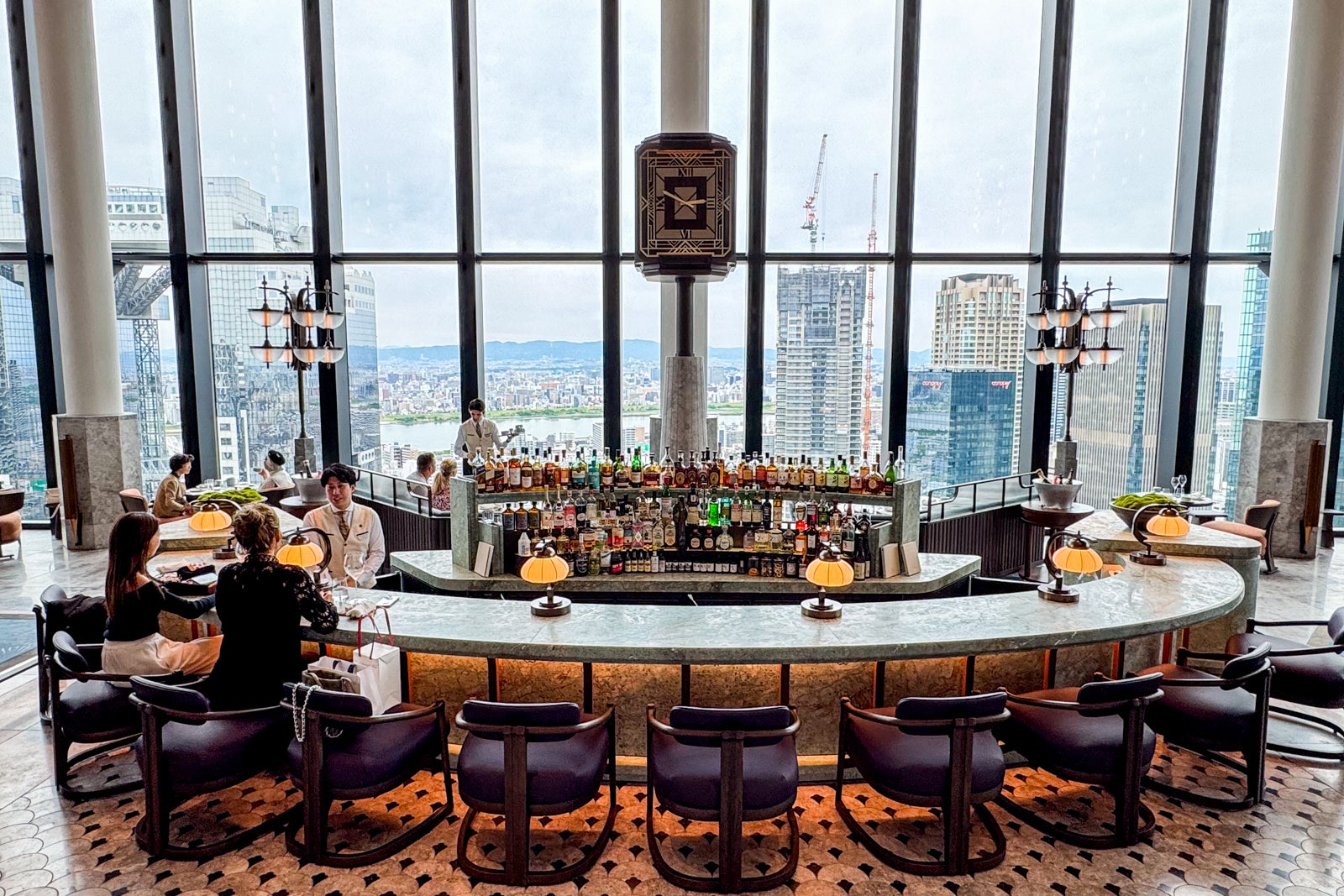
ERIC ROSEN/THE POINTS GUY
The restaurant also has an outdoor deck overlooking the city that’s simply spectacular around sunset.
Previous slide
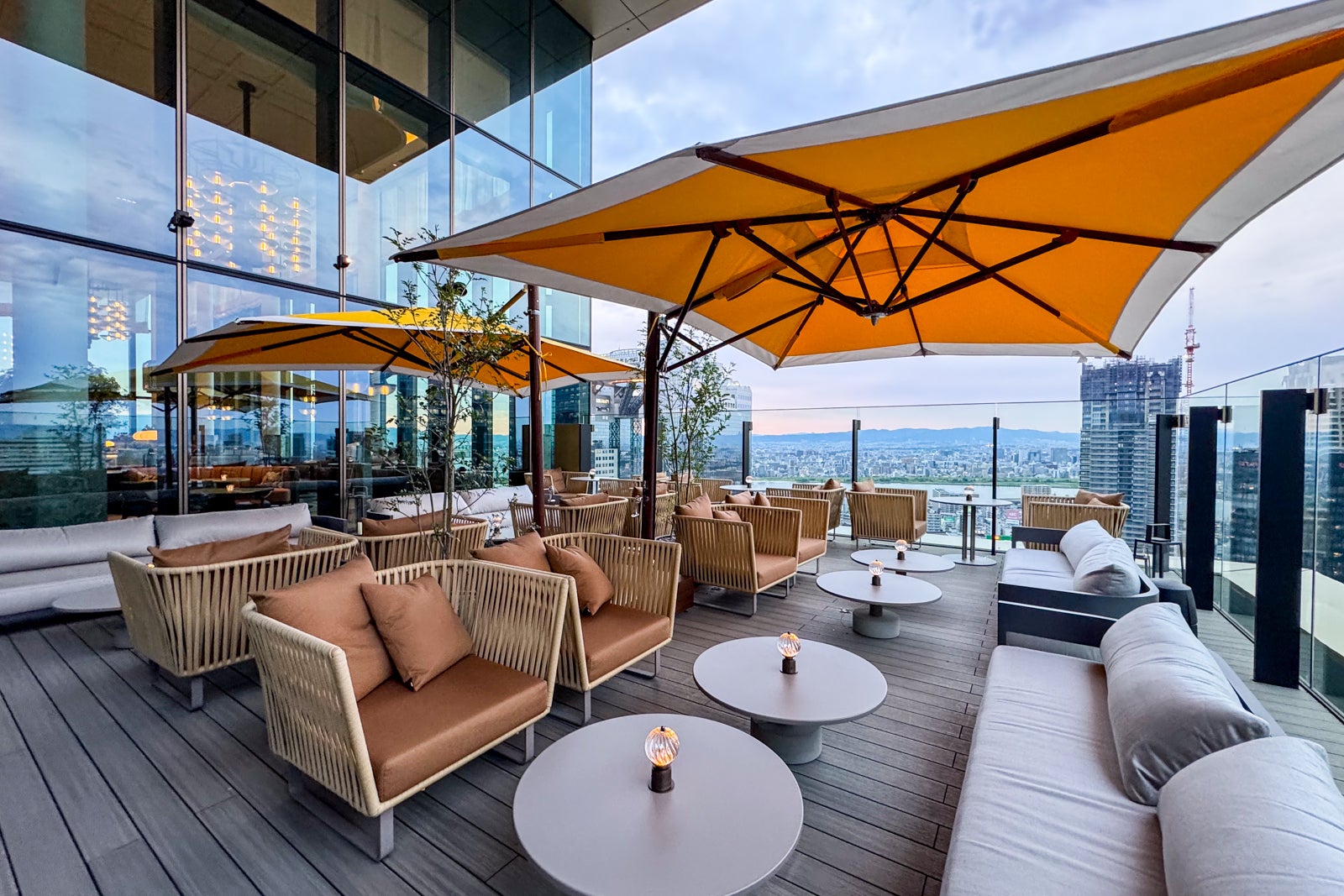
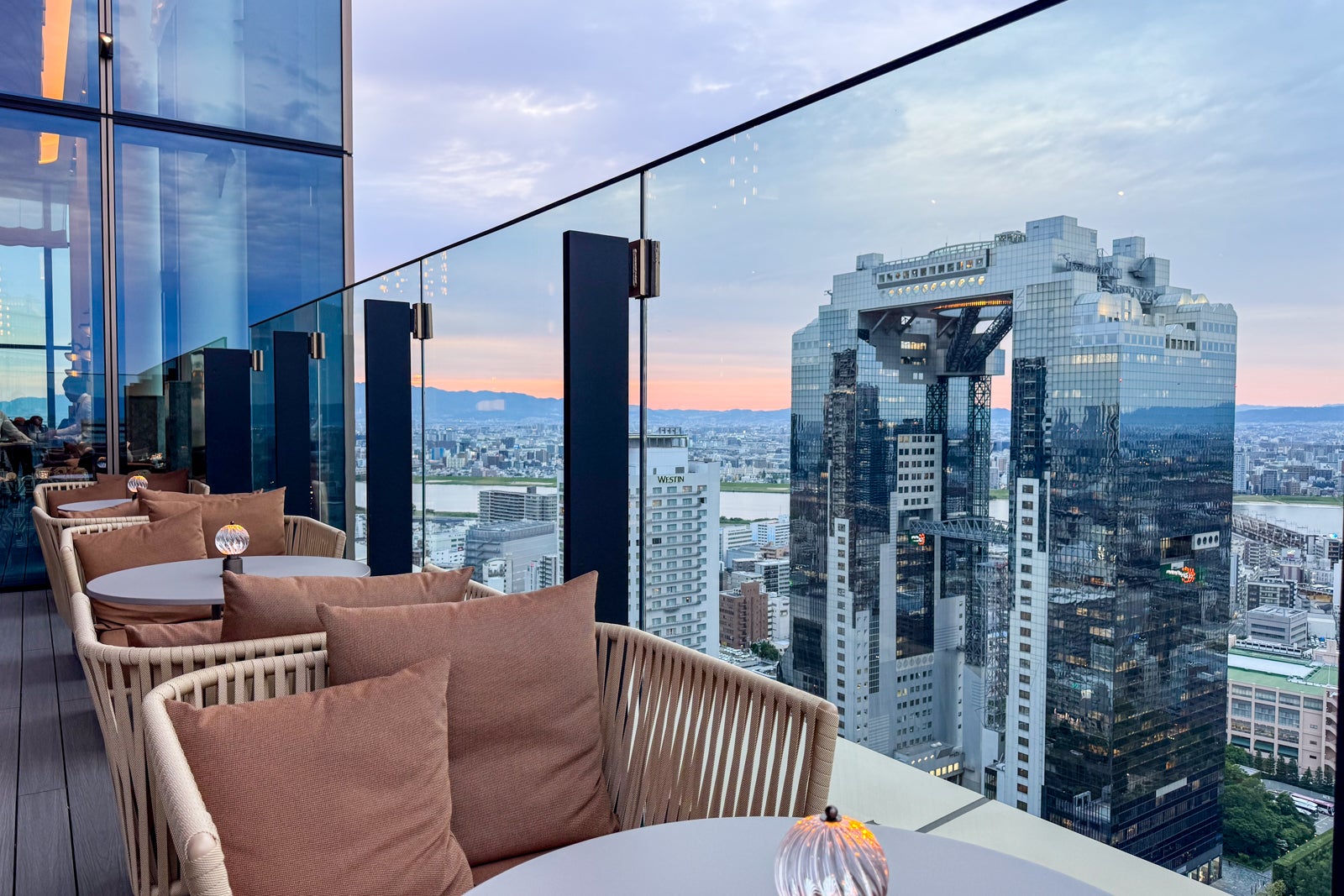
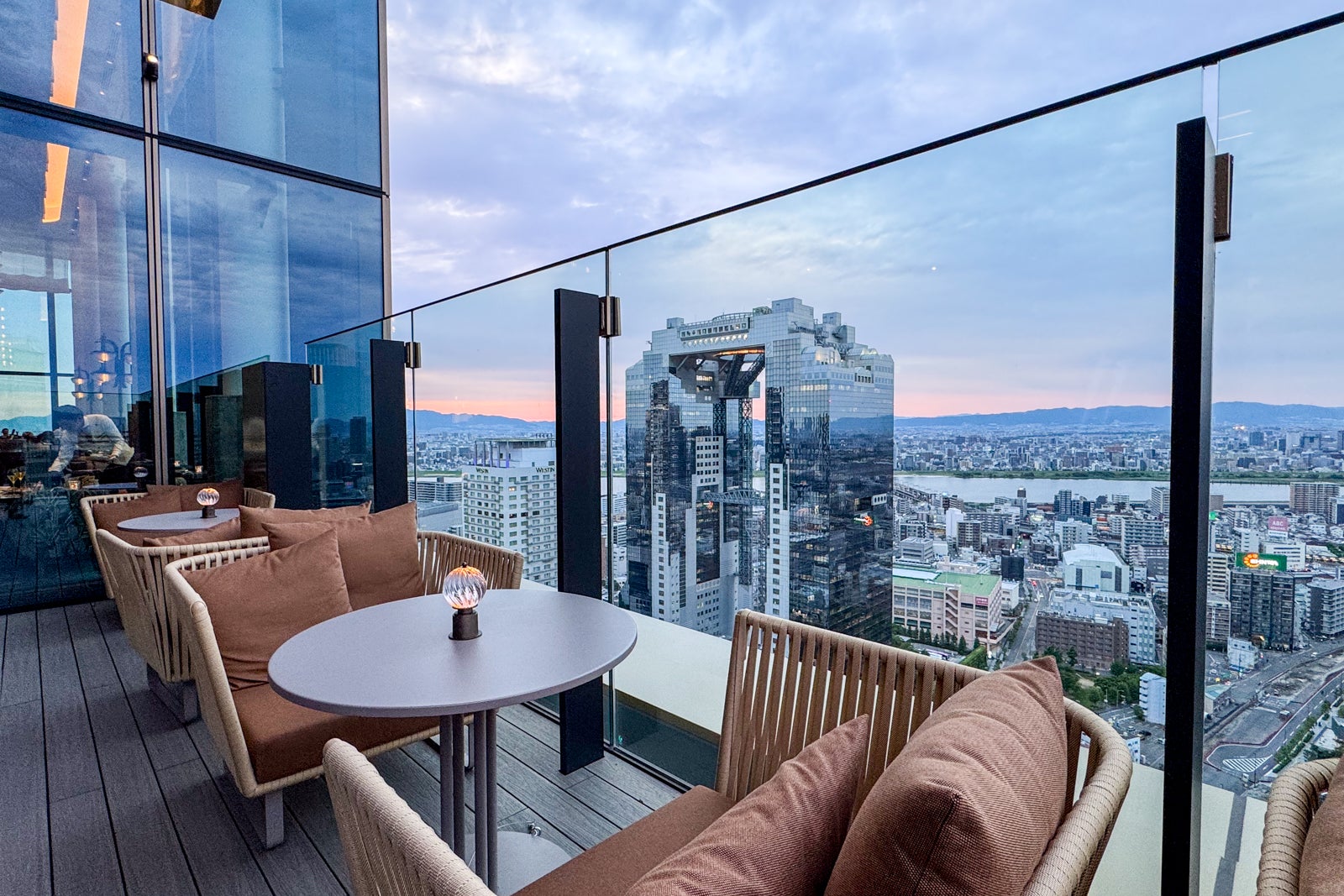
Next slide
1 of 3
ERIC ROSEN/THE POINTS GUY
0
1
2
Jolie Brasserie
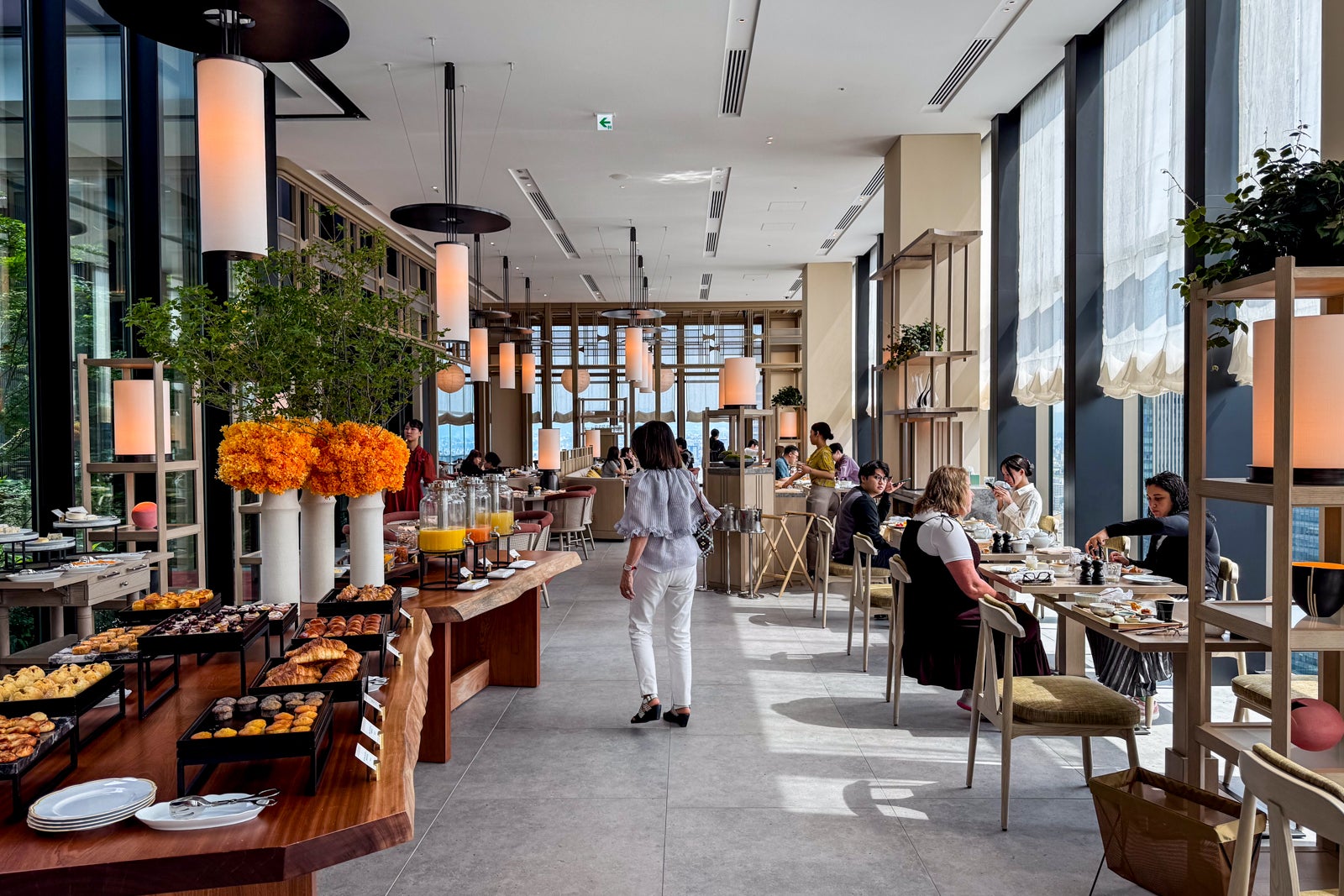
ERIC ROSEN/THE POINTS GUY
Jolie Brasserie: bathed in sunshine and brimming with bonhomie, it’s the hotel’s slice of casual French charm. Mornings burst to life between 6:30 and 10:30 a.m., a parade of guests captivated by the abundant buffet. A sweet or savory dilemma? Decadent pastries vie for attention with glistening fresh fruit and tempting charcuterie. But the real seduction lies in the à la carte: picture avocado-laden toast crowned with perfectly poached eggs, or slurpable Osaka-style udon, the rich umami broth embracing tender grilled Nanatani duck, flown in straight from Kyoto.
Previous slide
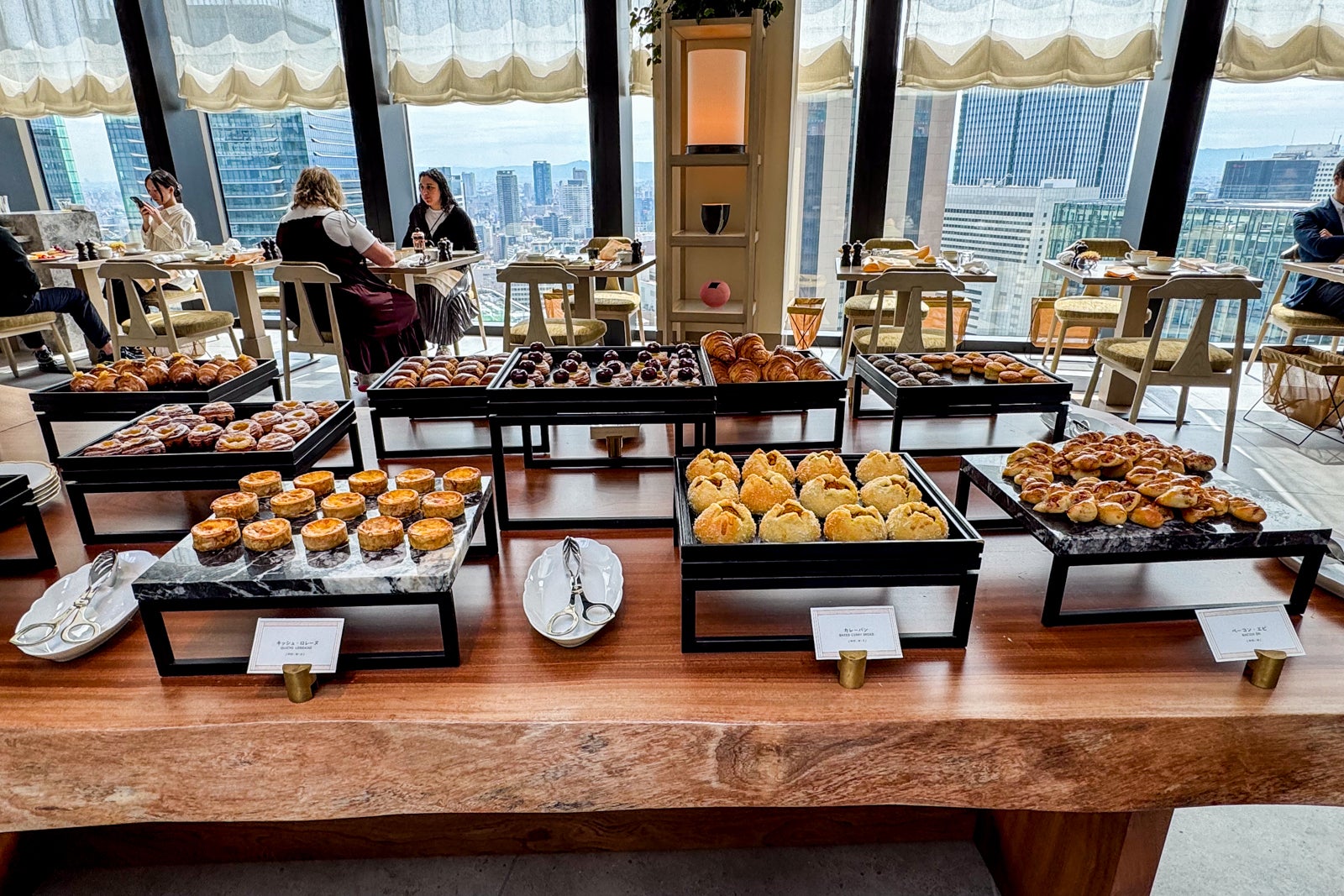
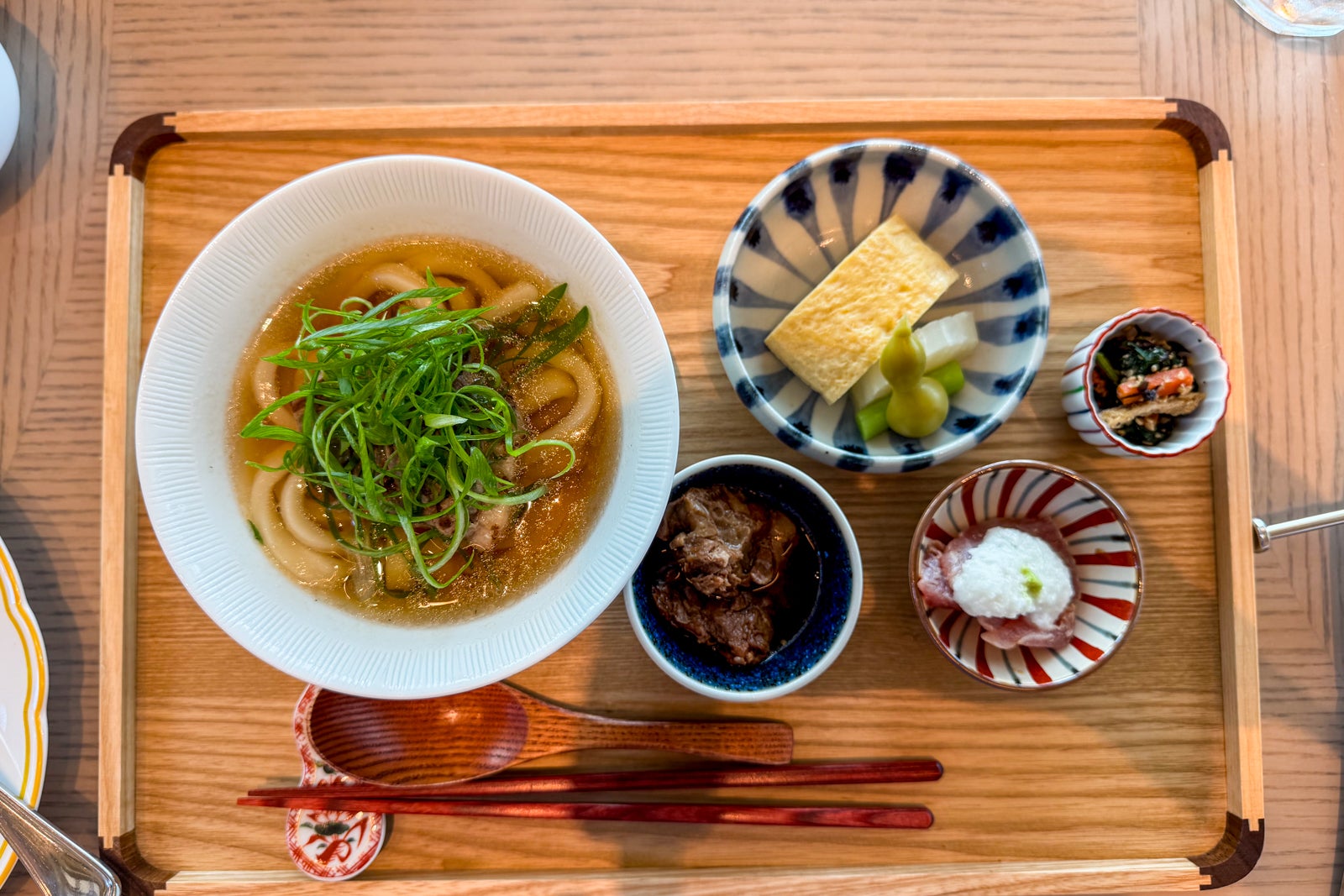
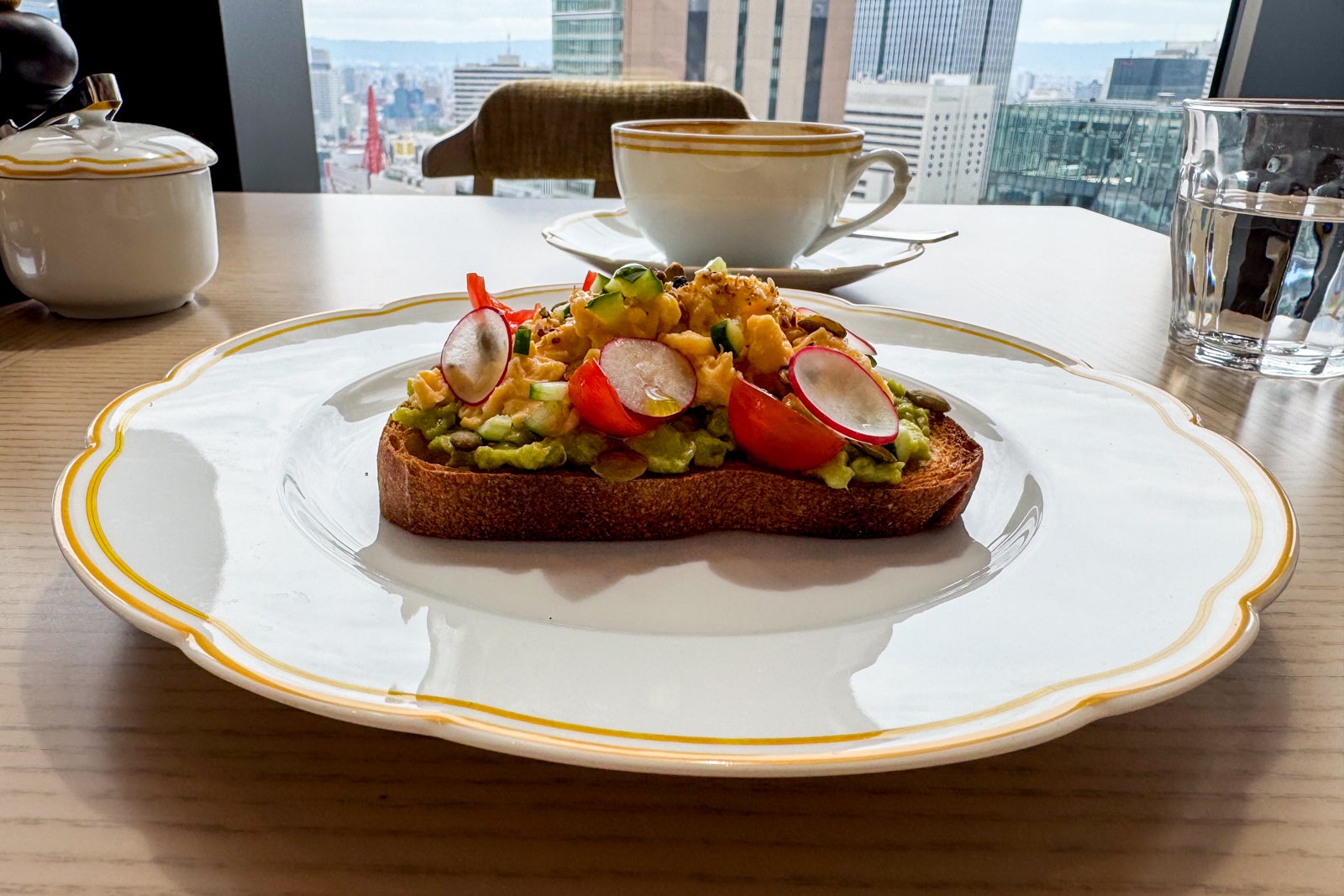
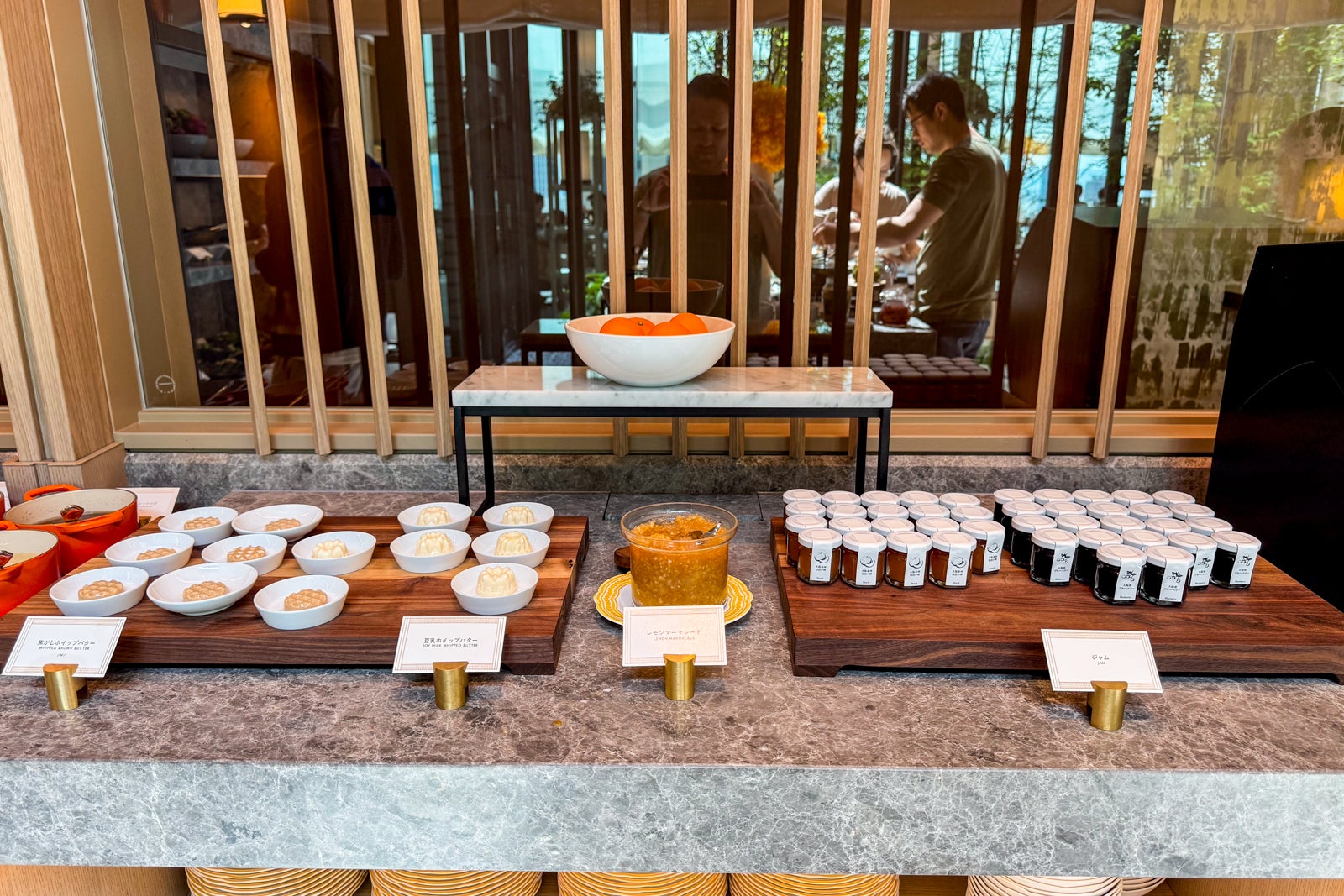
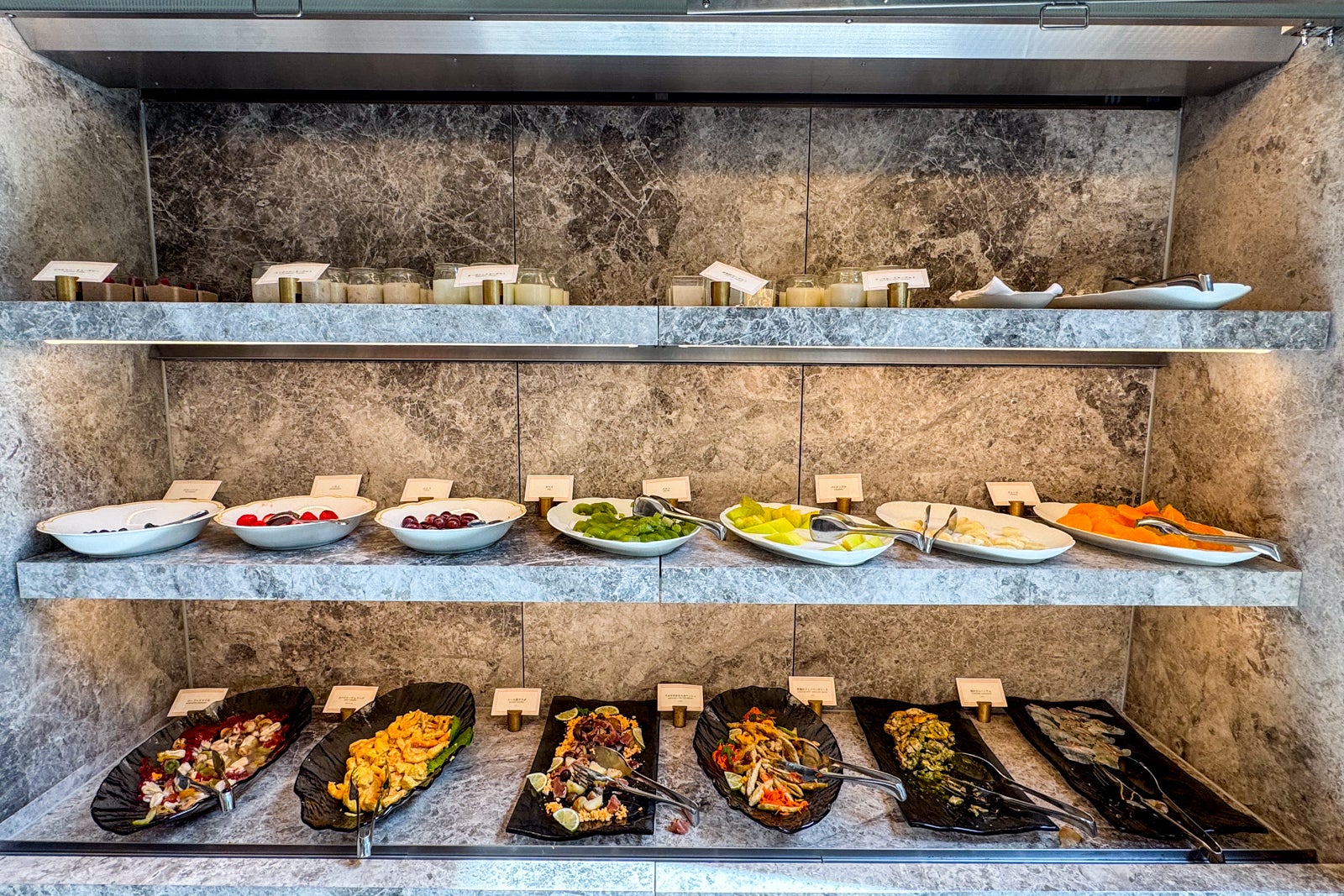
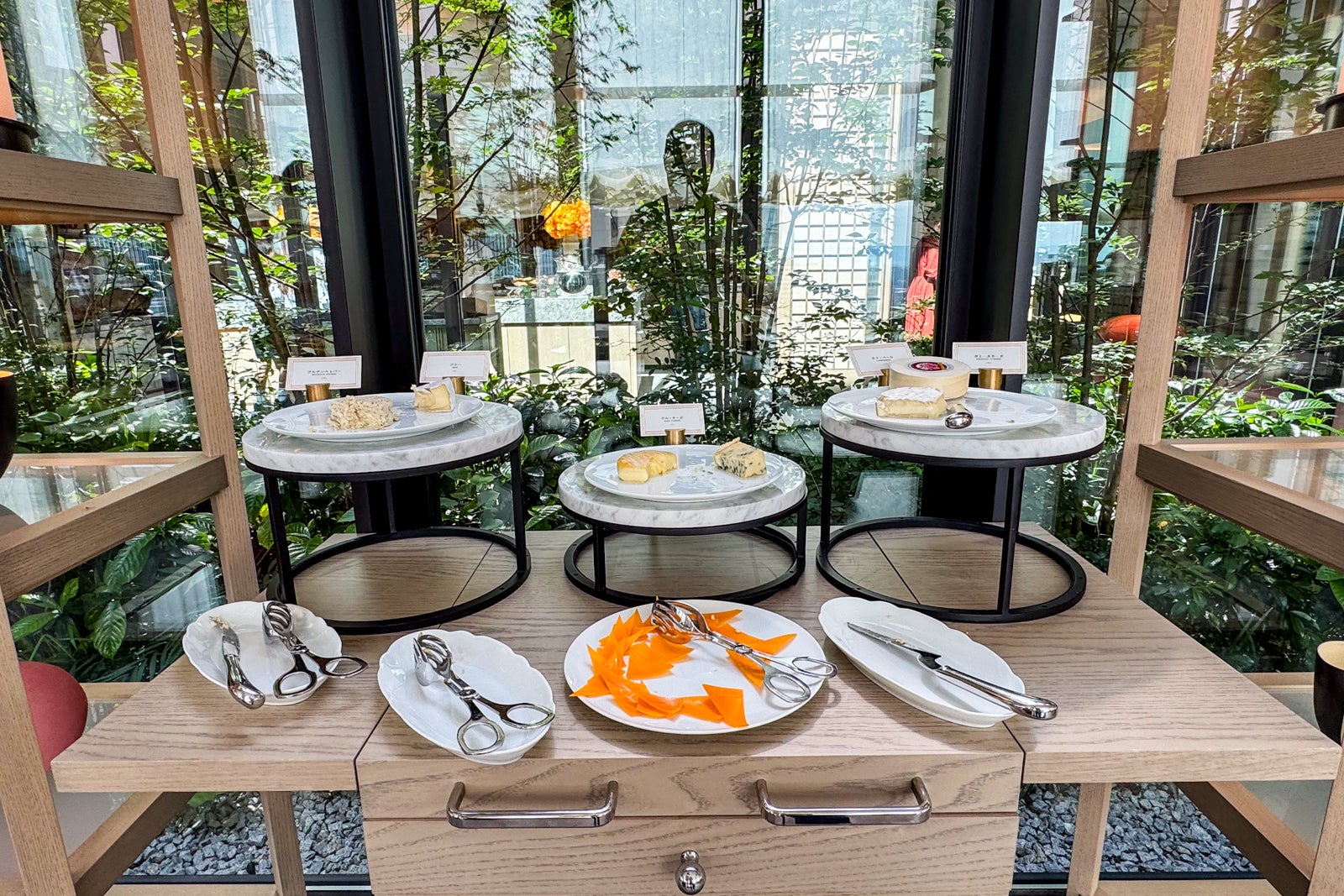

Next slide
1 of 7
ERIC ROSEN/THE POINTS GUY
0
1
2
3
4
5
6
Craving a culinary adventure? From 11:30 a.m. to 2:30 p.m. for lunch and 5:30 to 9 p.m. for dinner, escape to a world where Parisian charm dances with Asian zest. Imagine diving into a classic Quiche Lorraine ($17) or being tantalized by Tuna Tartare ($20) – a vibrant blend of avocado puree, crisp radish, delicate shallots, and a zesty ponzu kick. Seeking comfort? Indulge in a Croque Madame ($20) or the rich depths of French Onion Soup ($20). For the ultimate indulgence, explore our Wagyu Steak selection (prices vary) – each cut prepared to your desire, paired with your perfect sauce and golden, crispy fries. Your taste buds will thank you.
Previous slide
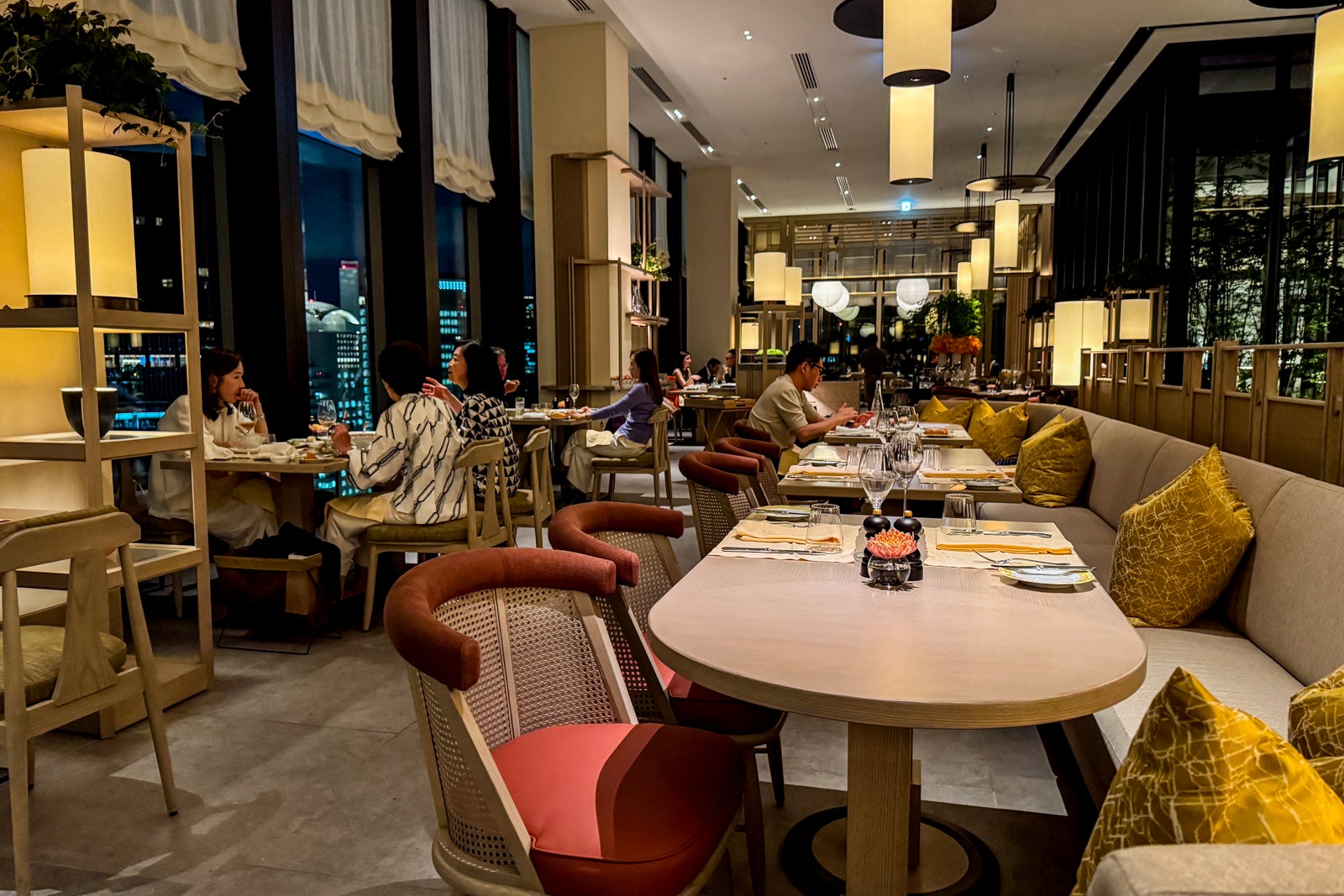
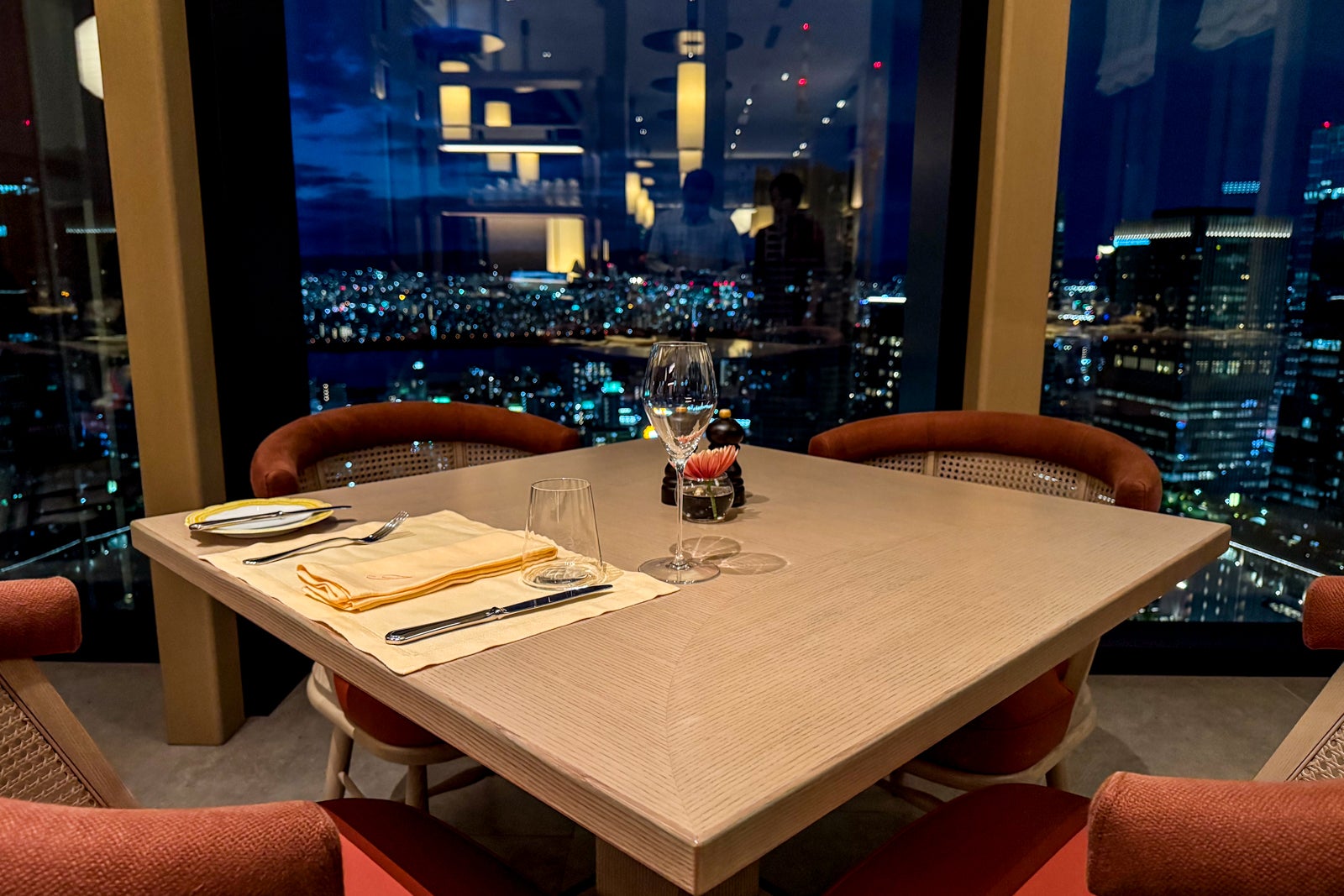


Next slide
1 of 4
ERIC ROSEN/THE POINTS GUY
0
1
2
3
Tsukimi
As twilight descends, Tsukimi awakens. From Thursday to Monday, 5:30-9 p.m., step into our refined teppanyaki theater where culinary artistry unfolds before your very eyes.
Previous slide
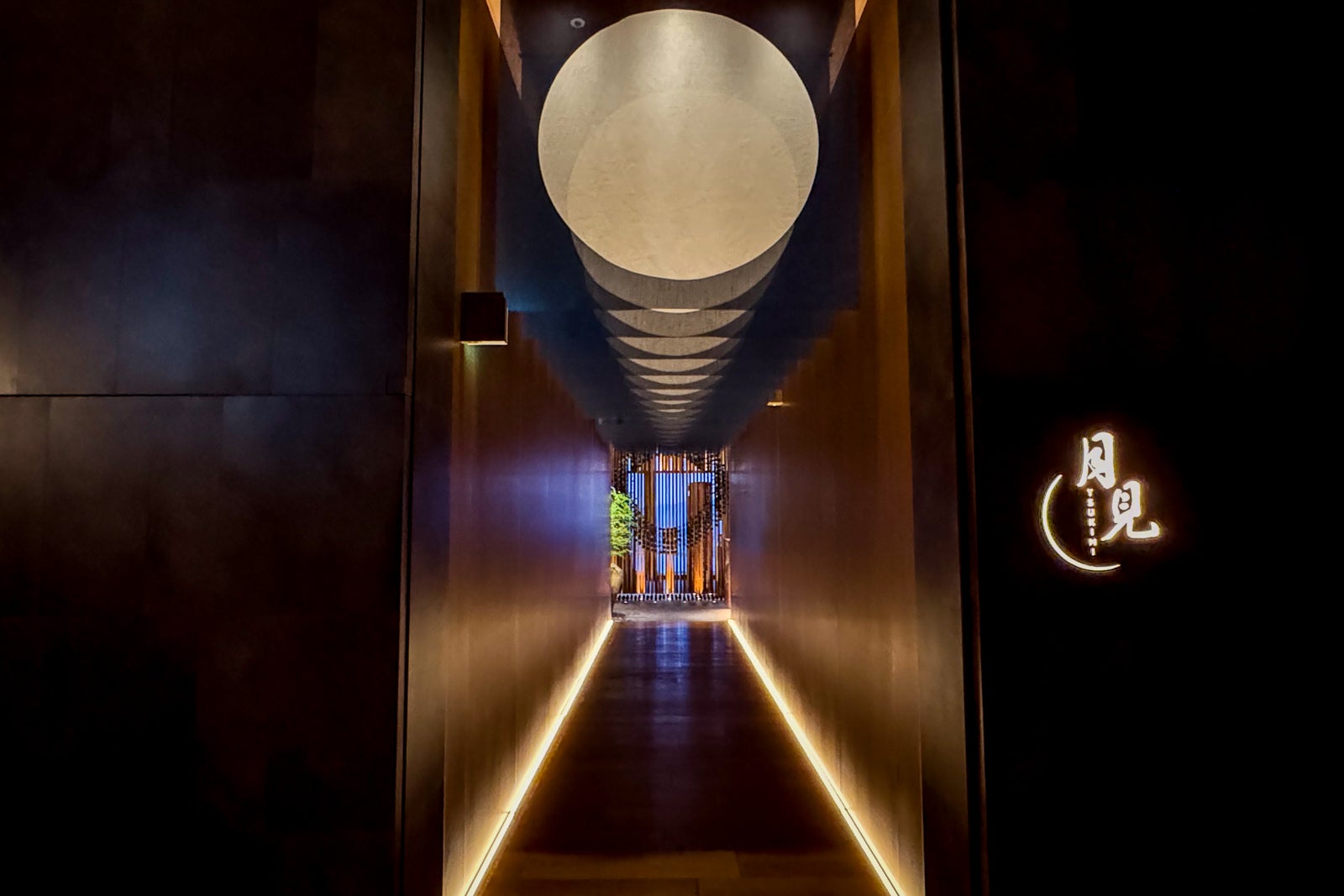
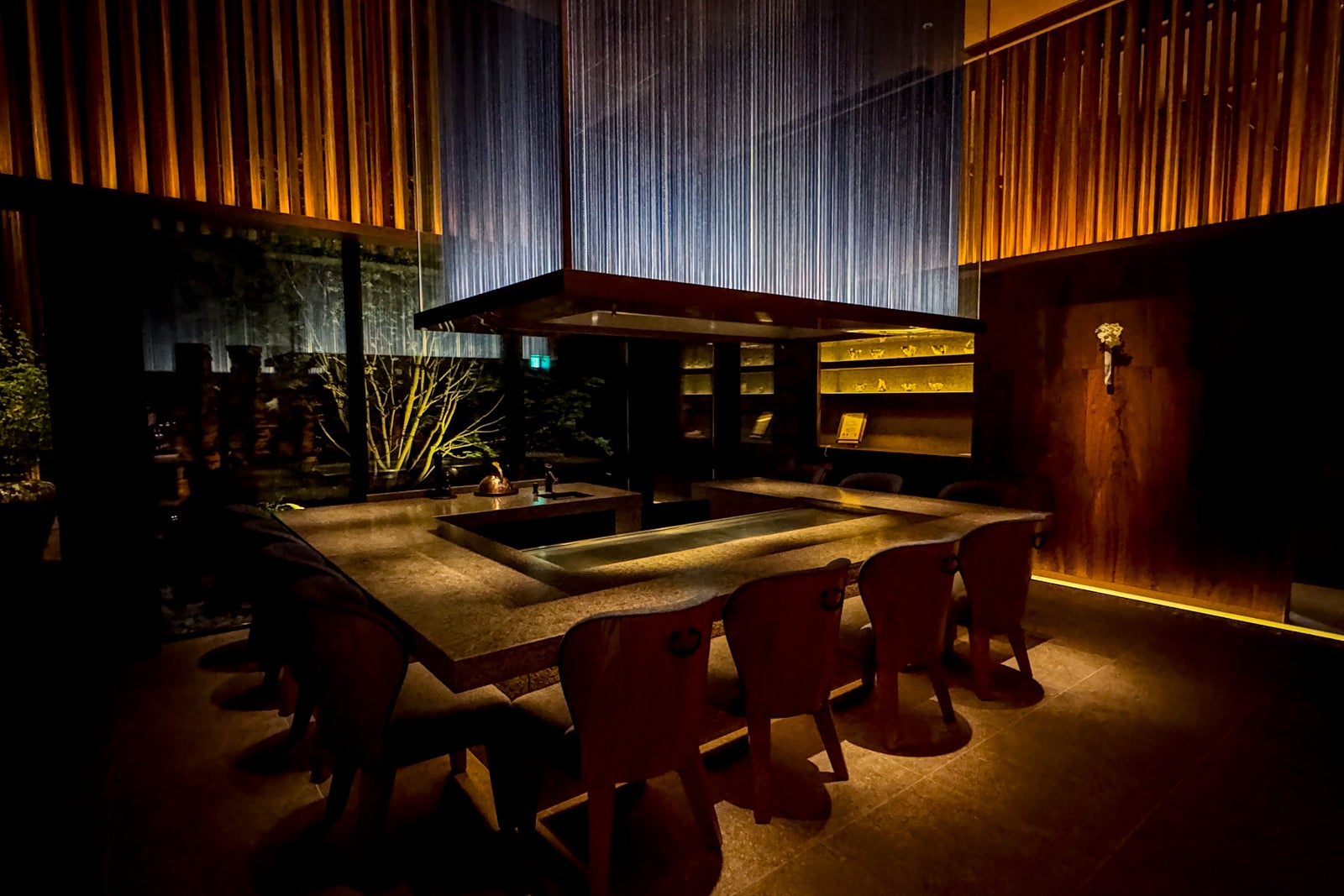
Next slide
1 of 2
ERIC ROSEN/THE POINTS GUY
0
1
Imagine: silken, hand-cut soba, a delicate nest cradling the ocean’s freshest kiss – squid tartare, awakened by an earthy whisper of wild mushroom sauce. Or picture this: sea bream, glistening and pristine, just hours from the market, now bathed in a vibrant shrimp sauce, its sweetness lifted by a cloud of airy plum foam, all resting upon a bed of springy maitake mushrooms and tender white asparagus, each bite a journey through the season. Finally, savor the profound depth of seasonal white asparagus, bathed in a rich onion-garlic miso cream, swimming in a concentrated chicken consommé, a broth so intense it sings of umami.
Previous slide

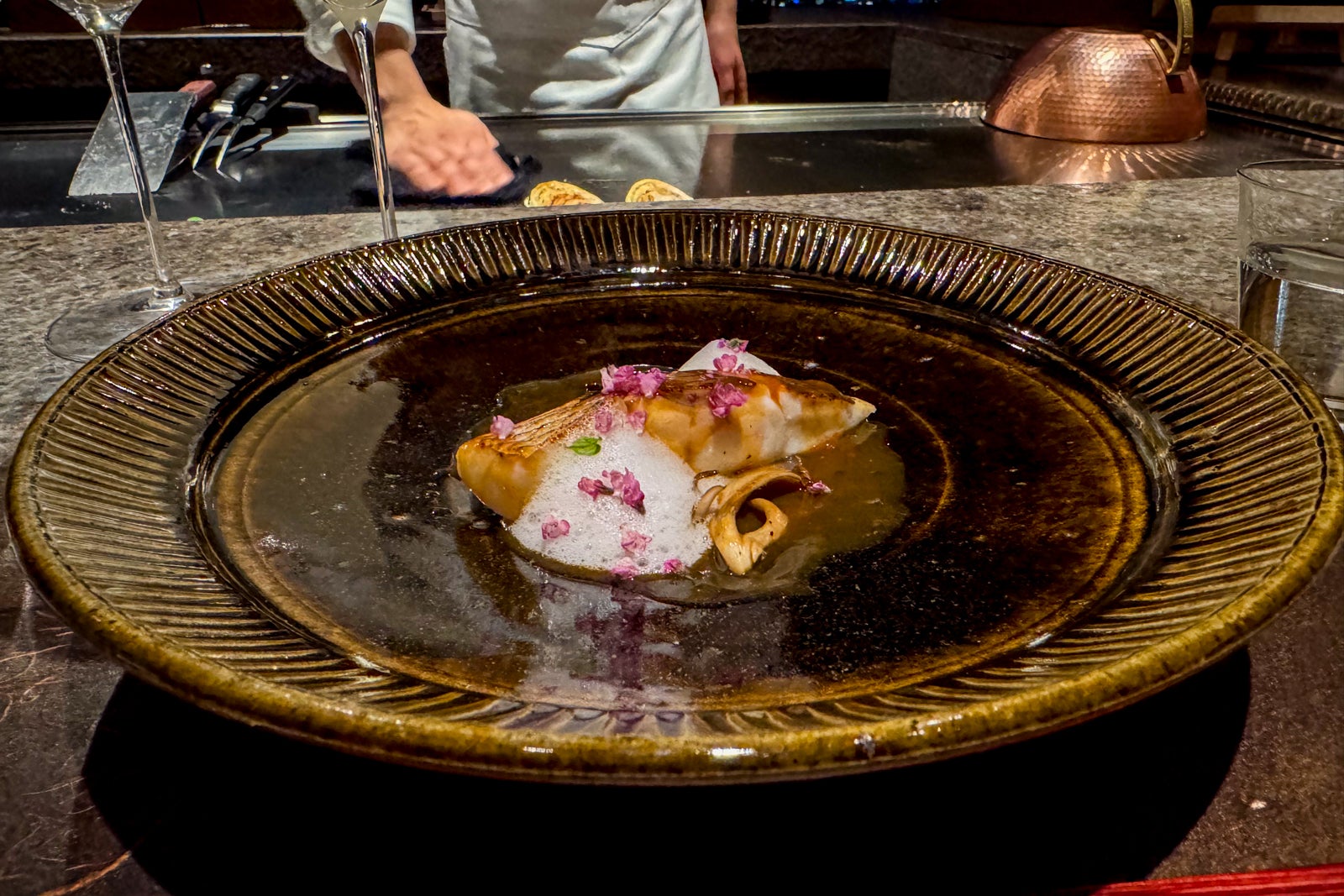
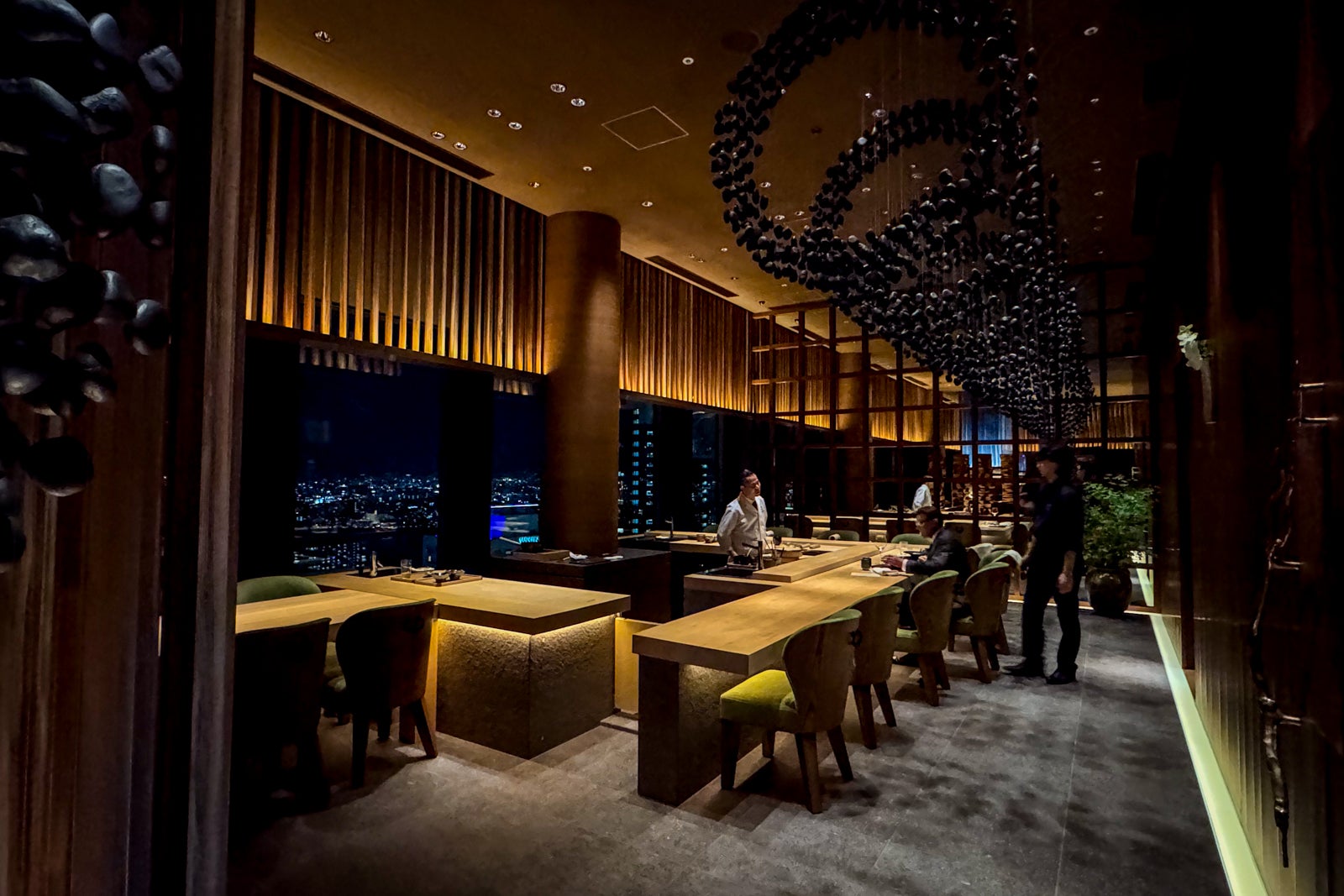
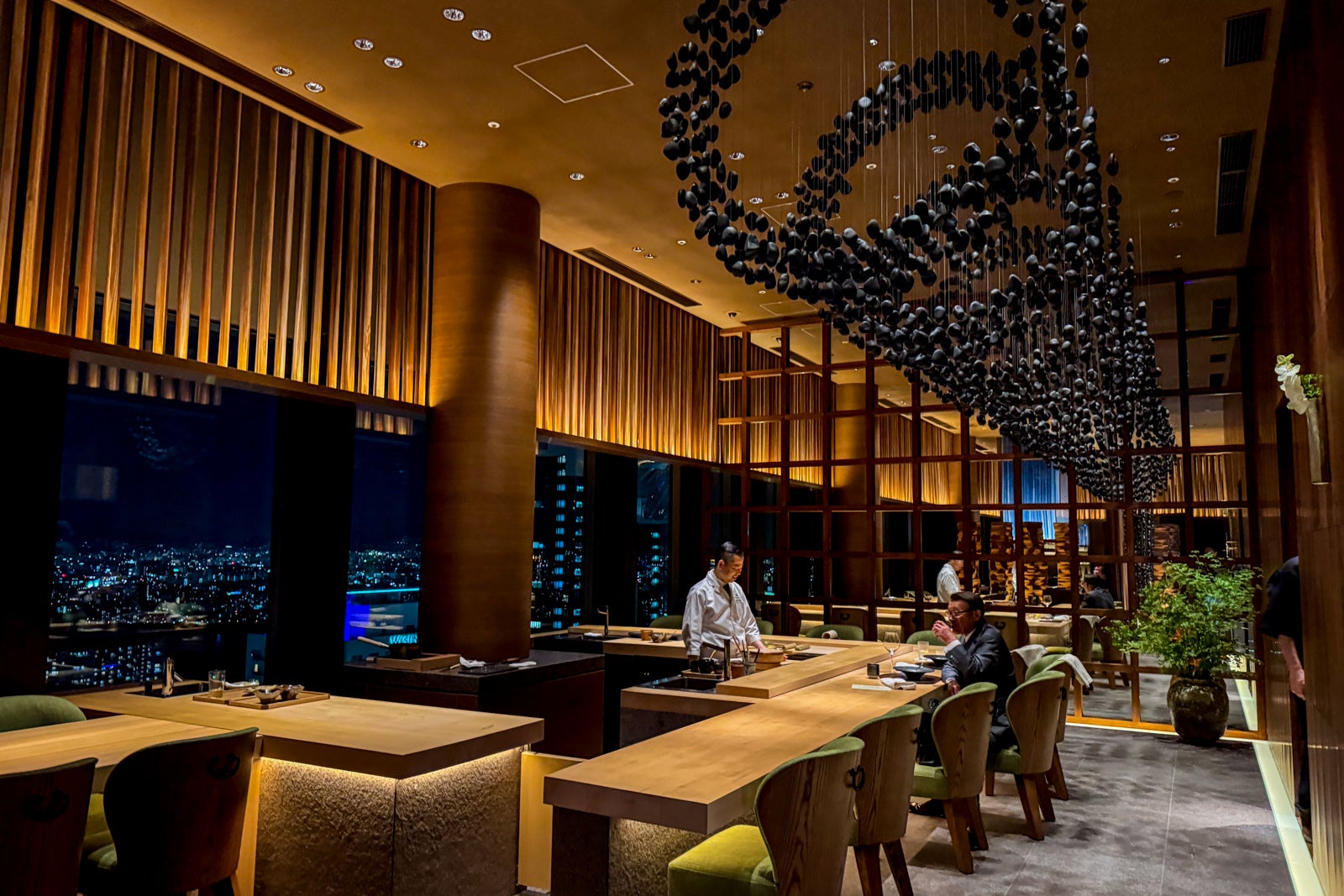
Next slide
1 of 4
ERIC ROSEN/THE POINTS GUY
0
1
2
3
But the crescendo? A whisper-thin slice of Tajima Kuroge Wagyu, so marbled it resembled a painter’s masterpiece. We presented its pedigree alongside – a certificate tracing its lineage, even boasting the cow’s unique noseprint, a bovine fingerprint. Hours of slow cooking rendered it silken, yielding to the slightest pressure, before a kiss of charcoal smoke transformed it into pure, unadulterated indulgence.
Previous slide
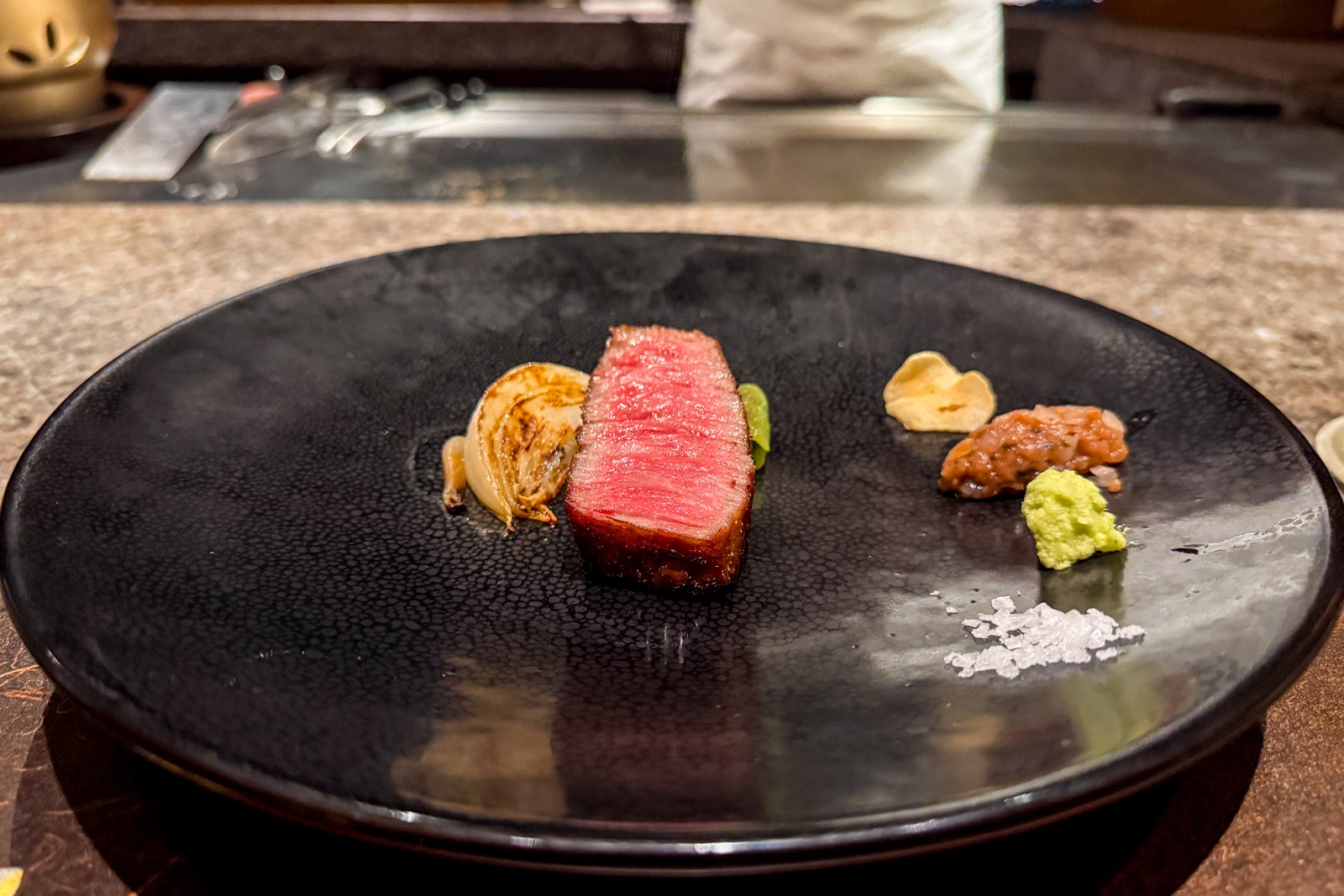

Next slide
1 of 2
ERIC ROSEN/THE POINTS GUY
0
1
Still have an appetite for adventure? Dive into a mountain of seafood fried rice, jeweled with tiny, blush-pink sakura shrimp and a confetti of pickled vegetables. Then, prepare for a palate awakening: sake ice cream, kissed by the bracing chill of lemongrass granita. An experience like this begins at $292 per person.
Canes & Tales
Seek the jade door whispering secrets beside Peacock Alley. Beyond, Canes & Tales awaits. Wednesdays, Thursdays, and Sundays, lose yourself from 5 p.m. until the clock strikes twelve. Fridays and Saturdays, the enchantment lingers until one.
Previous slide
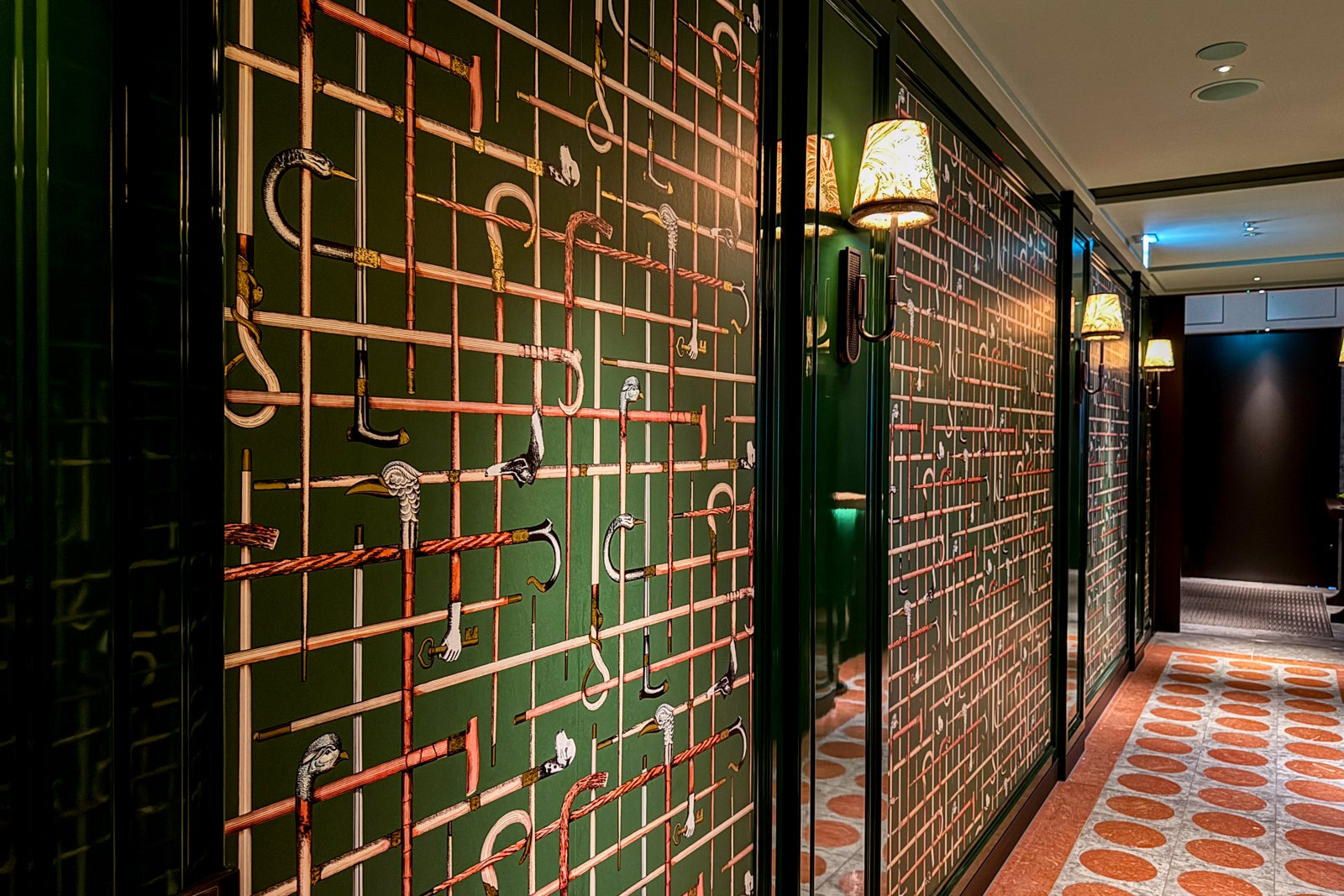
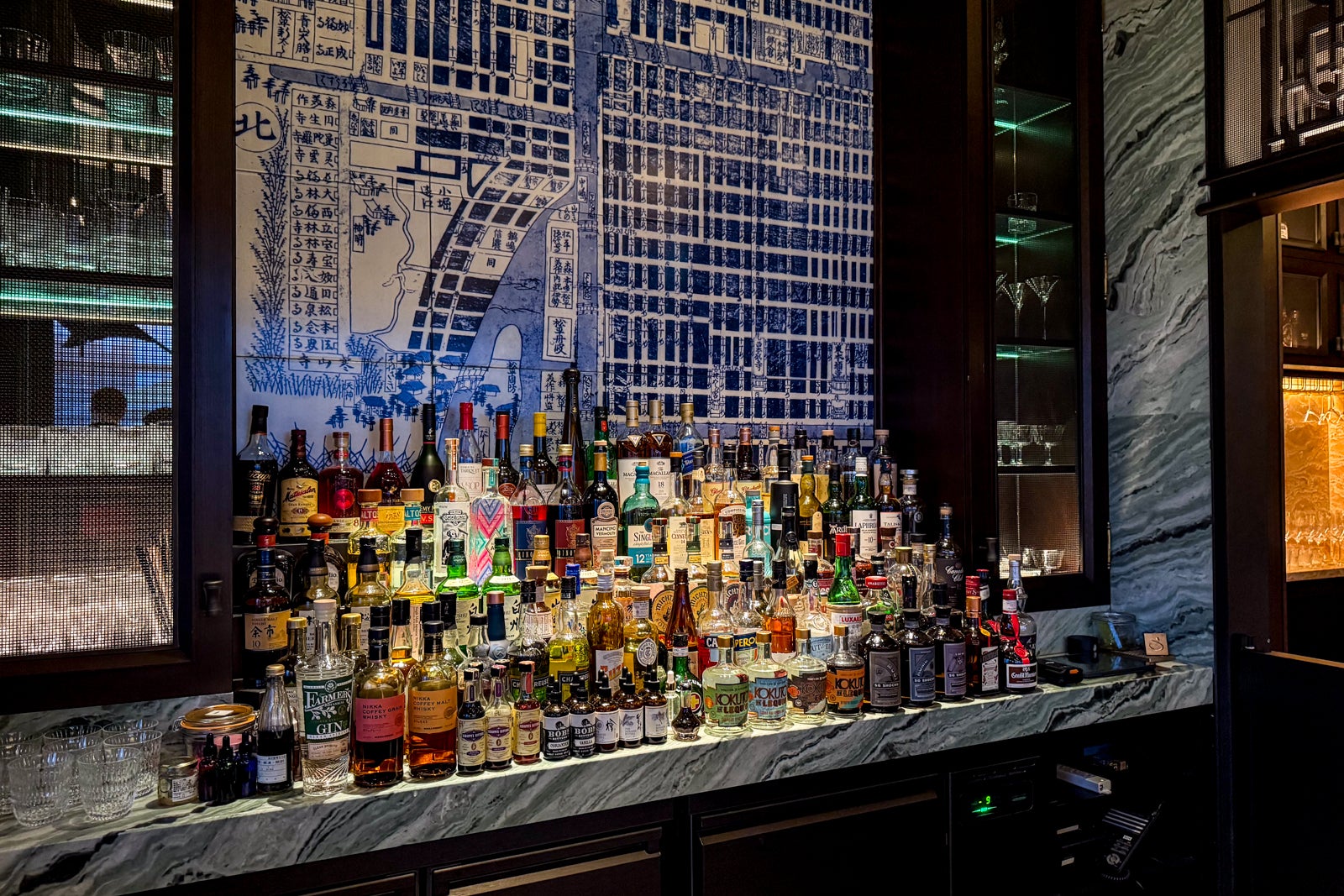
Next slide
1 of 2
ERIC ROSEN/THE POINTS GUY
0
1
Imagine sinking into a lapis lazuli-blue velvet sofa, the topaz-yellow leather of a nearby chair gleaming under the soft light. This isn’t just a bar; it’s a time capsule, a whispered secret wrapped in natty wallpaper and art deco dreams. And in your hand? Perhaps the Camel’s Back, a $19 elixir of Roku gin, Chartreuse’s herbal intrigue, the clean snap of pear distillate, a curious dance of gobo and gari cordial, all lifted by the bubbly kiss of ginger beer. Each sip is a journey.
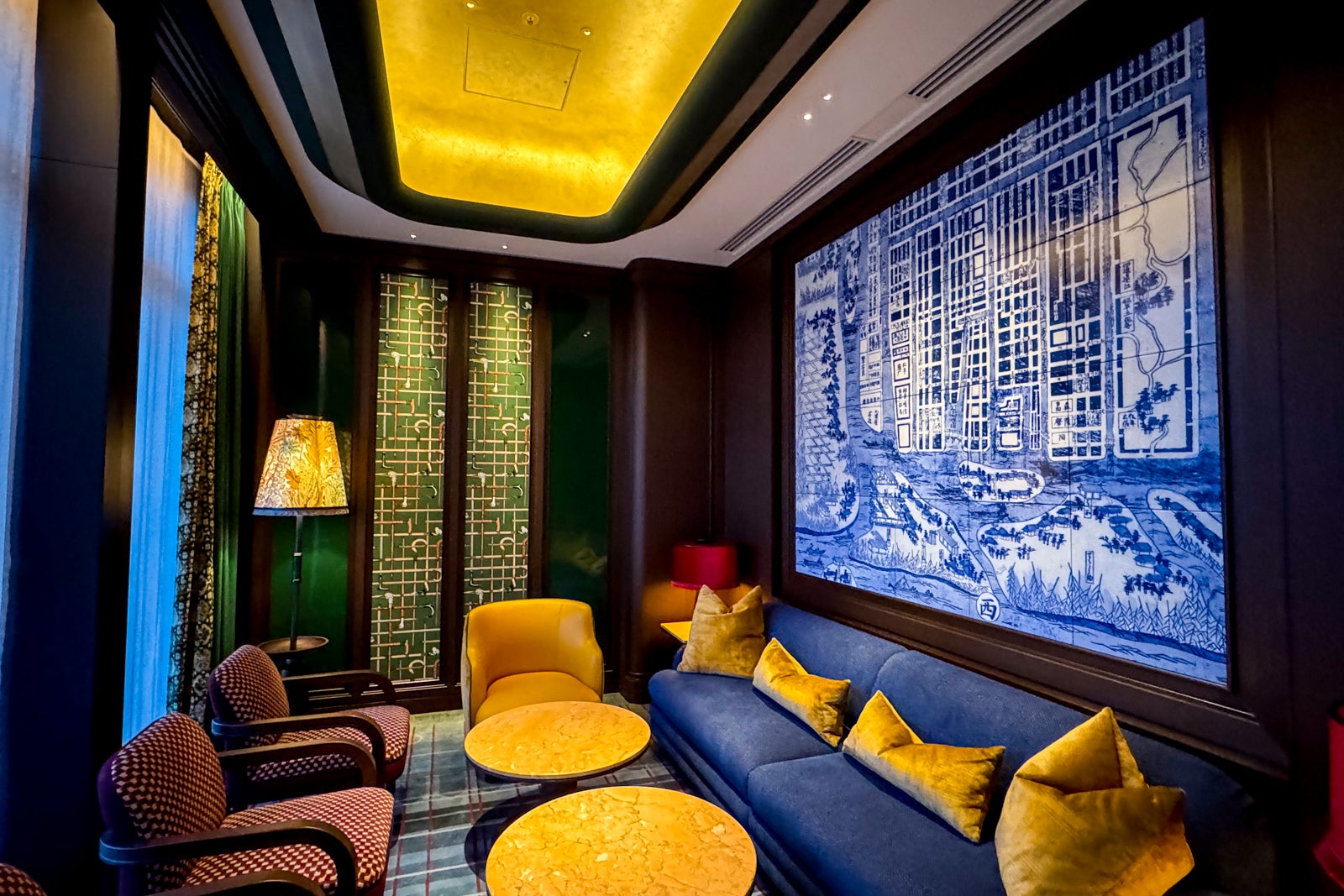
ERIC ROSEN/THE POINTS GUY
Amenities and service
Previous slide
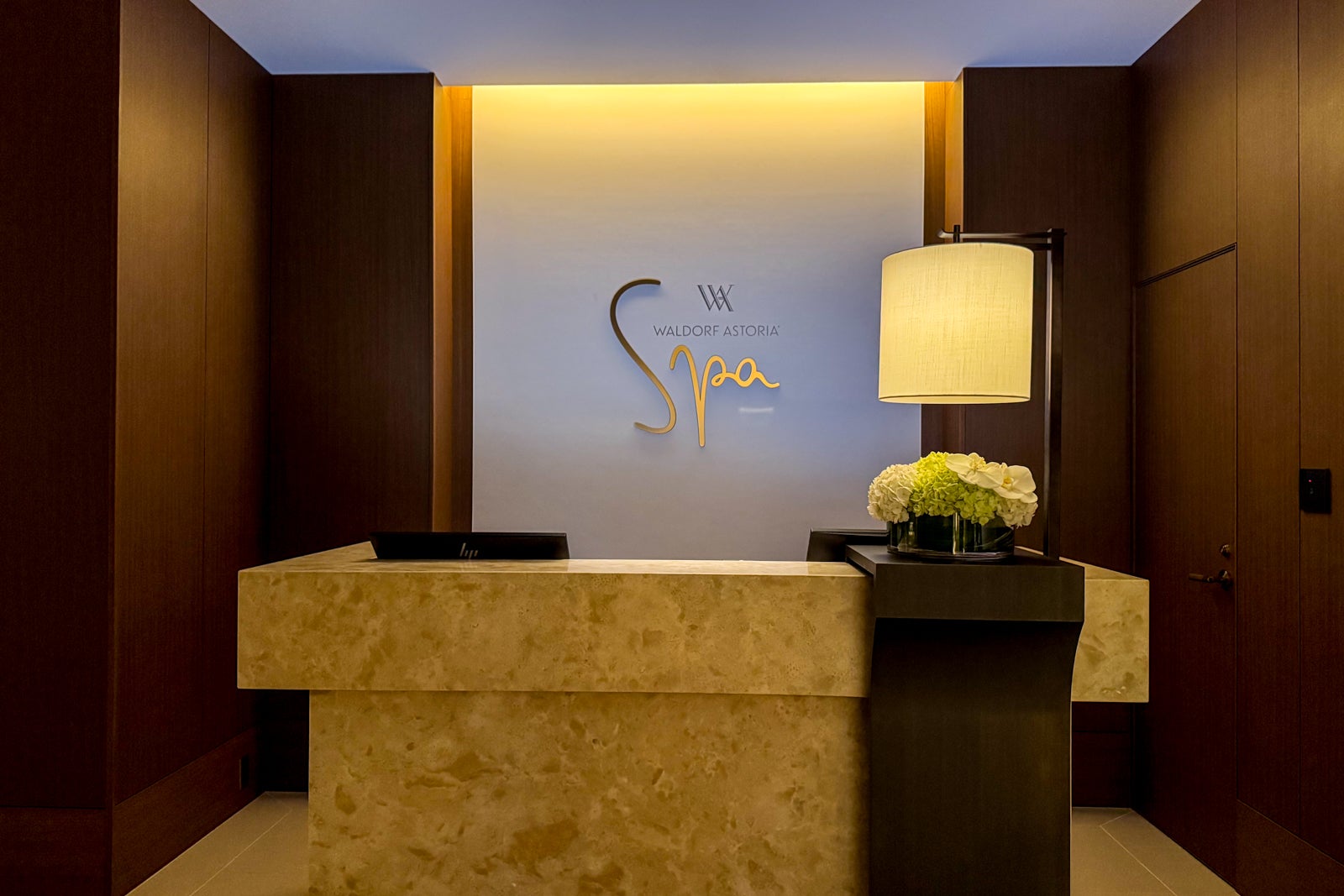
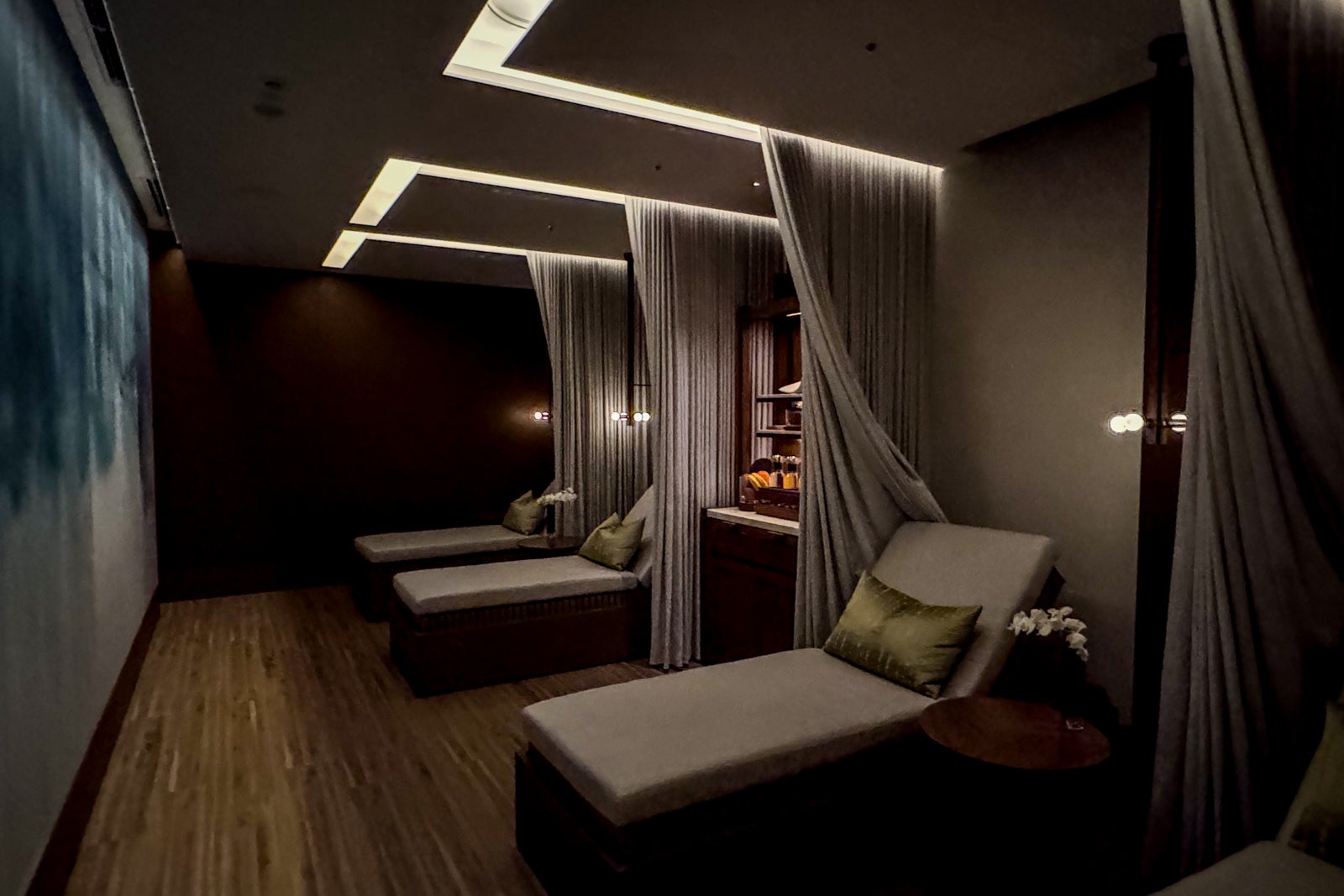
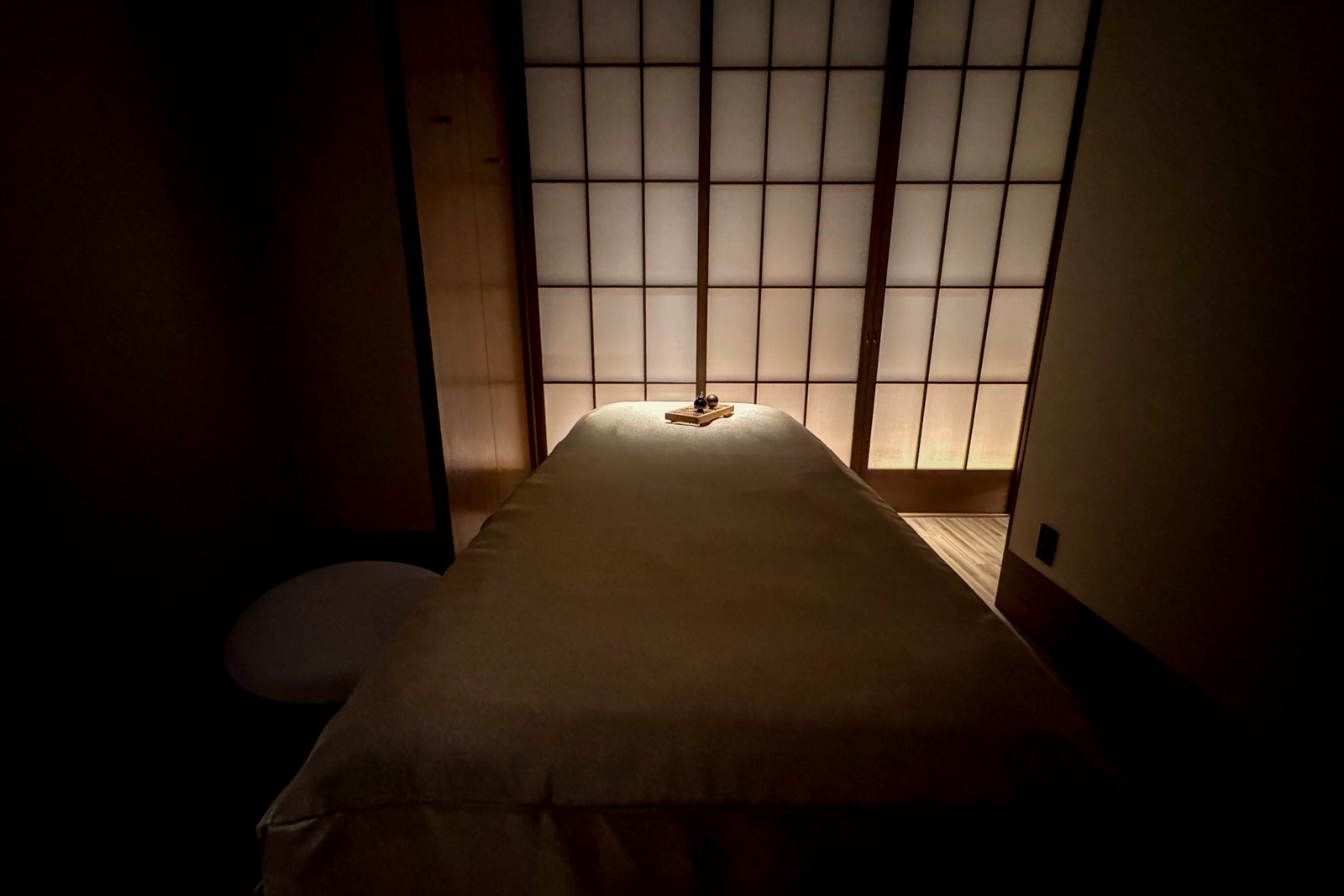

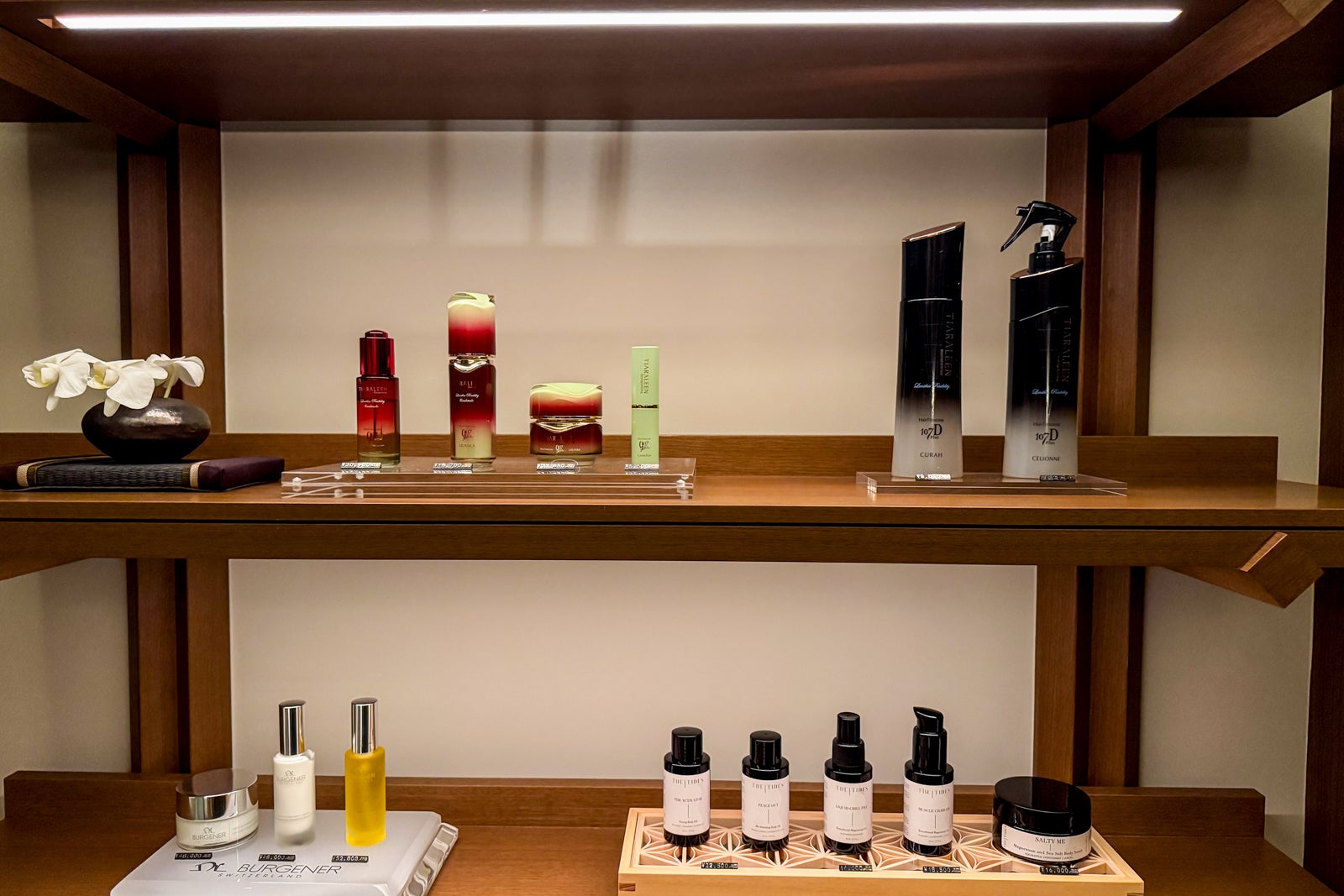
Next slide
1 of 5
ERIC ROSEN/THE POINTS GUY
0
1
2
3
4
From the moment I stepped inside, the hotel embraced me like a long-lost friend. Every staff member, it seemed, knew my name, anticipating my needs with a warmth that felt both genuine and delightfully discreet.
Escape into serenity at our intimate spa, open daily from 10 a.m. to 9 p.m. Indulge in luxurious treatments within one of our four private rooms, featuring exclusive skincare from renowned brands like La Prairie and Tiaraleen. Prepare to be pampered.
-
The hotel’s fitness center is stocked with the latest Technogym cardio and weight equipment. “Steps from your workout, escape to a shimmering oasis. This family-friendly pool boasts breathtaking skyline views, though on our visit, the tranquil waters offered a serene, kid-free escape.”
-
Even if you’re not hosting an event, ask to check out the hotel’s chapel space; it’s a stunner.
Previous slide

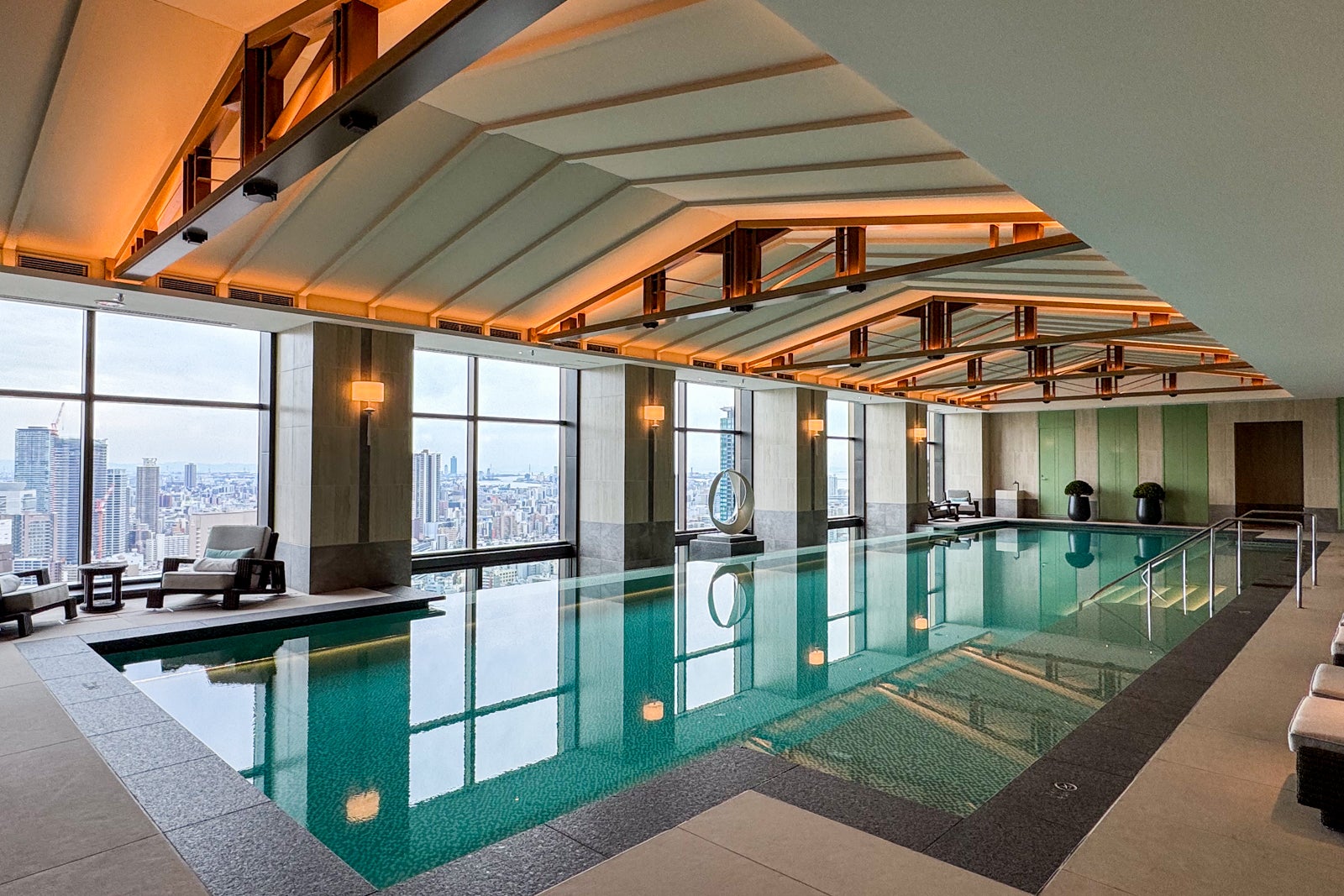
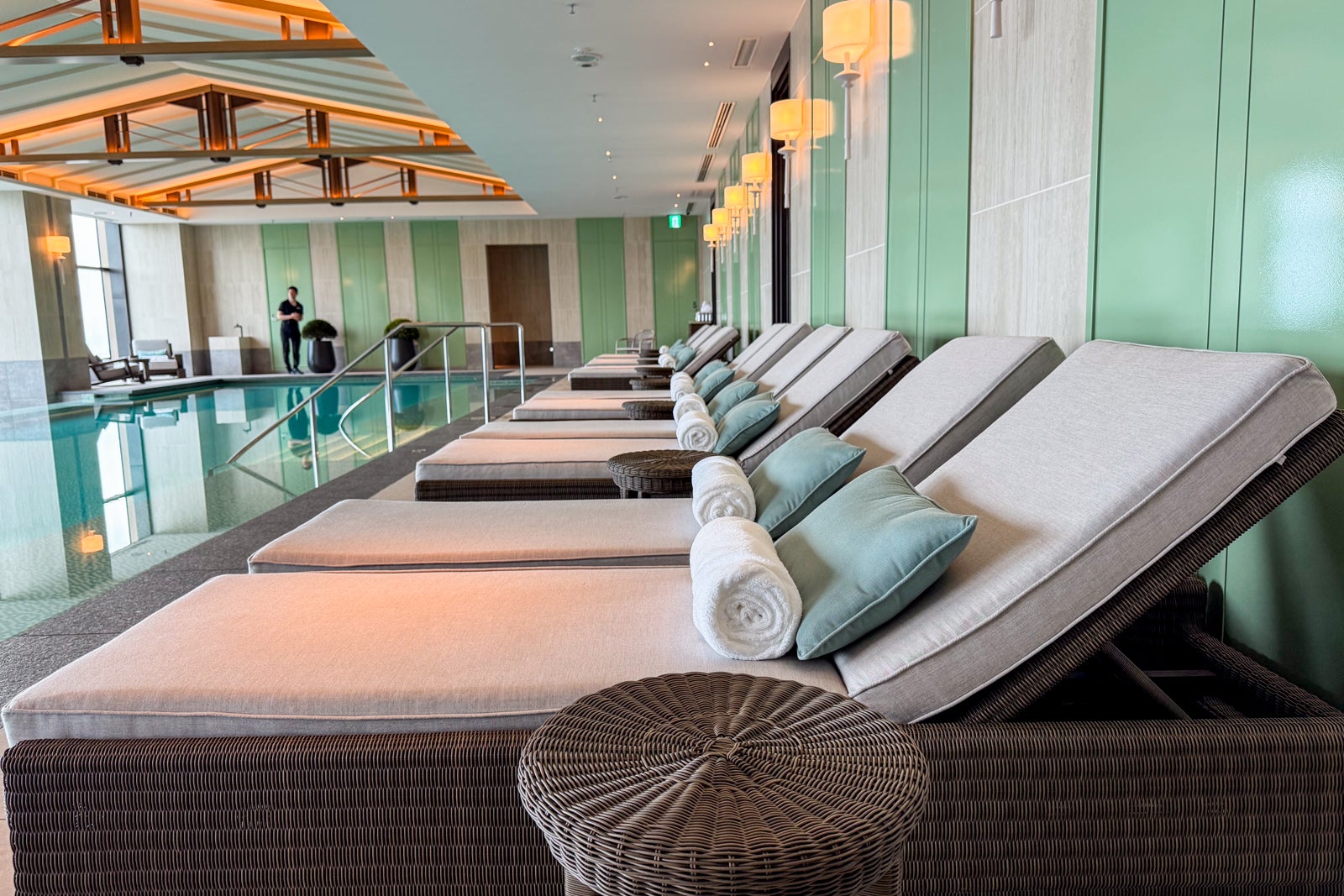
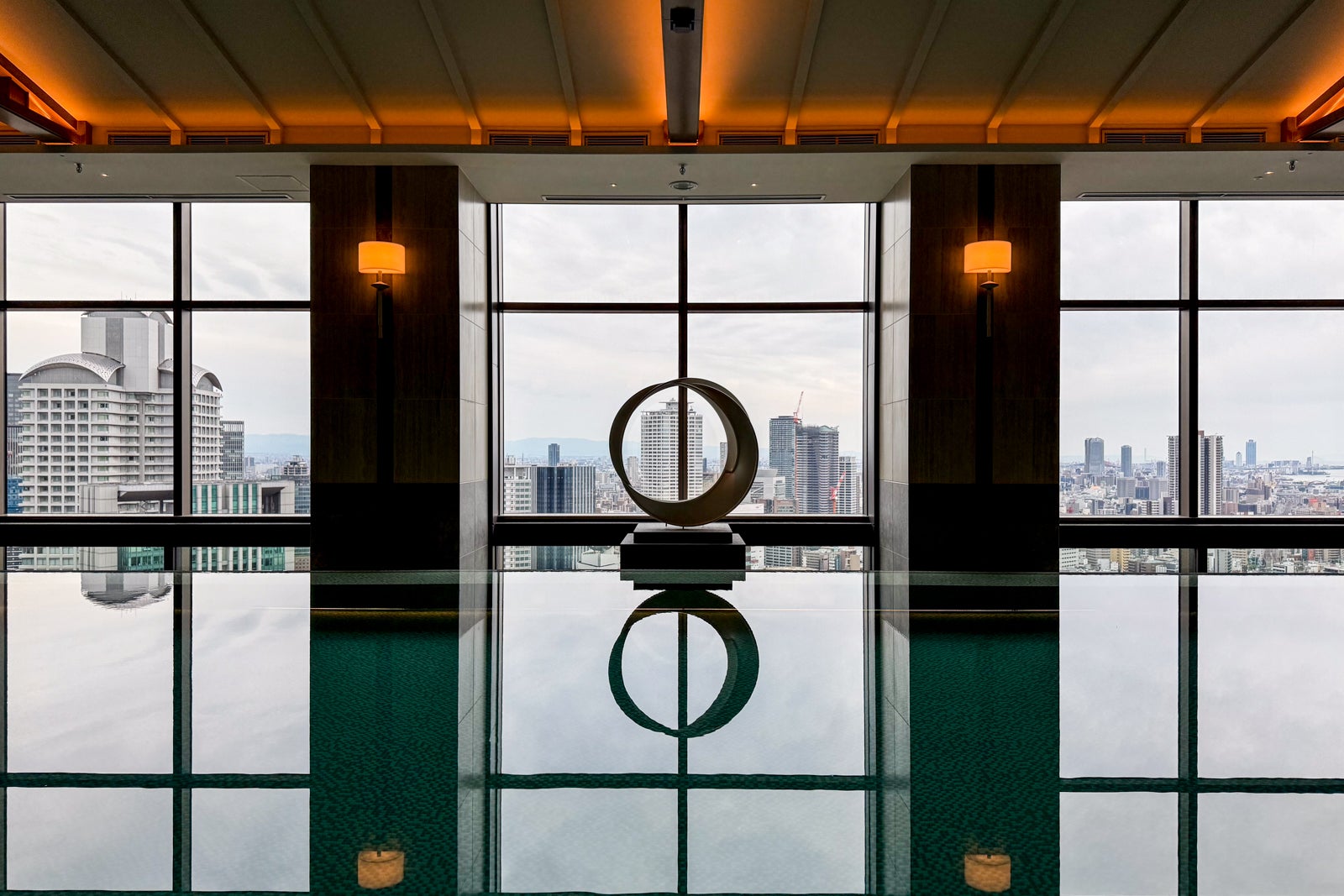
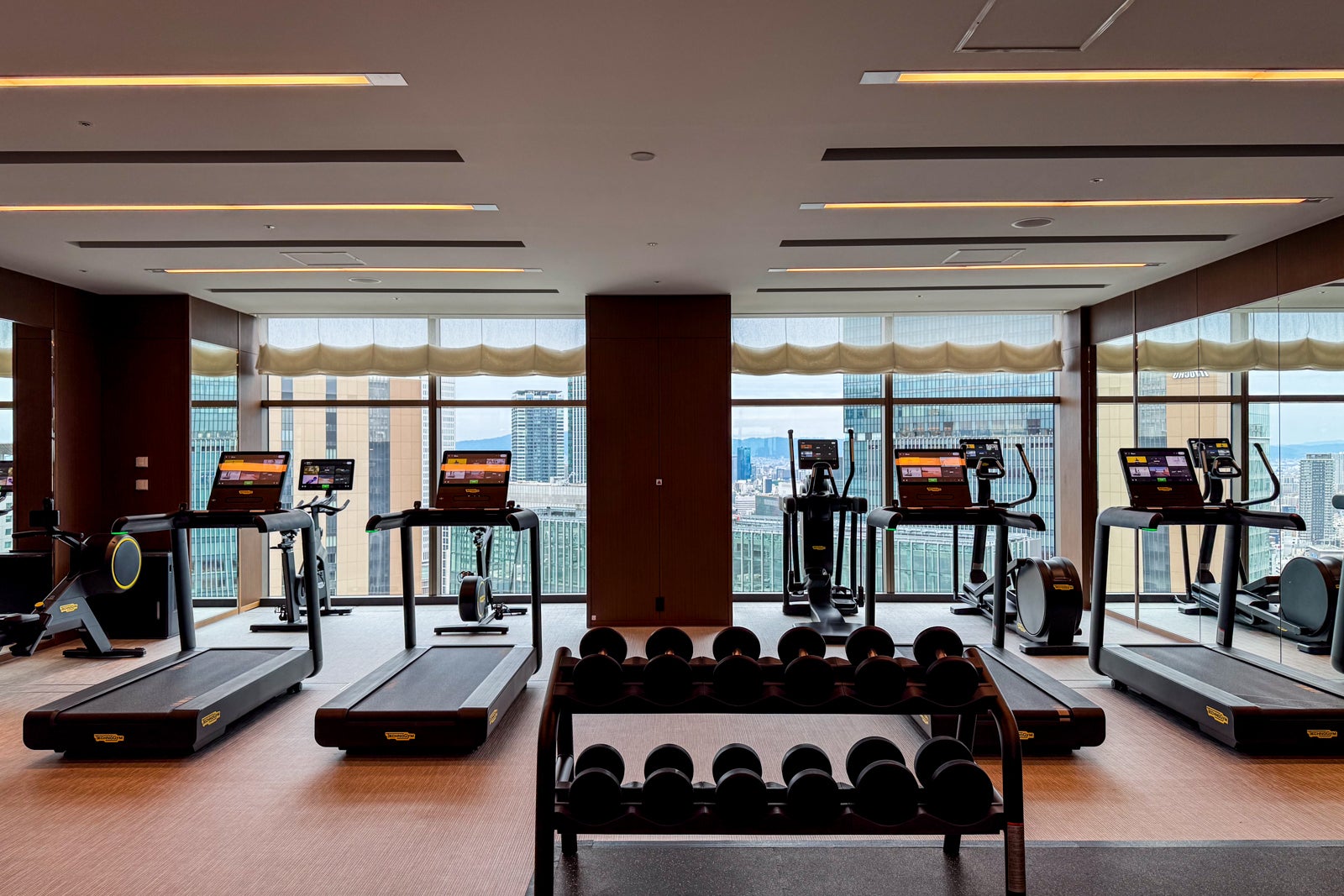
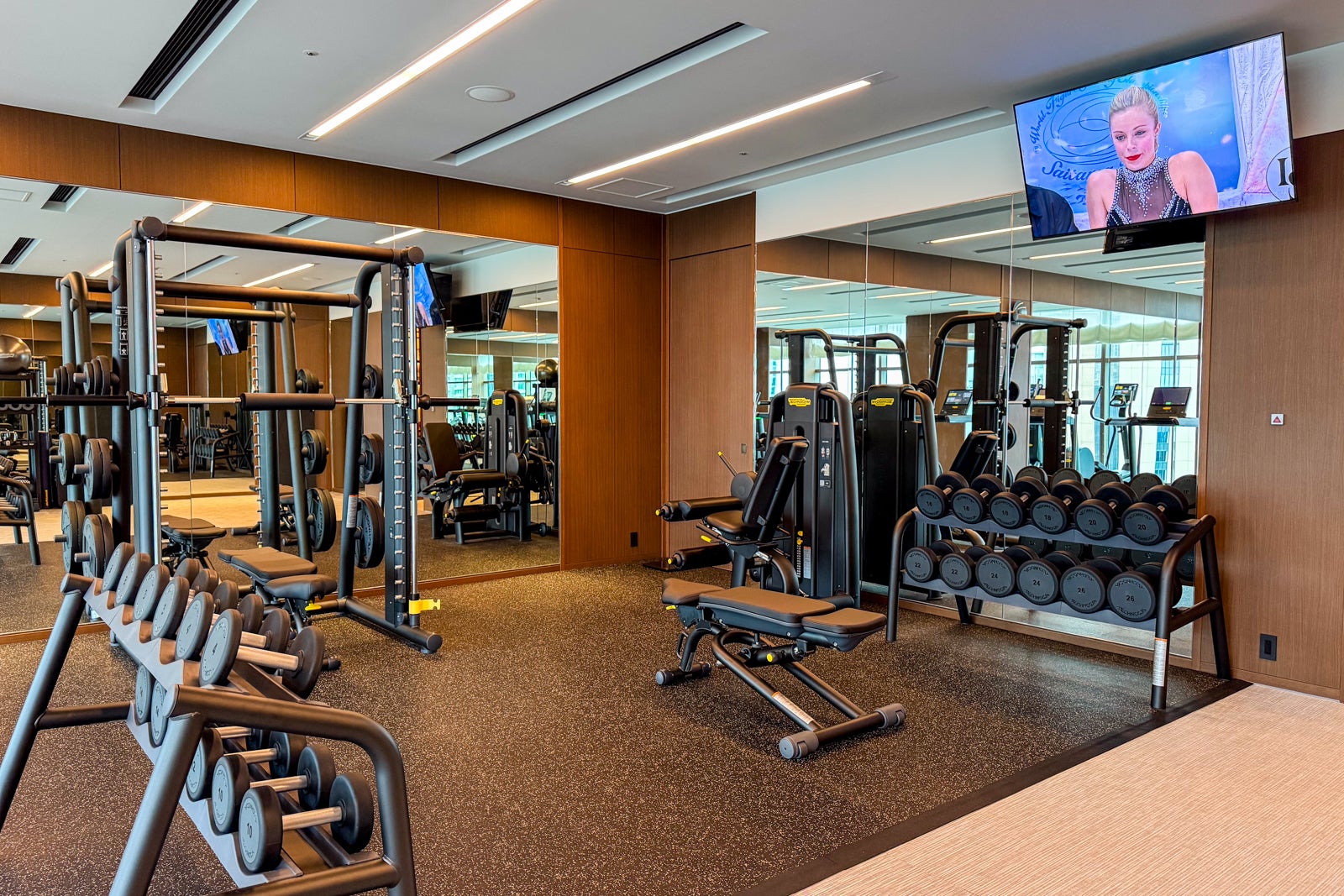
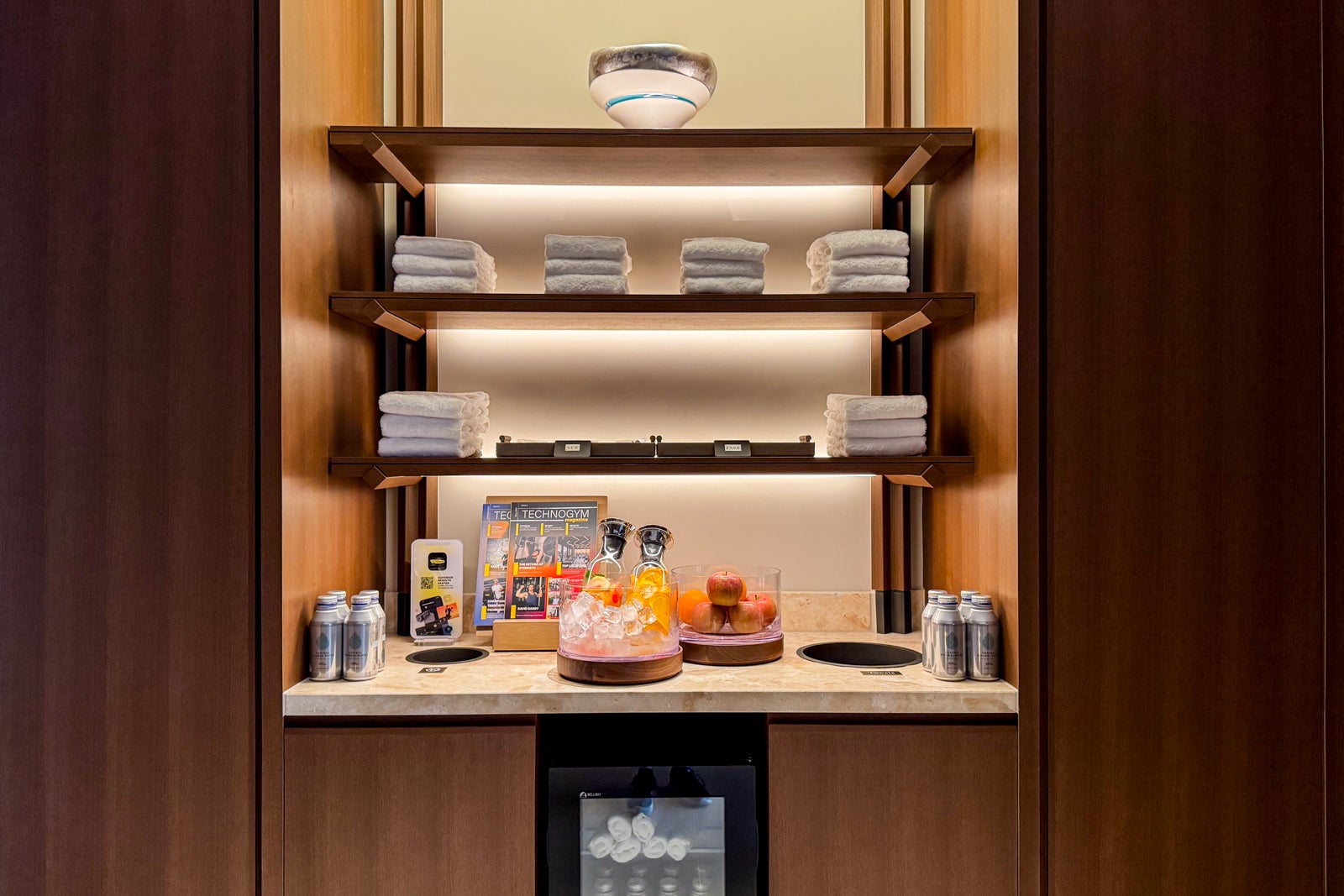
Next slide
1 of 7
ERIC ROSEN/THE POINTS GUY
0
1
2
3
4
5
6
Location and logistics
Nestled in Osaka’s vibrant Umekita district, a 20-minute metro ride north of Osaka Castle, lies the Waldorf Astoria Osaka. Forget sterile hotel lobbies; here, you’re steps from the lush Umekita Park, where locals unwind amidst the city’s buzz. Imagine strolling past sleek boutiques and enticing restaurants, all part of the Grand Green Osaka development. Craving a culinary adventure? Dive into the Time Out Market, a gourmet playground overflowing with street-food delights. Picture crispy karaage chicken, savory okonomiyaki, and a symphony of flavors waiting to be discovered. The Waldorf Astoria isn’t just a place to stay; it’s a gateway to Osaka’s modern pulse.
Previous slide

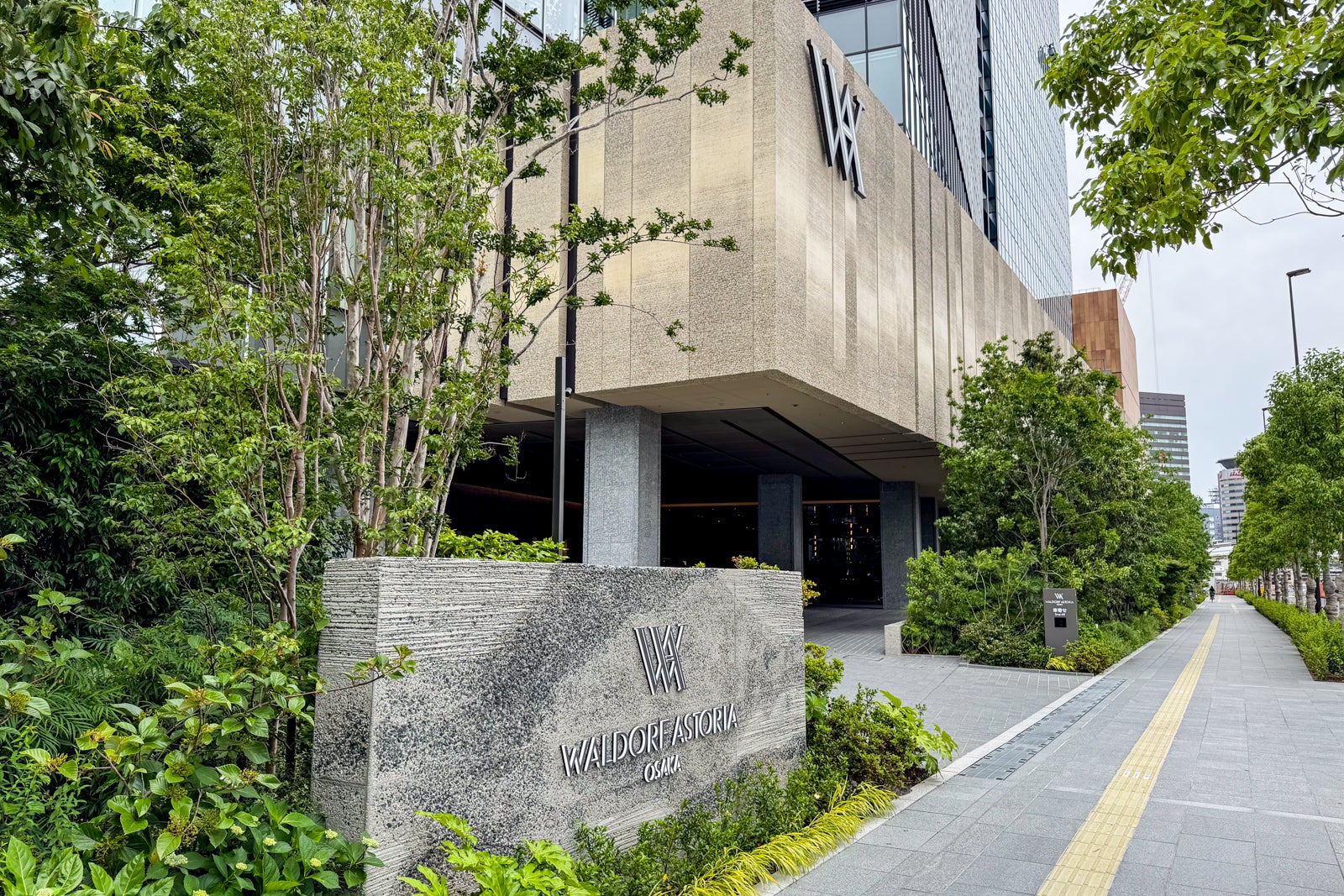
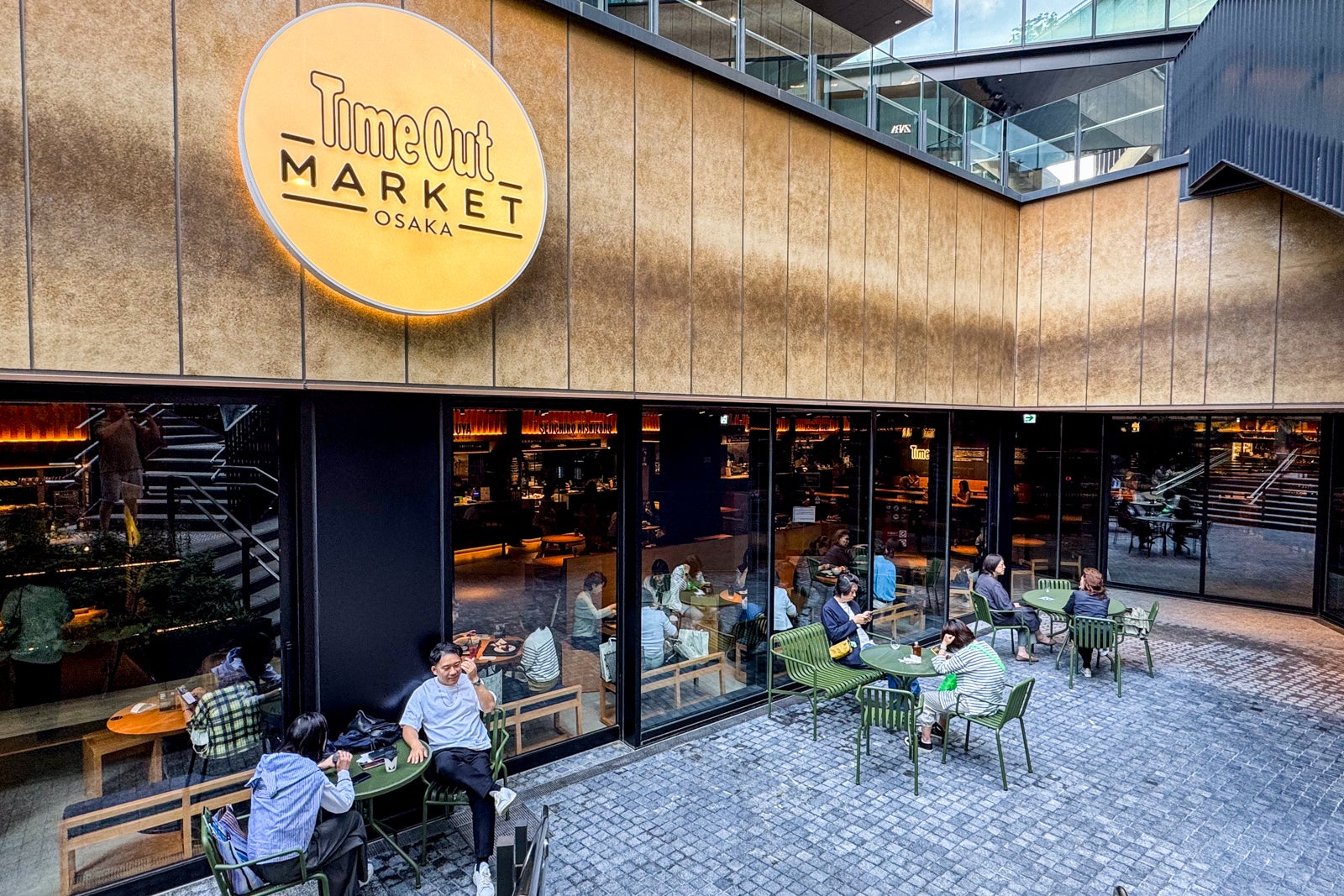
Next slide
1 of 3
ERIC ROSEN/THE POINTS GUY
0
1
2
Touchdown at Kansai International Airport (KIX)? Your hotel oasis is a breezy 45-minute Uber ride away, setting you back about $70. But savvy travelers with nimble luggage, listen up! A train whisks you to Osaka Station for a mere $20, followed by a leisurely stroll to the hotel. Osaka Station is also your launching pad to Kobe’s vibrant port, Kyoto’s ancient temples, and Nara’s friendly deer. Adventure awaits!
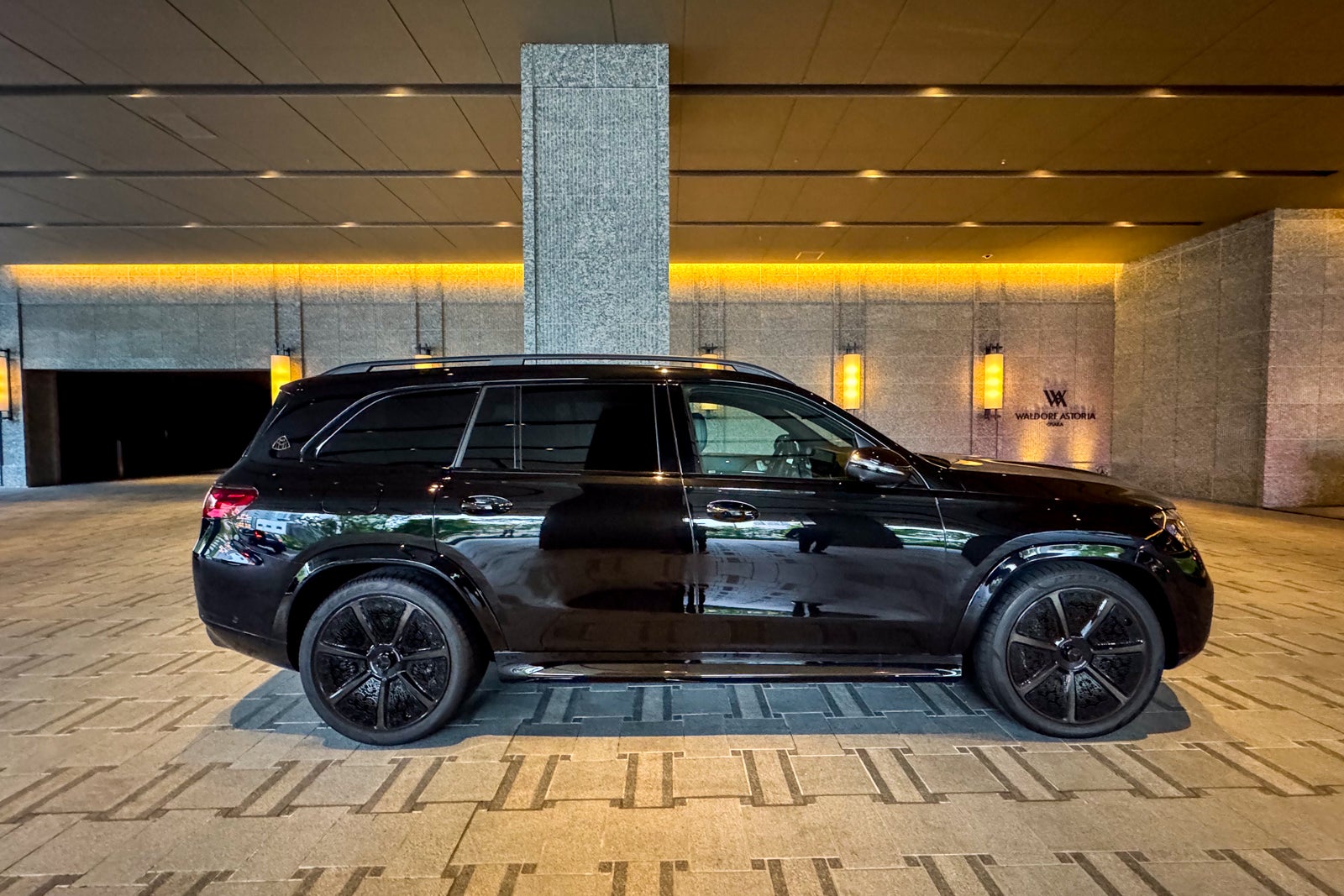
ERIC ROSEN/THE POINTS GUY
Arriving in Osaka via Shinkansen? Skip the taxi queue! For less than two dollars, hop on the metro at Shin-Osaka station and ride to Umeda. From there, stretch your legs with a short walk to your final destination – a budget-friendly adventure awaits!
The hotel has a Mercedes Maybach to ferry guests around on a first-come, first-served basis to nearby locations.
What it costs
Imagine sinking into opulent luxury in Osaka, where your nightly escape at the Waldorf Astoria begins. Experience this haven from $536, or unlock its doors with 120,000 Hilton Honors points for a King Deluxe or 2 Queen Deluxe room. A realm of unparalleled comfort awaits.
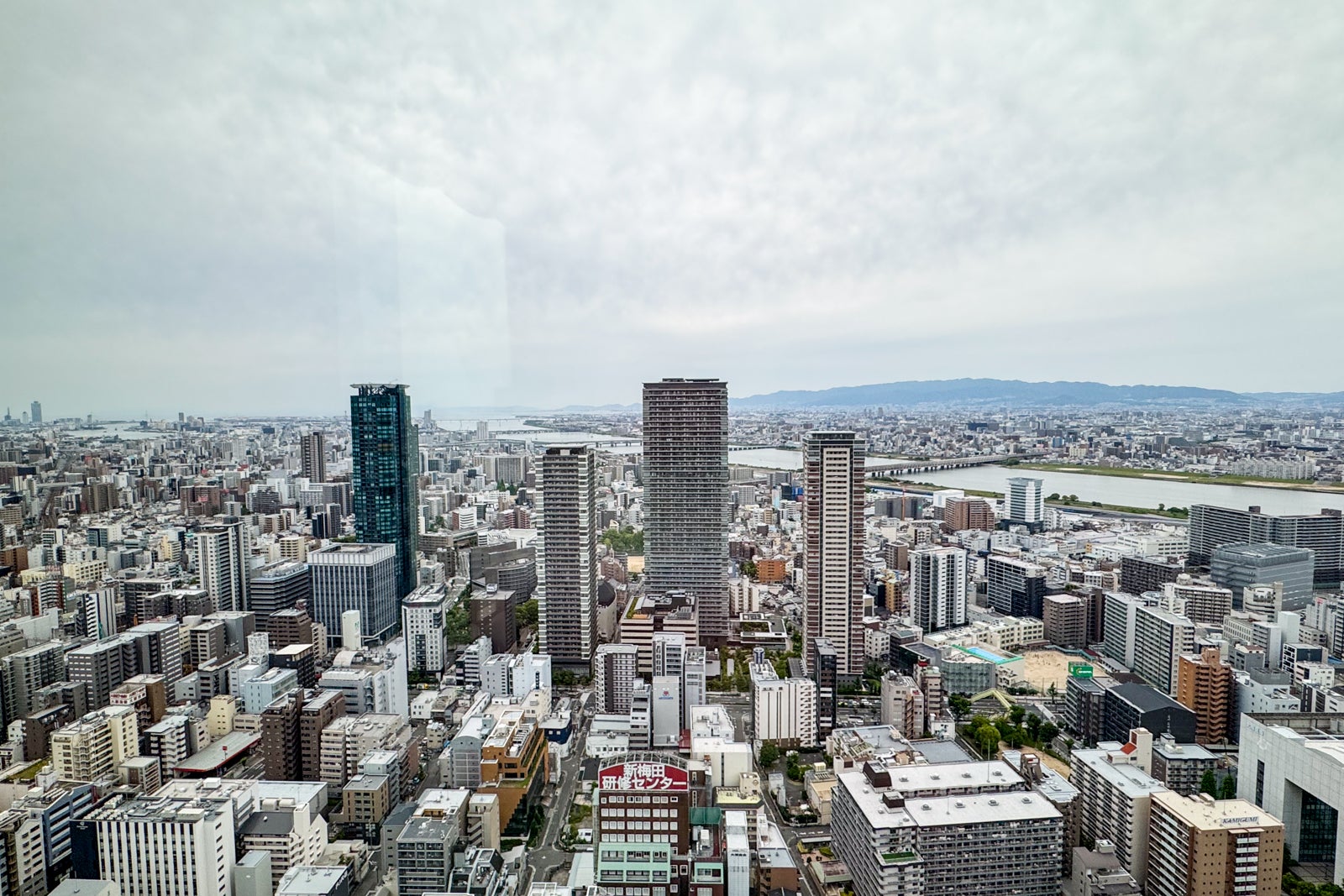
ERIC ROSEN/THE POINTS GUY
Unlock luxury at the Waldorf Astoria Osaka with a savvy credit card strategy. Maximize your stay by leveraging cards that supercharge your Hilton Honors points or instantly grant elite status. Elevate your experience before you even arrive.
- Hilton Honors American Express Surpass® Card
Unlock a world of luxury: Score 12X points per dollar at Hilton hotels and instantly elevate your status to Gold! Craving even more exclusive perks? Spend $40,000 within a year, and you’ll not only reach Diamond status, but you’ll maintain it until the end of thefollowingyear. Experience Hilton like never before.
- Hilton Honors American Express Business Card
Unlock a world of Hilton rewards: Score 12 points for every dollar you spend at Hilton hotels, and automatically jump to Gold elite status. Want even more? Spend $40,000 within a year and rocket to Diamond status, enjoying its perks through the end of the following year.
- Hilton Honors American Express Card
Unlock Hilton Silver status instantly and elevate your travel game! Plus, rack up 7X points on every dollar you spend at Hilton hotels. Want to fast-track to Gold? Spend $20,000 and enjoy Gold status through the following year.
Unlock Diamond Status and a Mountain of Hilton Honors Points!
Imagine this: Every dollar you spend at Hilton hotels transforms into 14 Hilton Honors points. With the Hilton Honors American Express Aspire Card, that dream becomes reality. But that’s not all! Prepare to be treated like royalty with automatic Diamond elite status, unlocking a world of exclusive perks and unforgettable experiences.
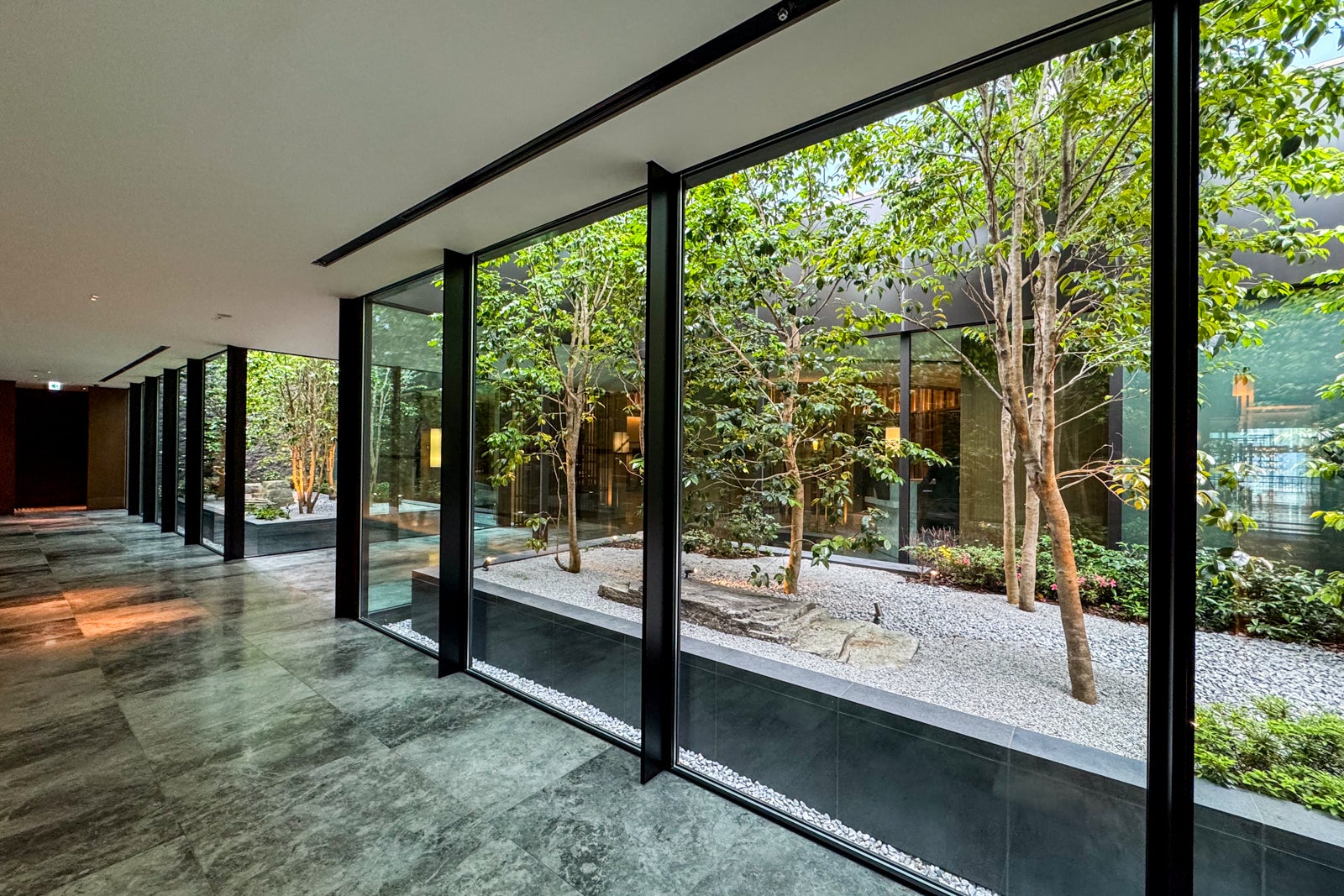
ERIC ROSEN/THE POINTS GUY
Unlock VIP treatment at this hotel with your Amex Platinum or Business Platinum card. Book through American Express Fine Hotels + Resorts and indulge in a suite of perks: think potential room upgrades, a cool $100 credit for on-property splurges (hello, cocktails!), daily breakfast on us for you and a guest, and a guaranteed lazy checkout at 4 p.m. It’s your key to elevating your stay from ordinary to extraordinary.
Accessibility
Navigating the Waldorf Astoria is a breeze for wheelchair users. Forget awkward ramps or cumbersome detours! Step right in from the street, where accessible entrances lead directly to elevators whisking you to the reception. Craving cocktails at Peacock Alley or a story at Canes & Tales? Elevators grant easy access. Guest floors and the wellness center are also just an elevator ride away. Poolside relaxation is calling your name. Sadly, there is no chairlift available.
Previous slide
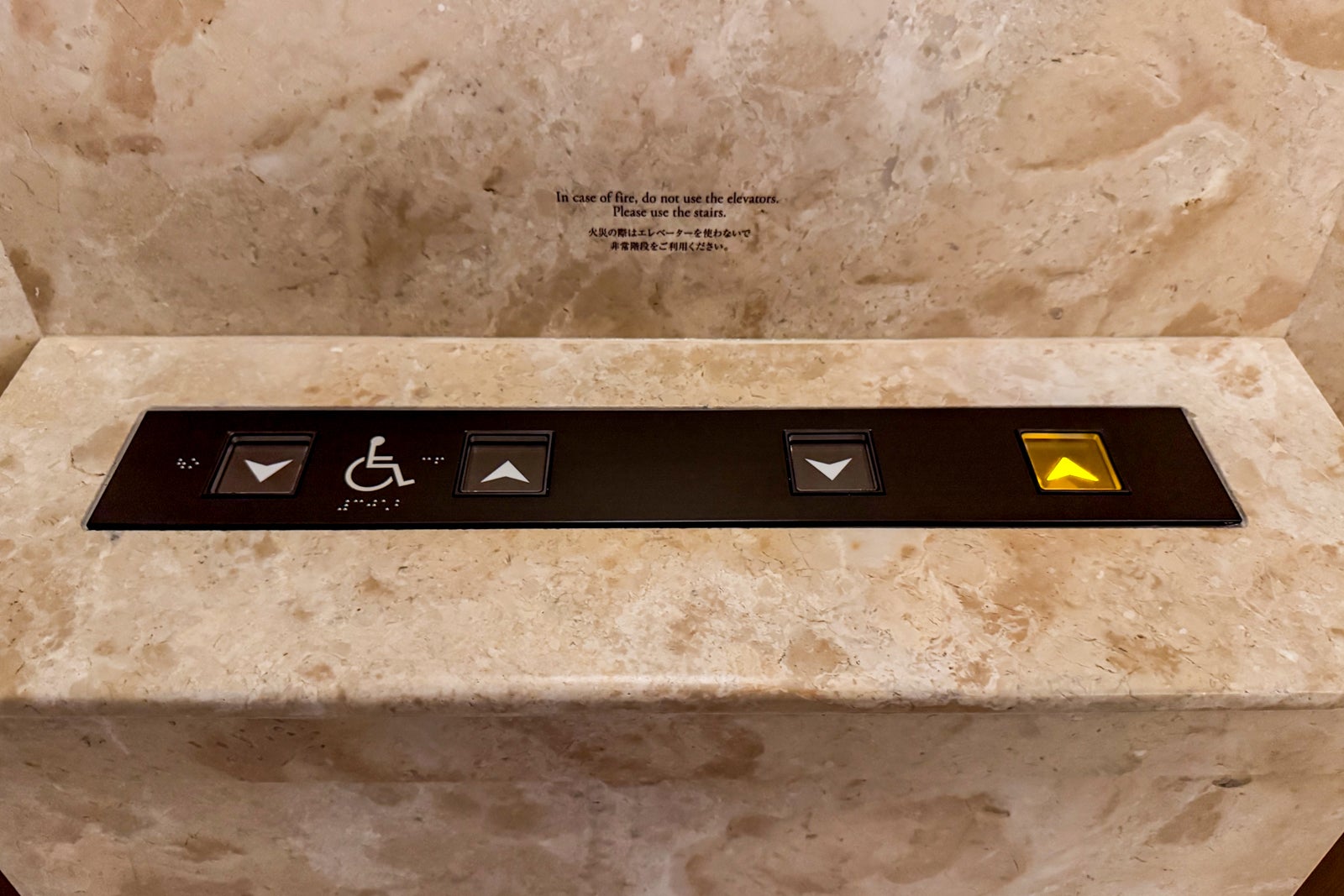
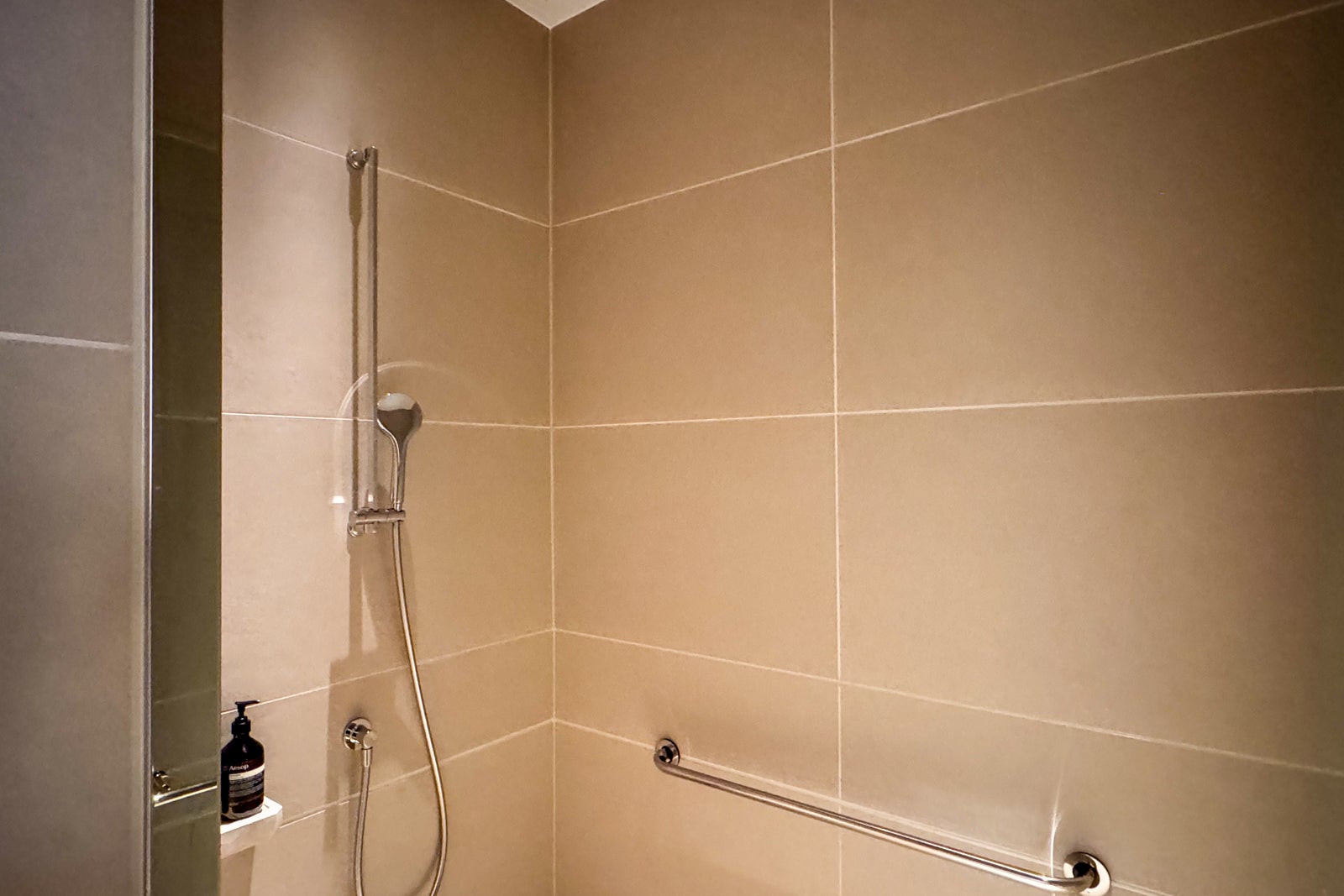
Next slide
1 of 2
ERIC ROSEN/THE POINTS GUY
0
1
Our hotel offers four exquisitely designed King Accessible rooms where comfort meets thoughtful accessibility. Imagine experiencing a stay where every detail, from the lowered spyholes offering a clear view to the elegantly appointed bathroom with supportive handrails and lowered counters, caters to your needs with effortless grace.
Bottom line
Previous slide
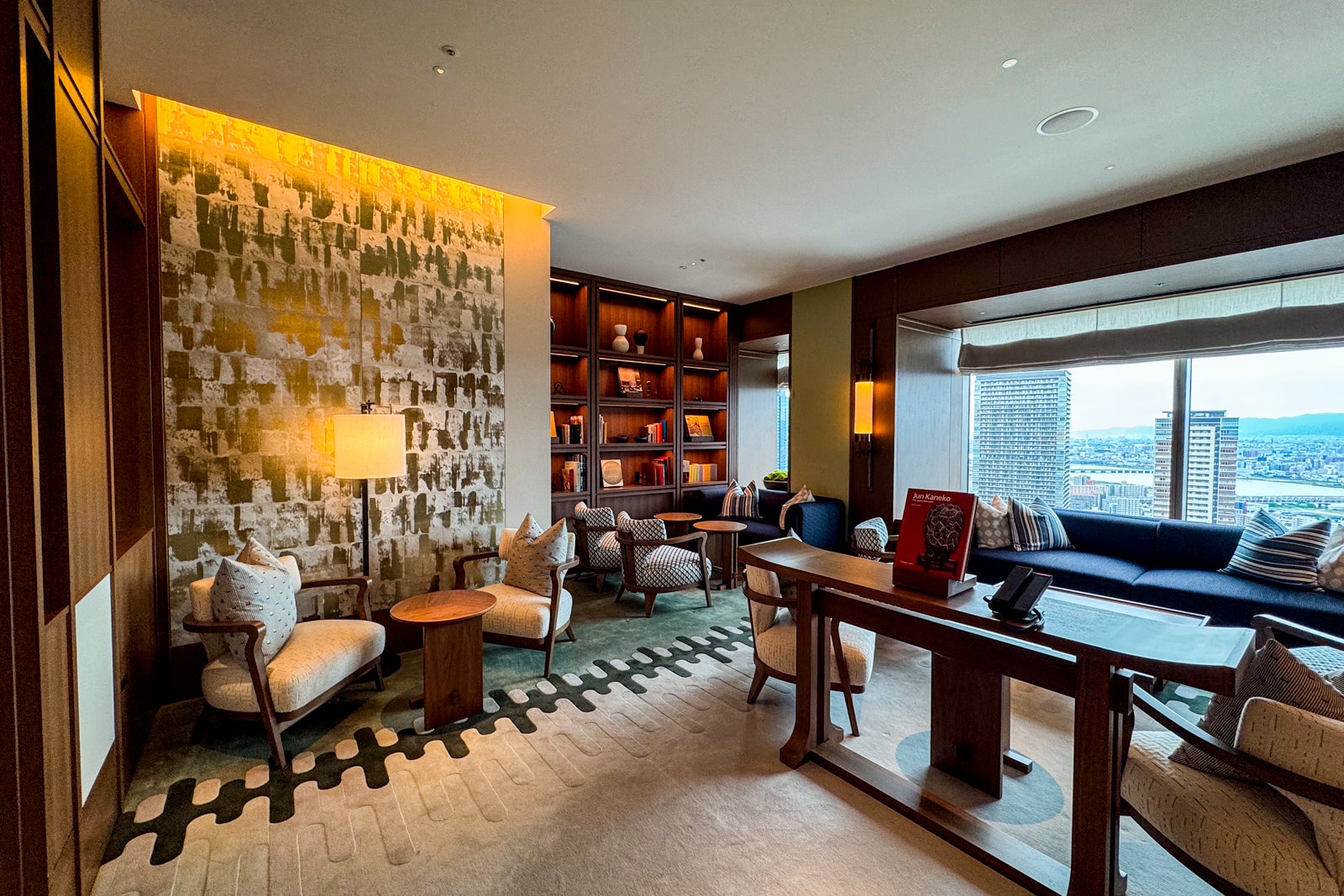
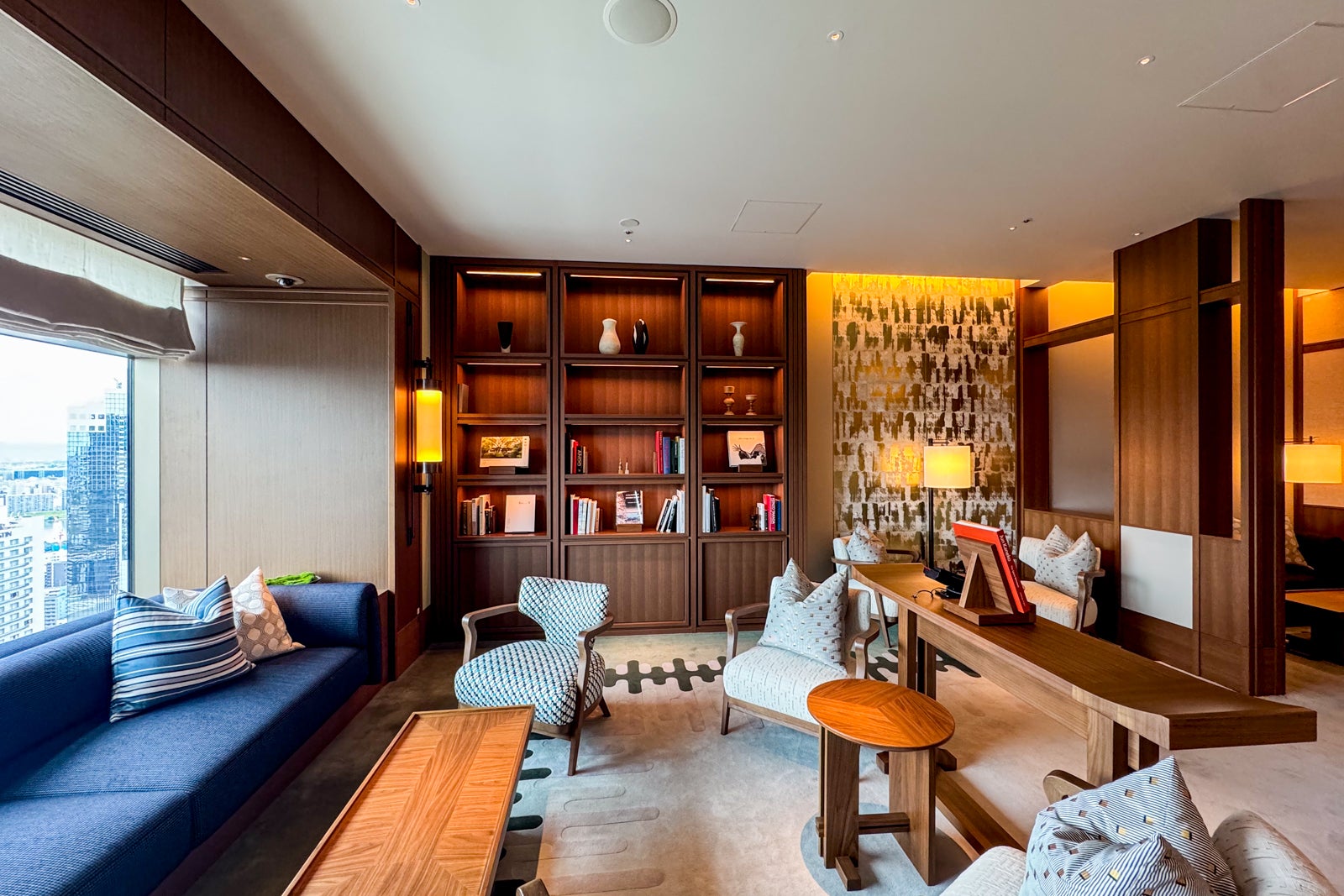
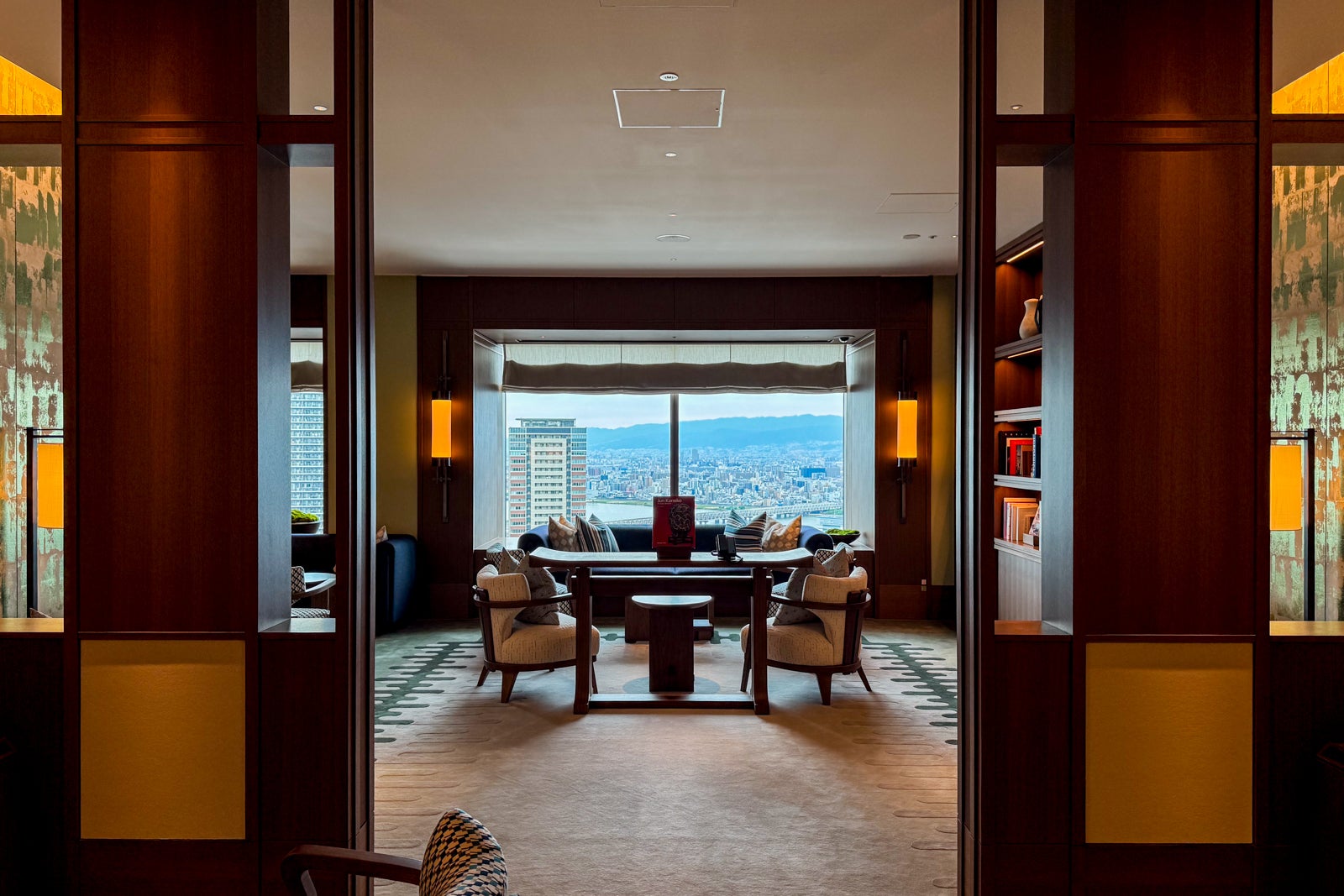
Next slide
1 of 3
ERIC ROSEN/THE POINTS GUY
0
1
2
Osaka just got a whole lot more glamorous. The legendary Waldorf Astoria has arrived, injecting a dose of timeless elegance into one of Asia’s most vibrant cities. Forget boring hotel points – think Osaka adventures fueled by savvy travel. Yes, award night prices might have nudged up, but scoring a stay here on points still unlocks serious savings. Imagine: more yen in your pocket for Michelin-starred ramen, bespoke cocktails with a view, or indulging in the Waldorf’s own decadent delights. The Waldorf Astoria Osaka isn’t just a place to sleep; it’s your passport to a richer Osaka experience.
Related reading:
- The best Waldorf Astoria hotels and resorts in the world
- The award travelers guide to Hilton Honors
- How to choose the best Hilton credit card for you
- Hilton Honors elite status: What it is and how to earn it
- The best hotel credit cards
- The best premium credit cards: A side-by-side comparison
Thanks for reading First look: Review of Waldorf Astoria Osaka
